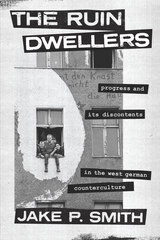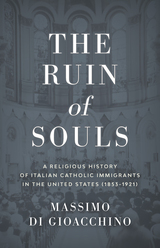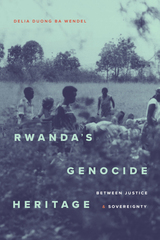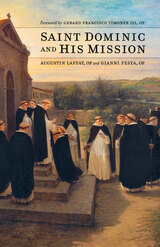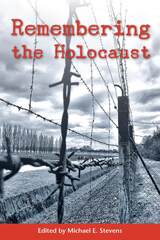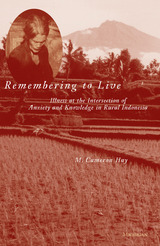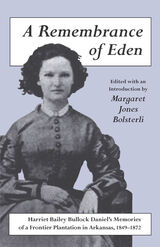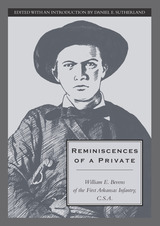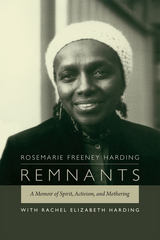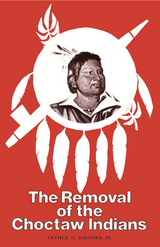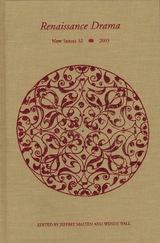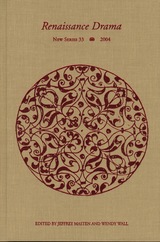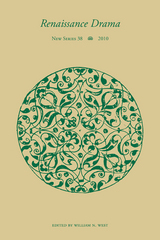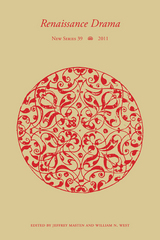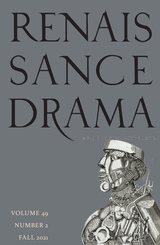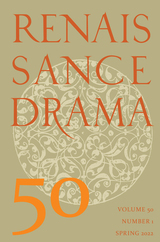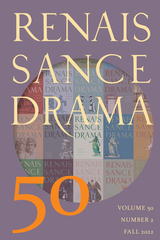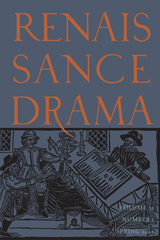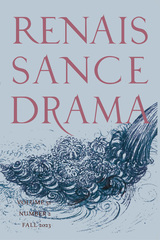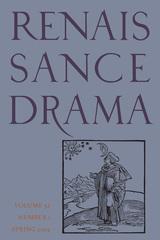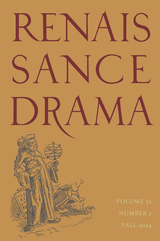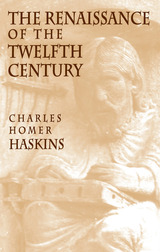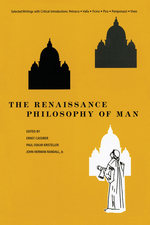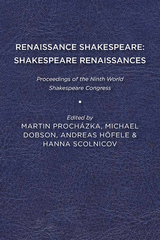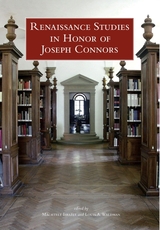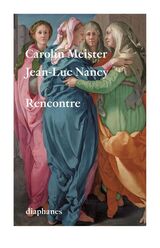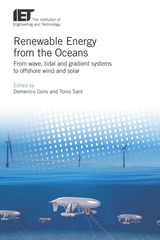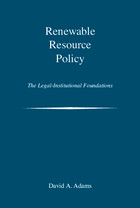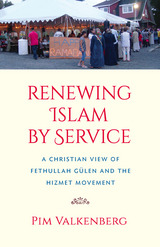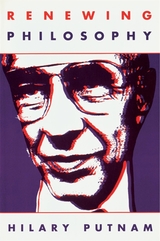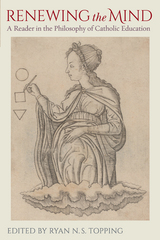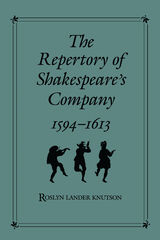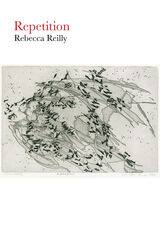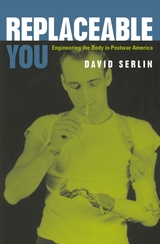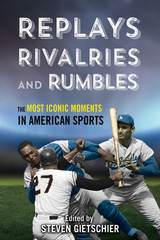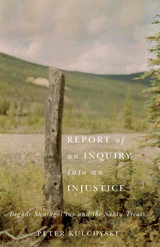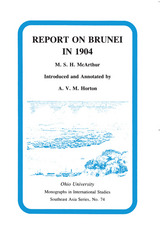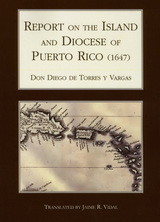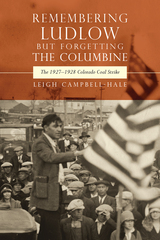 Remembering Ludlow but Forgetting the Columbine: The 1927-1928 Colorado Coal Strike
by Leigh Campbell-Hale
University Press of Colorado, 2025 Mining the American West
Remembering Ludlow but Forgetting the Columbine examines the causes, context, and legacies of the 1927 Columbine Massacre in relation to the history of labor organizing and coal mining in both Colorado and the United States. While historians have written prolifically about the 1914 Ludlow Massacre, there has been a lack of attention to the violent event remembered now as the Columbine Massacre in which police shot and killed six striking coal miners and wounded sixty more protestors during the 1927–1928 Colorado Coal Strike, even though its aftermath exerted far more influence upon subsequent national labor policies.
This volume is a comparative biography of three key participants before, during, and after the strike: A. S. Embree, the IWW strike leader; Josephine Roche, the owner of the coal mine property where the Columbine Massacre took place; and Powers Hapgood, who came to work for Roche four months after she signed the 1928 United Mine Worker’s contract. The author demonstrates the significance of this event to national debates about labor during the period, as well as changes and continuities in labor history starting in the progressive era and continuing with 1930s New Deal labor policies and through the 1980s.
This examination of the 1927–1928 Colorado Coal Strike reorients understandings of labor history from the 1920s through the 1960s and the construction of public memory—and forgetting—surrounding those events. Remembering Ludlow but Forgetting the Columbine appeals to academic and general readers interested in Colorado history, labor history, mining history, gender studies, memory, and historiography.
Remembering Nicaea: The Ecclesiastical History of Anonymous Cyzicenus
Martin Shedd
SBL Press, 2024 Remembering Nicaea presents the first complete English translation of Anonymous Cyzicenus’s Ecclesiastical History, the fullest surviving account of the Council of Nicaea (325 CE). The introduction features new arguments for the dating of the text, a discussion of Anonymous Cyzicenus’s sources and their modification, and an evaluation of the larger purpose of the Ecclesiastical History as a unique and instructive source for the christological controversies of the fifth century CE. Appendixes include the text of the Byzantine epistolary supplement found in all manuscripts, the Pinakes, testimony about the work from the ninth-century patriarch of Constantinople, Photius, and the prefatory letter to the 1599 critical edition. This unique combination of history and legend preserves otherwise-lost sources for students and scholars of church history.
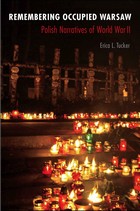 Remembering Occupied Warsaw: Polish Narratives of World War II
Erica L. Tucker
Northern Illinois University Press, 2011
Offering a rare glimpse into the lives of those who lived through the German occupation of Poland’s capital, this important ethnography explores how elderly residents of Warsaw recollect, narrate, and commemorate their experiences, thus showing how the cultural legacies of the occupation reveal themselves in contemporary Polish society.
The individuals who are the focus of this study, all long-time residents of the Warsaw neighborhood Zoliborz, responded to the daily deprivations and brutality of the German occupation by joining branches of the Polish underground, ultimately participating in the Warsaw Uprising of 1944—during which their neighborhood was burned, but not destroyed—as soldiers, couriers, and medics. Using life histories and ethnographic fieldwork, Tucker examines the ways that her informants
recovered from the rupture of war, arguing that this process was connected to efforts to rebuild the city itself.
Remembering Occupied Warsaw makes an important contribution to studies of collective memory. A moving work of oral history, this book will appeal to scholars and students of anthropology, sociology, and East European studies, as well as general readers interested in Polish history.
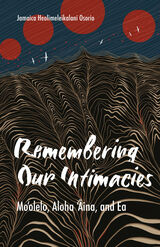 Remembering Our Intimacies: Mo'olelo, Aloha 'Aina, and Ea
Jamaica Heolimeleikalani Osorio
University of Minnesota Press, 2021 Recovering Kānaka Maoli (Native Hawaiian) relationality and belonging in the land, memory, and body of Native Hawai’i
Hawaiian “aloha ʻāina” is often described in Western political terms—nationalism, nationhood, even patriotism. In Remembering Our Intimacies, Jamaica Heolimeleikalani Osorio centers in on the personal and embodied articulations of aloha ʻāina to detangle it from the effects of colonialism and occupation. Working at the intersections of Hawaiian knowledge, Indigenous queer theory, and Indigenous feminisms, Remembering Our Intimacies seeks to recuperate Native Hawaiian concepts and ethics around relationality, desire, and belonging firmly grounded in the land, memory, and the body of Native Hawai’i. Remembering Our Intimacies argues for the methodology of (re)membering Indigenous forms of intimacies. It does so through the metaphor of a ‘upena—a net of intimacies that incorporates the variety of relationships that exist for Kānaka Maoli. It uses a close reading of the moʻolelo (history and literature) of Hiʻiakaikapoliopele to provide context and interpretation of Hawaiian intimacy and desire by describing its significance in Kānaka Maoli epistemology and why this matters profoundly for Hawaiian (and other Indigenous) futures. Offering a new approach to understanding one of Native Hawaiians’ most significant values, Remembering Our Intimacies reveals the relationships between the policing of Indigenous bodies, intimacies, and desires; the disembodiment of Indigenous modes of governance; and the ongoing and ensuing displacement of Indigenous people.
 Remembering Paradise: Nativism and Nostalgia in Eighteenth-Century Japan
Peter Nosco
Harvard University Press, 1990 Remembering Paradise studies three major eighteenth-century nativist scholars in Japan: Kada no Azumamaro, Kamo no Mabuchi, and the celebrated Motoori Norinaga. Peter Nosco demonstrates that these scholars, frequently depicted as the formulators of rabid xenophobia, were intellectuals engaged in a quest for meaning, wholeness, and solace in what they perceived to be disordered times. He traces the emergence and development of their philosophies, identifying elements of continuity into the eighteenth century from the singular Confucian-nativist discourse of the seventeenth century. He also describes the rupture between nativism and Confucianism at the start of the eighteenth century and the quest for ancient, distinctly Japanese values.
The emphasis on patriotism and nostalgia in the works of these three scholars may have relevance to the kind of nationalism emerging in Japan in the 1980s, manifested in a renewed interest in visiting one's home place and in the history and culture of the seventeenth through mid-nineteenth centuries. The current fusion of nationalism and nostalgia can perhaps be better understood through Nosco's analysis of comparable sentiments that were important in earlier times.
Remembering Paris in Text and Film: Echoes of Baudelaire in Text and on Screen
Edited by Alistair Rolls and Marguerite Johnson
Intellect Books, 2021 An investigation of Paris as an urban space and a poetic site of remembrance.
Experiencing urban space conjures visions of the past alongside contemplation of the present. This edited volume investigates this feeling of seeing double by investigating Paris—a city that has come to embody the tension of this sensation—through a dual lens of nostalgia and modernity.
Contributors survey Paris in film, poetry, and prose in the nineteenth and twentieth centuries, presenting the city as both a concrete reality and as a collection of the myths associated with it. Interdisciplinary and deeply researched, the essays distill complex concepts of the urban, the textual, and the modern for a wide readership.
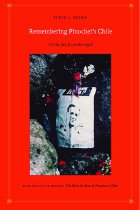 Remembering Pinochet's Chile: On the Eve of London 1998
Steve J. Stern
Duke University Press, 2004 During the two years just before the 1998 arrest in London of General Augusto Pinochet, the historian Steve J. Stern had been in Chile collecting oral histories of life under Pinochet as part of an investigation into the form and meaning of memories of state-sponsored atrocities. In this compelling work, Stern shares the recollections of individual Chileans and draws on their stories to provide a framework for understanding memory struggles in history.
“A thoughtful, nuanced study of how Chileans remember the traumatic 1973 coup by Augusto Pinochet against Salvador Allende and the nearly two decades of military government that followed. . . . In light of the recent revelations of American human rights abuses of Iraqi prisoners, [Stern’s] insights into the legacies of torture and abuse in the Chilean prisons of the 1970s certainly have contemporary significance for any society that undergoes a national trauma.”—Publishers Weekly
“This outstanding work of scholarship sets a benchmark in the history of state terror, trauma, and memory in Latin America.”—Thomas Miller Klubock, American Historical Review “This is a book of uncommon depth and introspection. . . . Steve J. Stern has not only advanced the memory of the horrors of the military dictatorship; he has assured the place of Pinochet’s legacy of atrocity in our collective conscience.”—Peter Kornbluh, author of The Pinochet File: A Declassified Dossier on Atrocity and Accountability “Steve J. Stern’s book elegantly recounts the conflicted recent history of Chile. He has found a deft solution to the knotty problem of evenhandedness in representing points of view so divergent they defy even the most careful attempts to portray the facts of the Pinochet period. He weaves a tapestry of memory in which narratives of horror and rupture commingle with the sincere perceptions of Chileans who remember Pinochet’s rule as salvation. The facts are there, but more important is the understanding we gain by knowing how ordinary Chileans—Pinochet’s supporters and his victims—work through their unresolved past.”—John Dinges, author of The Condor Years: How Pinochet and His Allies Brought Terrorism to Three Continents
 Remembering Roadside America: Preserving the Recent Past as Landscape and Place
John A. Jakle
University of Tennessee Press, 2011 The use of cars and trucks over the past century has remade American geography—pushing big cities ever outward toward suburbanization, spurring the growth of some small towns while hastening the decline of others, and spawning a new kind of commercial landscape marked by gas stations, drive-in restaurants, motels, tourist attractions, and countless other retail entities that express our national love affair with the open road. By its very nature, this landscape is ever changing, indeed ephemeral. What is new quickly becomes old and is soon forgotten.
In this absorbing book, John Jakle and Keith Sculle ponder how “Roadside America” might be remembered, especially since so little physical evidence of its earliest years survives. In straightforward and lively prose, supplemented by copious illustrations—historic and modern photographs, advertising postcards, cartoons, roadmaps—they survey the ways in which automobility has transformed life in the United States. Asking how we might best commemorate and preserve this part of our past—which has been so vital economically and politically, so significant to the cultural aspirations of ordinary Americans, yet so often ignored by scholars who dismiss it as kitsch—they propose the development of an actual outdoor museum that would treat seriously the themes of our roadside history.
Certainly, museums have been created for frontier pioneering, the rise of commercial agriculture, and the coming of water- and steam-powered industrialization and transportation, especially the railroad. Is now not the time, the authors ask, for a museum forcefully exploring the automobile’s emergence and the changes it has brought to place and landscape? Such a museum need not deny the nostalgic appeal of roadsides past, but if done properly, it could also tell us much about what the authors describe as “the most important kind of place yet devised in the American experience.”
John A. Jakle is Emeritus Professor of Geography at the University of Illinois, Urbana-Champaign. Keith A. Sculle is the former head of research and education at the Illinois Historic Preservation Agency. They have coauthored such books as America’s Main Street Hotels: Transiency and Community in the Early Automobile Age; Motoring: The Highway Experience in America; Fast Food: Roadside Restaurants in the Automobile Age; and The Gas Station in America.
 Remembering Suffering and Resistance: Memory Politics and the Serbian Orthodox Church
Karin Roginer Hofmeister
Central European University Press, 2024 Assessing issues related to the Orthodox Church from an academic, secular point of view is a sensitive matter. However, by tracing and interpreting the engagement of the Serbian Church with the memory of Serbian heroic victimhood in World War II through a kind of “methodological agnosticism,” this volume has managed to tackle the subtle topic in a very delicate and value-neutral way. Arguing that the search for a collective memory is particularly urgent in the face of societal uncertainty and that religious institutions often use their memory potential to reaffirm their public relevance, the book examines the motivations, forms, strategies, and outcomes of a wide range of mnemonic activities the Serbian Orthodox Church engaged in following the upheavals caused by the collapse of Yugoslav socialism, the violent dissolution of the country, and the fall of the Milošević regime. These activities, taking place within the memory fields framed by the post-socialist, post-conflict, and post-secular horizons, took liturgical and non-liturgical forms, often involving a hybrid fusion of the two. As a result of this mnemonic endeavor, the author argues, the Church was successful in reasserting its power and legitimacy in the public sphere of post-2000 Serbia.
Remembering Tanizaki Jun’ichiro and Matsuko: Diary Entries, Interview Notes, and Letters, 1954-1989
Anthony H. Chambers
University of Michigan Press, 2017 Remembering Tanizaki Jun’ichirō and Matsuko provides previously unpublished memories, anecdotes, and insights into the lives, opinions, personalities, and writings of the great novelist Tanizaki Jun’ichirō (1886–1965) and his wife Matsuko (1903–1991), gleaned from the diaries of Edward Seidensticker and two decades of Anthony Chambers’s conversations with Mrs. Tanizaki and others who were close to the Tanizaki family.
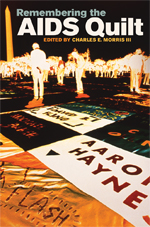 Remembering the AIDS Quilt
Charles E. Morris III
Michigan State University Press, 2011 A collaborative creation unlike any other, the Names Project Foundation’s AIDS Memorial Quilt has played an invaluable role in shattering the silence and stigma that surrounded the epidemic in the first years of its existence. Designed by Cleve Jones, the AIDS Quilt is the largest ongoing community arts project in the world. Since its conception in 1987, the Quilt has transformed the cultural and political responses to AIDS in the U.S. Representative of both marginalized and mainstream peoples, the Quilt contains crucial material and symbolic implications for mourning the dead, and the treatment and prevention of AIDS. However, the project has raised numerous questions concerning memory, activism, identity, ownership, and nationalism, as well as issues of sexuality, race, class, and gender. As thought-provoking as the Quilt itself, this diverse collection of essays by ten prominent rhetorical scholars provides a rich experience of the AIDS Quilt, incorporating a variety of perspectives, critiques, and interpretations.
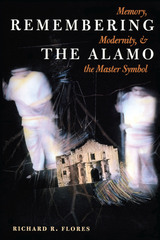 Remembering the Alamo: Memory, Modernity, and the Master Symbol
By Richard R. Flores
University of Texas Press, 2002 "Remember the Alamo!" reverberates through Texas history and culture, but what exactly are we remembering? Over nearly two centuries, the Mexican victory over an outnumbered band of Alamo defenders has been transformed into an American victory for the love of liberty. Why did the historical battle of 1836 undergo this metamorphosis in memory and mythology to become such a potent master symbol in Texan and American culture? In this probing book, Richard Flores seeks to answer that question by examining how the Alamo's transformation into an American cultural icon helped to shape social, economic, and political relations between Anglo and Mexican Texans from the late nineteenth to the mid-twentieth centuries. In the first part of the book, he looks at how the attempts of heritage society members and political leaders to define the Alamo as a place have reflected struggles within Texas society over the place and status of Anglos and Mexicans. In the second part, he explores how Alamo movies and the transformation of Davy Crockett into an Alamo hero/martyr have advanced deeply racialized, ambiguous, and even invented understandings of the past.
 Remembering the Cajun Past: Memory, Race, and the Politics of Public History in Louisiana
Marc David
University of Massachusetts Press, 2025 Exploring how public history creates collective memory of this white ethnic group through memorials
Cajuns arrived in southern Louisiana in the 18th century after the British exiled them from eastern Canada. Also known as Acadians, they retain a unique dialect of French, and their distinctive music, food, and other cultural traits characterized them as an ethnic group. Until the 1960s, authorities viewed them as a serious problem, allegedly blocking the state’s progress as they clung to their antiquated ways. Few Cajun residents in the region remembered the remote past of their ancestors, but by the 1970s, organizations ranging from local non-profits to the National Park Service created sites that commemorated their history, such as the Acadian Memorial in St. Martinville, allowing Cajuns to connect their lives to their past and claim it as their own.
In Remembering the Cajun Past, anthropologist Marc David studies the cultural and political dynamics that reconfigured Cajun memory and identity. Focusing on St. Martinville and the Acadian Memorial, he explores how authorities changed their minds about Cajuns and demonstrates how Cajuns’ historical memories took shape. Part ethnography and part history, David examines the racial aspects of the Memorial’s creation in the wake of the Civil Rights movement and the growth of a new Cajun history, one through which individual Cajuns rejected the label’s connotation of “white trash” and embraced belonging within a storied white ethnic group. Based on decades of fieldwork and deep engagement with public history practices, David explores how historical memory and the historic sites that foster it are intertwined with the politics of civic life.
 Remembering the Cajun Past: Memory, Race, and the Politics of Public History in Louisiana
Marc David
University of Massachusetts Press, 2025 Exploring how public history creates collective memory of this white ethnic group through memorials
Cajuns arrived in southern Louisiana in the 18th century after the British exiled them from eastern Canada. Also known as Acadians, they retain a unique dialect of French, and their distinctive music, food, and other cultural traits characterized them as an ethnic group. Until the 1960s, authorities viewed them as a serious problem, allegedly blocking the state’s progress as they clung to their antiquated ways. Few Cajun residents in the region remembered the remote past of their ancestors, but by the 1970s, organizations ranging from local non-profits to the National Park Service created sites that commemorated their history, such as the Acadian Memorial in St. Martinville, allowing Cajuns to connect their lives to their past and claim it as their own.
In Remembering the Cajun Past, anthropologist Marc David studies the cultural and political dynamics that reconfigured Cajun memory and identity. Focusing on St. Martinville and the Acadian Memorial, he explores how authorities changed their minds about Cajuns and demonstrates how Cajuns’ historical memories took shape. Part ethnography and part history, David examines the racial aspects of the Memorial’s creation in the wake of the Civil Rights movement and the growth of a new Cajun history, one through which individual Cajuns rejected the label’s connotation of “white trash” and embraced belonging within a storied white ethnic group. Based on decades of fieldwork and deep engagement with public history practices, David explores how historical memory and the historic sites that foster it are intertwined with the politics of civic life.
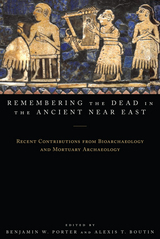 Remembering the Dead in the Ancient Near East: Recent Contributions from Bioarchaeology and Mortuary Archaeology
Benjamin W. Porter
University Press of Colorado, 2016 Remembering the Dead in the Ancient Near East is among the first comprehensive treatments to present the diverse ways in which ancient Near Eastern civilizations memorialized and honored their dead, using mortuary rituals, human skeletal remains, and embodied identities as a window into the memory work of past societies.
In six case studies teams of researchers with different skillsets—osteological analysis, faunal analysis, culture history and the analysis of written texts, and artifact analysis—integrate mortuary analysis with bioarchaeological techniques. Drawing upon different kinds of data, including human remains, ceramics, jewelry, spatial analysis, and faunal remains found in burial sites from across the region’s societies, the authors paint a robust and complex picture of death in the ancient Near East.
Demonstrating the still underexplored potential of bioarchaeological analysis in ancient societies, Remembering the Dead in the Ancient Near East serves as a model for using multiple lines of evidence to reconstruct commemoration practices. It will be of great interest to students and scholars of ancient Near Eastern and Egyptian societies, the archaeology of death and burial, bioarchaeology, and human skeletal biology.
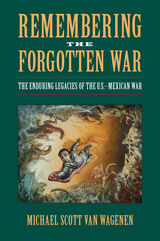 Remembering the Forgotten War: The Enduring Legacies of the U.S.-Mexican War
Michael Scott Van Wagenen
University of Massachusetts Press, 2012 On February 2, 1848, representatives of the United States and Mexico signed the Treaty of Guadalupe Hidalgo officially ending hostilities between the two countries and ceding over one-half million square miles of land to the northern victors. In Mexico, this defeat has gradually moved from the periphery of dishonor to the forefront of national consciousness. In the United States, the war has taken an opposite trajectory, falling from its once-celebrated prominence into the shadowy margins of forgetfulness and denial.
Why is the U.S.–Mexican War so clearly etched in the minds of Mexicans and so easily overlooked by Americans? This book investigates that issue through a transnational, comparative analysis of how the tools of collective memory—books, popular culture, historic sites, heritage groups, commemorations, and museums—have shaped the war's multifaceted meaning in the 160 years since it ended. Michael Van Wagenen explores how regional, ethnic, and religious differences influence Americans and Mexicans in their choices of what to remember and what to forget. He further documents what happens when competing memories clash in a quest for dominance and control.
In the end, Remembering the Forgotten War addresses the deeper question of how remembrance of the U.S.–Mexican War has influenced the complex relationship between these former enemies now turned friends. It thus provides a new lens through which to view today's cross-border rivalries, resentments, and diplomatic pitfalls.
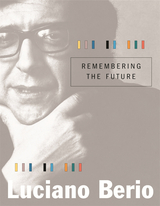 Remembering the Future
Luciano Berio
Harvard University Press, 2006 How one of the foremost experimental composers of the twentieth century approaches his métier.
Music is never confined to a single moment. Compositions play with our expectations of the future; musical notes are recorded on a page to be revived by future performers; and old compositions are remembered, quoted, and reconfigured in new ones. In his 1993–1994 Charles Eliot Norton Lectures, Luciano Berio skillfully explores the whirlpools and eddies of musical time, the intricate interplay between our moment-to-moment experience of music and the idioms, traditions, and histories that form our musical memory.
Remembering the Future is full of insights into Berio’s own creative process. Writing these lectures, he says, “led me to formulate thoughts that might otherwise have remained concealed in the folds of my work.” Thematically wide-ranging—reflecting on transcription and translation, poetics and analysis, opera and the “open work”—Berio offers a trenchant assessment of both his contemporaries and his forbears, from Boethius to Boulez. Like his friend and sometime collaborator Umberto Eco, he was also a figure of formidable intellect, fluently engaging with Heinrich Schenker, Theodor Adorno, Walter Benjamin, Carl Dahlhaus, and other critical luminaries.
But Berio wears his learning lightly. The cerebral complexity of these lectures is leavened with irony, humor, and arresting aphorisms. Ultimately, he points us back to the music: “The best possible commentary on a symphony,” Berio says, “is another symphony.”
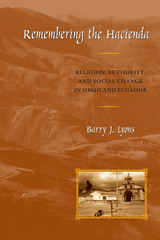 Remembering the Hacienda: Religion, Authority, and Social Change in Highland Ecuador
By Barry J. Lyons
University of Texas Press, 2006 From the colonial period through the mid-twentieth century, haciendas dominated the Latin American countryside. In the Ecuadorian Andes, Runa—Quichua-speaking indigenous people—worked on these large agrarian estates as virtual serfs. In Remembering the Hacienda: Religion, Authority, and Social Change in Highland Ecuador, Barry Lyons probes the workings of power on haciendas and explores the hacienda's contemporary legacy. Lyons lived for three years in a Runa village and conducted in-depth interviews with elderly former hacienda laborers. He combines their wrenching accounts with archival evidence to paint an astonishing portrait of daily life on haciendas. Lyons also develops an innovative analysis of hacienda discipline and authority relations. Remembering the Hacienda explains the role of religion as well as the reshaping of Runa culture and identity under the impact of land reform and liberation theology. This beautifully written book is a major contribution to the understanding of social control and domination. It will be valuable reading for a broad audience in anthropology, history, Latin American studies, and religious studies.
Remembering the Holocaust
Michael E. Stevens
Wisconsin Historical Society Press, 1997 This moving documentary volume brings together fourteen interviews of Holocaust survivors who later settled in Wisconsin. With words and photographs they describe the richness of pre-war Jewish life in Europe; the advent of proscriptive laws, arrests, and deportation; the unspeakable horrors of the Nazi camps; and ultimately the liberation and postwar experiences of the survivors.
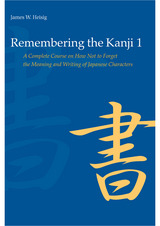 Remembering the Kanji 1, Fifth Edition: A Complete Course on How Not to Forget the Meaning and Writing of Japanese Characters
James W. Heisig
University of Hawaii Press, 2007 Updated to include the 196 new kanji approved by the Japanese governmentin 2010 as “general-use” kanji, the sixth edition of this popular textaims to provide students with a simple method for correlating thewriting and the meaning of Japanese characters in such a way as to makethem both easy to remember. It is intended not only for the beginner, but also for the more advanced student looking for some relief from the constant frustration of forgetting how to write the kanji, or for a way to systematize what he or she already knows.
The author begins with writing the kanji because—contrary to first impressions—it is in fact simpler than learning how to the pronounce them. By ordering the kanji according to their component parts or “primitive elements,” and then assigning each of these parts a distinct meaning with its own distinct image, the student is led to harness the powers of “imaginative memory” to learn the various combinations that make up the kanji. In addition, each kanji is given its own key word to represent the meaning, or one of the principal meanings, of that character. These key words provide the setting for a particular kanji’s “story,” whose protagonists are the primitive elements.
In this way, one is able to complete in a few short months a task that would otherwise take years. Armed with the same skills as Chinese or Korean students, who know the meaning and writing of the kanji but not their Japanese pronunciations, one is then in a much better position to learn the readings (which are treated in a separate volume).
Remembering the Kanji has helped tens of thousands of students advance towards literacy at their own pace, and to acquire a facility that traditional methods have long since given up on as all but impossible for those not raised with the kanji from childhood.
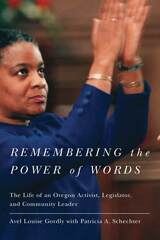 Remembering the Power of Words: The Life of an Oregon Activist, Legislator, and Community Leader
Avel Louise Gordly
Oregon State University Press, 2011 Remembering the Power of Words recounts the personal and professional journey of Avel Gordly, the first African-American woman elected to the Oregon State Senate. The book is a brave and honest telling of Gordly’s life. She shares the challenges and struggles she faced growing up black in Portland in the 1950s and 1960s, as well as her determination to attend college, the dedication to activism that took her from Portland to Africa, and her eventual decision to run for a seat in the state legislature. That words have power is a constant undercurrent in Gordly’s account and a truth she learned early in life. “Growing up, finding my own voice,” she writes, “was tied up with denying my voice or having it forcefully rejected and in all of that the memory of my father is very strong. To this day—and I am today a very experienced public speaker—preparation to speak takes a great deal of energy.” That this memoir has its origins as an oral history is fitting since Gordly has used her voice, out loud, to teach and inspire others for so many years. Important as a biographical account of one significant Oregonian’s story, the book also contributes “broader narratives touching on Black history (and Oregon’s place within it), and most particularly the politics associated with being an African American woman,” according to series editor Melody Rose.
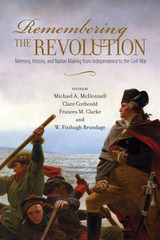 Remembering the Revolution: Memory, History, and Nation Making from Independence to the Civil War
Michael A. McDonnell
University of Massachusetts Press, 2013 In today's United States, the legacy of the American Revolution looms large. From presidential speeches to bestselling biographies, from conservative politics to school pageants, everybody knows something about the Revolution. Yet what was a messy, protracted, divisive, and destructive war has calcified into a glorified founding moment of the American nation. Disparate events with equally diverse participants have been reduced to a few key scenes and characters, presided over by well-meaning and wise old men.
Recollections of the Revolution did not always take today's form. In this lively collection of essays, historians and literary scholars consider how the first three generations of American citizens interpreted their nation's origins. The volume introduces readers to a host of individuals and groups both well known and obscure, from Molly Pitcher and "forgotten father" John Dickinson to African American Baptists in Georgia and antebellum pacifists. They show how the memory of the Revolution became politicized early in the nation's history, as different interests sought to harness its meaning for their own ends. No single faction succeeded, and at the outbreak of the Civil War the American people remained divided over how to remember the Revolution.
Remembering the University of Chicago: Teachers, Scientists, and Scholars
Edited by Edward Shils
University of Chicago Press, 1991 To celebrate the intellectual achievement of the University of Chicago on the occasion of its centennial year, Edward Shils invited a group of notable scholars and scientists to reflect upon some of their own teachers and colleagues at the University.
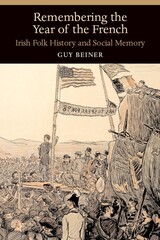 Remembering the Year of the French: Irish Folk History and Social Memory
Guy Beiner
University of Wisconsin Press, 2007 Remembering the Year of the French is a model of historical achievement, moving deftly between the study of historical events—the failed French invasion of the West of Ireland in 1798—and folkloric representationsof those events. Delving into the folk history found in Ireland’s rich oral traditions, Guy Beiner reveals alternate visions of the Irish past and brings into focus the vernacular histories, folk commemorative practices, and negotiations of memory that have gone largely unnoticed by historians. Beiner analyzes hundreds of hitherto unstudied historical, literary, and ethnographic sources. Though his focus is on 1798, his work is also a comprehensive study of Irish folk history and grass-roots social memory in Ireland. Investigating how communities in the West of Ireland remembered, well into the mid-twentieth century, an episode in the late eighteenth century, this is a “history from below” that gives serious attention to the perspectives of those who have been previously ignored or discounted. Beiner brilliantly captures the stories, ceremonies, and other popular traditions through which local communities narrated, remembered, and commemorated the past. Demonstrating the unique value of folklore as a historical source, Remembering the Year of the French offers a fresh perspective on collective memory and modern Irish history.
Winner, Wayland Hand Competition for outstanding publication in folklore and history, American Folklore Society
Finalist, award for the best book published about or growing out of public history, National Council on Public History
Winner, Michaelis-Jena Ratcliff Prize for the best study of folklore or folk life in Great Britain and Ireland
“An important and beautifully produced work. Guy Beiner here shows himself to be a historian of unusual talent.”—Marianne Elliott, Times Literary Supplement
“Thoroughly researched and scholarly. . . . Beiner’s work is full of empathy and sympathy for the human remains, memorials, and commemorations of past lives and the multiple ways in which they actually continue to live.”—Stiofán Ó Cadhla, Journal of British Studies
“A major contribution to Irish historiography.”—Maureen Murphy, Irish Literary Supplement
"A remarkable piece of scholarship . . . . Accessible, full of intriguing detail, and eminently teachable.”?—Ray Casman, New Hibernia Review
“The most important monograph on Irish history of the nineteenth and twentieth centuries to be published in recent years.”—Matthew Kelly, English Historical Review
“A strikingly ambitious work . . . . Elegantly constructed, lucidly written and inspired, and displaying an inexhaustible capacity for research”—Ciarán Brady, History IRELAND
“A closely argued, meticulously detailed and rich analysis . . . . providing such innovative treatment of a wide array of sources, his work will resonate with the concerns of many cultural and historical geographers working on social memory in quite different geographical settings and historical contexts.”—Yvonne Whelan, Journal of Historical Geography
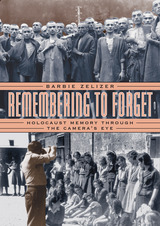 Remembering to Forget: Holocaust Memory through the Camera's Eye
Barbie Zelizer
University of Chicago Press, 1998 Barbie Zelizer reveals the unique significance of the photographs taken at the liberation of the concentration camps in Germany after World War II. She shows how the photographs have become the basis of our memory of the Holocaust and how they have affected our presentations and perceptions of contemporary history's subsequent atrocities. Impressive in its range and depth and illustrated with more than 60 photographs, Remembering to Forget is a history of contemporary photojournalism, a compelling chronicle of these unforgettable photographs, and a fascinating study of how collective memory is forged and changed.
"[A] fascinating study. . . . Here we have a completely fresh look at the emergence of photography as a major component of journalistic reporting in the course of the liberation of the camps by the Western Allies. . . . Well written and argued, superbly produced with more photographs of atrocity than most people would want to see in a lifetime, this is clearly an important book."—Omer Bartov, Times Literary Supplement
Remembering to Live: Illness at the Intersection of Anxiety and Knowledge in Rural Indonesia
M. Cameron Hay
University of Michigan Press, 2004
Sasaks, a people of the Indonesian archipelago, cope with one of the country's worst health records by employing various medical traditions, including their own secret ethnomedical knowledge. But anxiety, in the presence and absence of illness, profoundly shapes the ways Sasaks use healing and knowledge. Hay addresses complex questions regarding cultural models, agency, and other relationships to conclude that the ethnomedical knowledge they use to cope with their illnesses ironically inhibits improvements in their health care.
M. Cameron Hay is a NSF Advance Fellow and an Assistant Adjunct Professor at the UCLA Center for Culture and Health.
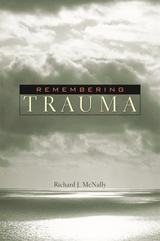 Remembering Trauma
Richard J. McNally
Harvard University Press, 2005 Are horrific experiences indelibly fixed in a victim’s memory? Or does the mind protect itself by banishing traumatic memories from consciousness? How victims remember trauma is the most controversial issue in psychology today, spilling out of consulting rooms and laboratories to capture headlines, rupture families, provoke legislative change, and influence criminal trials and civil suits. This book, by a clinician who is also a laboratory researcher, is the first comprehensive, balanced analysis of the clinical and scientific evidence bearing on this issue—and the first to provide definitive answers to the urgent questions at the heart of the controversy.
Synthesizing clinical case reports and the vast research literature on the effects of stress, suggestion, and trauma on memory, Richard McNally arrives at significant conclusions, first and foremost that traumatic experiences are indeed unforgettable. Though people sometimes do not think about disturbing experiences for long periods of time, traumatic events rarely slip from awareness for very long; furthermore, McNally reminds us, failure to think about traumas—such as early sexual abuse—must not be confused with amnesia or an inability to remember them. In fact, the evidence for repressed memories of trauma—or even for repression at all—is surprisingly weak.
A magisterial work of scholarship, panoramic in scope and nonpartisan throughout, this unfailingly lucid work will prove indispensable to anyone seeking to understand how people remember trauma.
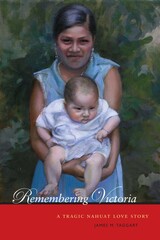 Remembering Victoria: A Tragic Nahuat Love Story
By James M. Taggart
University of Texas Press, 2007 On October 15, 1983, a young mother of six was murdered while walking across her village of Huitzilan de Serdán, Mexico, with her infant son and one of her daughters. This woman, Victoria Bonilla, was among more than one hundred villagers who perished in violence that broke out soon after the Mexican army chopped down a cornfield that had been planted on an unused cattle pasture by forty Nahuat villagers. In this anthropological account, based on years of fieldwork in Huitzilan, James M. Taggart turns to Victoria's husband, Nacho Angel Hernández, to try to understand how a community based on respect and cooperation descended into horrific violence and fratricide. When the army chopped down the cornfield at Talcuaco, the war that broke out resulted in the complete breakdown of the social and moral order of the community. At its heart, this is a tragic love story, chronicling Nacho's feelings for Victoria spanning their courtship, marriage, family life, and her death. Nacho delivered his testimonio to the author in Nahuat, making it one of the few autobiographical love stories told in an Amerindian language, and a very rare account of love among the indigenous people of Mesoamerica. There is almost nothing in the literature on how a man develops and changes his feelings for his wife over his lifetime. This study contributes to the anthropology of emotion by focusing on how the Nahuat attempt to express love through language and ritual.
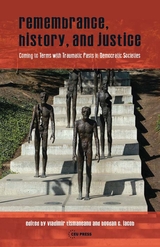 Remembrance, History, and Justice: Coming to terms with traumatic pasts in democratic societies
Bogdan C. Iacob
Central European University Press, 2015 The twentieth century has left behind a painful and complicated legacy of massive trauma, monstrous crimes, radical social engineering, or collective/individual guilt syndromes that were often the premises for and the specters haunting the process of democratization in the various societies that emerged out of these profoundly de-structuring contexts. The present manuscript is a state of the art reassessment and analysis of how the interplay between memory, history, and justice generates insight that is multifariously relevant for comprehending the present and future of democracy without becoming limited to a Europe-centric framework of understanding. The manuscript is structured on three complementary and interconnected trajectories: the public use of history, politics of memory, and transitional justice. Key words 1. Europe, Eastern—Politics and government—1989– 2. Collective memory—Europe,Eastern. 3. Memory—Political aspects—Europe, Eastern. 4. Democratization—Social aspects—Europe, Eastern. 5. Europe, Eastern—Historiography—Socialaspects. 6. Europe, Eastern—Historiography—Political aspects. 7. Social justice—Europe, Eastern. 8. Post-communism—Europe, Eastern. 9. Fascism—Socialaspects—Europe, Eastern. 10. Dictatorship—Social aspects—Europe, Eastern.
A Remembrance of Eden: Harriet Bailey Bullock Daniel's Memories of a Frontier Plantation in Arkansas, 1849–1872
Margaret Jones Bolsterli
University of Arkansas Press, 1993 In her perceptive chronicle of everyday life on an Arkansas plantation, Harriet Bailey Bullock Daniel sheds light on the plantation economy, medical practices, religion, slavery, and sex roles in the period from 1849 until Daniel's marriage in 1872. The work is a rich mixture of mundane details surrounded by momentous events, and Daniel's sure grasp of both provides enjoyment and enlightenment for any reader.
 Remembrance of Things I Forgot: A Novel
Bob Smith
University of Wisconsin Press, 2011 “It’s safe to say your relationship is in trouble if the only way you can imagine solving your problems is by borrowing a time machine.” In 2006 comic book dealer John Sherkston has decided to break up with his physicist boyfriend, Taylor Esgard, on the very day Taylor announces he’s finally perfected a time machine for the U.S government. John travels back to 1986, where he encounters “Junior,” his younger, more innocent self. When Junior starts to flirt, John wonders how to reveal his identity: “I’m you, only with less hair and problems you can’t imagine.” He also meets up with the younger Taylor, and this unlikely trio teams up to plot a course around their future relationship troubles, prevent John’s sister from making a tragic decision, and stop George W. Bush from becoming president.
In this wickedly comic, cross-country, time-bending journey, John confronts his own—and the nation’s—blunders, learning that a second chance at changing things for the better also brings new opportunities to screw them up. Through edgy humor, time travel, and droll one-liners, Bob Smith examines family dysfunction, suicide, New York City, and recent American history while effortlessly blending domestic comedy with science fiction. Part acidic political satire, part wild comedy, and part poignant social scrutiny, Remembrance of Things I Forgot is an uproarious adventure filled with sharp observations about our recent past.
InSight Out Book Club, featured selection
Bob Smith named one of Instinct magazine’s Leading Men 2011
Winner, Barbara Gittings Literature Award/Stonewall Book Awards, American Library Association
Finalist, Over the Rainbow Selection, American Library Association
Finalist, Green Carnation Prize, international prize for LGBT Literature
Amazon Top Ten Gay & Lesbian Books of 2011
Best Books for General Audiences, selected by the American Association of School Librarians
Best Books for General Audiences, selected by the Public Library Reviewers
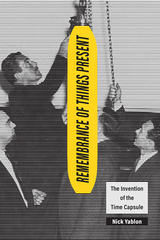 Remembrance of Things Present: The Invention of the Time Capsule
Nick Yablon
University of Chicago Press, 2019 Time capsules offer unexpected insights into how people view their own time, place, and culture, as well as their duties to future generations. Remembrance of Things Present traces the birth of this device to the Gilded Age, when growing urban volatility prompted doubts about how the period would be remembered—or if it would be remembered at all. Yablon details how diverse Americans – from presidents and mayors to advocates for the rights of women, blacks, and workers – constructed prospective memories of their present. They did so by contributing not just written testimony to time capsules but also sources that historians and archivists considered illegitimate, such as photographs, phonograph records, films, and everyday artifacts.
By offering a direct line to posterity, time capsules stimulated various hopes for the future. Remembrance of Things Present delves into these treasure chests to unearth those forgotten futures.
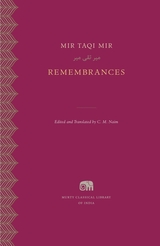 Remembrances
Mir Taqi Mir
Harvard University Press, 2019 A rare and remarkable example of Indo-Persian autobiography by the poet Mir Taqi Mir.
Mir Muhammad Taqi Mir (1723–1810) is the author of six collections of Urdu poetry and widely regarded as the finest ghazal poet in that language. However, he also wrote one volume of verse and three prose works in Persian, including Zikr-e Mir, or Remembrances, a rare and remarkable example of Indo-Persian autobiography.
Remembrances recounts Mir’s ancestry, his father’s spiritual quest, and his own struggles to find education and patronage both in his native Agra and in Delhi. While the work may offer few glimpses into the author’s private life or professional literary activity, it presents a vivid picture of political events and intrigues between 1760 and 1789, when north India witnessed extensive warfare.
The Persian text, presented here in the Naskh script, includes all the author’s additions and alterations properly identified and chronologically arranged, along with a newly revised English translation. Mir concludes his autobiography with a series of jokes and witty anecdotes, some of them quite risqué, that are printed here for the first time.
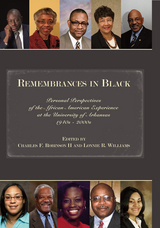 Remembrances in Black: Personal Perspectives of the African American Experience at the University of Arkansas, 1940s–2000s
Charles F. Robinson II
University of Arkansas Press, 2015 With the admittance in 1948 of Silas Hunt to the University of Arkansas Law School, the university became the first southern public institution of higher education to officially desegregate without being required to do so by court order. The process was difficult, but an important first step had been taken. Other students would follow in Silas Hunt's footsteps, and they along with the university would have to grapple with the situation. Remembrances in Black is an oral history that gathers the personal stories of African Americans who worked as faculty and staff and of students who studied at the state's flagship institution. These stories illustrate the anguish, struggle, and triumph of individuals who had their lives indelibly marked by their experiences at the school. Organized chronologically over sixty years, this book illustrates how people of color navigated both the evolving campus environment and that of the city of Fayetteville in their attempt to fulfill personal aspirations. Their stories demonstrate that the process of desegregation proved painfully slow to those who chose to challenge the forces of exclusion. Also, the remembrances question the extent to which desegregation has been fully realized.
 Remembrances: The Experience of the Past in Classical Chinese Literature
Stephen Owen
Harvard University Press, 1986 Stephen Owen's book, inspired by Chinese literature, is for all who value literature in any language. Remembrances takes up the strongest claims we can make for literature: that it can sustain life in the present and the life of the past. The past has always played a particularly powerful role in Chinese civilization. Both private memories and cultural artifacts were an inescapable part of the present, offering models for present behavior and recalling what had been lost.
Owen shows how the fascination with the past came into being in Chinese literature, some of the forms it took, and the ways readers have responded to such literature. He reflects on a series of moments in Chinese writing from the seventh century B.C. to the early nineteenth century. Through poems, anecdotes, exegeses, and one long story of an ardent collector and his wife, Owen treats a theme basic to Chinese civilization not as something exotic but as a motif fundamental to our civilization, even though its expression differs from our own.
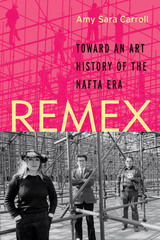 REMEX: Toward an Art History of the NAFTA Era
By Amy Sara Carroll
University of Texas Press, 2017 REMEX presents the first comprehensive examination of artistic responses and contributions to an era defined by the North American Free Trade Agreement (1994–2008). Marshaling over a decade’s worth of archival research, interviews, and participant observation in Mexico City and the Mexico–US borderlands, Amy Sara Carroll considers individual and collective art practices, recasting NAFTA as the most fantastical inter-American allegory of the turn of the millennium. Carroll organizes her interpretations of performance, installation, documentary film, built environment, and body, conceptual, and Internet art around three key coordinates—City, Woman, and Border. She links the rise of 1990s Mexico City art in the global market to the period’s consolidation of Mexico–US border art as a genre. She then interrupts this transnational art history with a sustained analysis of chilanga and Chicana artists’ remapping of the figure of Mexico as Woman. A tour de force that depicts a feedback loop of art and public policy—what Carroll terms the “allegorical performative”—REMEX adds context to the long-term effects of the post-1968 intersection of D.F. performance and conceptualism, centralizes women artists’ embodied critiques of national and global master narratives, and tracks post-1984 border art’s “undocumentation” of racialized and sexualized reconfigurations of North American labor pools. The book’s featured artwork becomes the lens through which Carroll rereads a range of events and phenomenon from California’s Proposition 187 to Zapatismo, US immigration policy, 9/11 (1973/2001), femicide in Ciudad Juárez, and Mexico’s war on drugs.
Reminiscences of a Private: William E. Bevens of the First Arkansas Infantry C.S.A.
Daniel E. Sutherland
University of Arkansas Press, 1999 Reminiscences of a Private is William Bevens’s personal chronicle of his participation in such famous Civil War battles as Shiloh, Chickamauga, Atlanta, and Nashville. There is no supernal heroism here, no pretension, no grandiose analysis. Bevens is neither introspective nor philosophical, and he rarely dwells on the larger issues of the war. He concerns himself with what mattered to him as a common foot soldier. There are longer and fuller accounts of the war; however, few are as honest or as direct as this frank and forthright journal. By confining his contributions as editor to filling gaps in Bevens’s narrative, to correcting some misspellings, and to providing dates and explanatory notes, Daniel Sutherland allows Bevens to tell his story of a young Arkansan at war. His unassuming voice will speak to all readers with compelling candor.
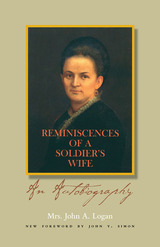 Reminiscences of a Soldier's Wife: An Autobiography
Mrs. John A. Logan. Foreword by John Y. Simon
Southern Illinois University Press, 1997 "To tell my own story is to tell that of my famous husband, General John A. Logan," explains Mary S. Logan in the preface to her autobiography. Married to John A. Logan for thirty-one years, Mary Logan shared in her distinguished husband’s career as a prosecutor in southern Illinois, as a Civil War general, and as a senator from Illinois. She observed firsthand the extraordinary events before, during, and after the Civil War, and she knew personally those world leaders who held the power to shape history. After the death of her husband, she maintained her influence in Washington, D.C. "Under the brightest and darkest skies," she explains, "I have passed than a half-century at the national capital." Born in 1838, Logan writes of her early days growing up in southern Illinois through 1913, when this book was first published. A skillful observer, she recounts events that are personal, regional, and national in scope. In charming detail, she shares her courtship and subsequent marriage to a young prosecutor from Jackson County and the births of their children. She writes proudly of the Lincoln-Douglas debates in 1858 and her husband’s election to the Thirty-seventh Congress that same year. Logan tells of the coming of the Civil War and of her husband—formerly a Democrat and an enemy of Lincoln—casting his fate with the Union and raising a regiment in southern Illinois. She poignantly describes her brother’s defection to the Confederate Army, her life in war-torn Cairo, Illinois, and her horror at her husband’s severe war wounds. She recounts the battles, the political campaigns, and Lincoln’s reelection and subsequent assassination from her point of view—and, as the wife of a politician and general, hers is a decidedly privileged perspective. In a position to observe and to participate in events ranging from momentous to minute throughout the latter half of the nineteenth and early twentieth centuries, she reports the essential episodes of history with the flair of journalism, a career she in fact embraced after the death of her husband. She writes movingly of a wounded captain on the road to recovery who suddenly died when the minié shifted next to his lung, amusingly of the excuses soldiers invented to wrangle a pass to town, and elegantly of her trips to Europe and of the pomp and circumstance of the parties attended by the great men and women of the time. Drawing on events grand and small, she re-creates history as only a skillful writer who was in the right place at the right time could.
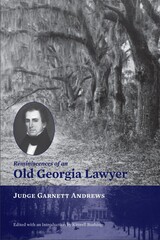 Reminiscences of an Old Georgia Lawyer: Judge Garnett Andrews
S. Kittrell Rushing
University of Tennessee Press, 2009
The old judge enjoyed swapping tales and sharing company with other lawyers, politicians, and family members. A true aristocrat of the Old South, Garnett Andrews (1798–1873) so enjoyed hearing and telling good yarns that he decided late in his life to preserve them for posterity. The judge wrote down a collection of his stories, including tales of men with whom he had worked—and some whom he had worked against—and in 1870, about three years before he died, he had his booklet printed and circulated among friends. He titled it Reminiscences of an Old Georgia Lawyer.
This new volume reprises Andrews’s work, and features a new introduction by S. Kittrell Rushing. In recounting a lawyer’s life from the frontier period through the Civil War and into the Reconstruction era, Andrews’s recollections provide rare and fascinating details, particularly about pre–Civil War Georgia, the state of the judiciary in the early national period—about which little has been written—and the larger political and social milieu of antebellum and postbellum America. This is an eclectic mixture of tall tales, humorous anecdotes, and keen observations about southern society and the practice of law.
In his introduction, Rushing places Andrews’s writings in a broad context. He addresses Andrews’s racial views head on, confronting and probing the racism, sexism, and classism of Andrews and his times. In addition, Rushing provides biographical and genealogical information about the judge and his family, including his daughter, the noted diarist and novelist Eliza Frances Andrews. This volume also includes other pieces by Andrews, among them letters, speeches, and his acceptance of the 1855 gubernatorial nomination.
Highly readable and lively, Reminiscence of an Old Georgia Lawyer will enlighten and entertain both scholars and general readers interested in the history of Georgia, the Old South, and American legal history.
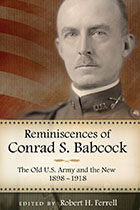 Reminiscences of Conrad S. Babcock: The Old U.S. Army and the New, 1898-1918
Edited by Robert H. Ferrell
University of Missouri Press, 2012 The son of an army officer, Conrad S. Babcock graduated from West Point in 1898, just in time for the opening of the Spanish-American War. Because of his father’s position, he managed to secure a place in the force that Major General Wesley Merritt led to Manila to secure the city. The Philippine Insurrection, as Americans described it, began shortly after he arrived. What Babcock observed in subsequent months and years, and details in his memoir, was the remarkable transition the U.S. Army was undergoing. From after the Civil War until just before the Spanish War, the army amounted to 28,000 men. It increased to 125,000, tiny compared with those of the great European nations of France and Germany, but the great change in the army came after its arrival in France in the summer of 1918, when the German army compelled the U.S. to change its nineteenth-century tactics.
Babcock’s original manuscript has been shortened by Robert H. Ferrell into eight chapters which illustrate the tremendous shift in warfare in the years surrounding the turn of the century. The first part of the book describes small actions against Filipinos and such assignments as taking a cavalry troop into the fire-destroyed city of San Francisco in 1906 or duty in the vicinity of Yuma in Arizona when border troubles were heating up with brigands and regular troops. The remaining chapters, beginning in 1918, set out the battles of Soissons (July 18–22) and Saint-Mihiel (September 12–16) and especially the immense battle of the Meuse-Argonne (September 26–November 11), the largest (1.2 million troops involved) and deadliest (26,000 men killed) battle in all of American history.
By the end of his career, Babcock was an adroit battle commander and an astute observer of military operations. Unlike most other officers around him, he showed an ability and willingness to adapt infantry tactics in the face of recently developed technology and weaponry such as the machine gun. When he retired in 1937 and began to write his memoirs, another world war had begun, giving additional context to his observations about the army and combat over the preceding forty years.
Until now, Babcock’s account has only been available in the archives of the Hoover Institution, but with the help of Ferrell's crisp, expert editing, this record of army culture in the first decades of the twentieth century can now reach a new generation of scholars.
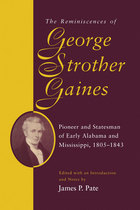 The Reminiscences of George Strother Gaines: Pioneer and Statesman of Early Alabama and Mississippi, 1805–1843
George Strother Gaines
University of Alabama Press, 1998 Provides a fascinating glimpse into the early history of the Mississippi-Alabama Territory and antebellum Alabama The two sections of the Reminiscences of George Strother Gaines form one of the most important primary sources on the early history of Alabama and Mississippi. The Reminiscences cover the years 1805 to 1843, during which time Gaines served as assistant factor and then factor of the Choctaw trading house (1805-18), cashier of Tombeckbee Bank in St. Stephens (1818-22), a merchant in Demopolis (1822-32), and finally a banker and merchant in Mobile (1832-43). In addition, Gaines played a key role in Indian-white relations during the Creek War of 1813-14, served a two-year term in the Alabama Senate (1825-27), led a Choctaw exploring party to the new Choctaw lands in the West following the Treaty of Dancing Rabbit Creek (1830-31), and served as the superintendent for Choctaw removal (1831-32). Gaines dictated his Reminiscences in 1871 at the age of eighty-seven. Part of the Reminiscences, referred to as the "first series," was originally published in five issues of the Mobile Register in June-July 1872 as "Notes on the Early Days of South Alabama." Nearly a century later, the first series and the previously unpublished second series, "Reminiscences of Early Times in Mississippi Territory," were published in a 1964 issue of the Alabama Historical Quarterly as "Gaines' Reminiscences." In this first book-length edition of the Reminiscences, James Pate has provided an extensive biographical introduction, notes, illustrations, maps, and appendixes to aid the general reader and the scholar. The appendixes include additional unpublished primary materials-including interviews conducted by Albert James Pickett in 1847 and 1848 that provide further information about this important early pioneer and statesman.
 Remission Quest: A Medical Sociologist Navigates Cancer
Virginia Adams O’Connell
Temple University Press, 2025 As a medical sociologist, Virginia Adams O’Connell long studied the healthcare system and people navigating illness. Then, in 2019, she confronted her own reality of being diagnosed with primary bone lymphoma. “Since my diagnosis, I joined a club of current and past patients that I never wanted or intended to join,” she writes with both candor and poignancy, adding, “But we can collectively work to make it the best club it can be.”
In the course of diagnosis, treatment, and recovery, Adams O’Connell lived through theories she had researched and applied her sociological ideas to help make sense of her personal experiences. Remission Quest chronicles how the reality of living with cancer changed her perspective on what she had studied. Adams O’Connell found her knowledge illustrated and enriched her sociological analysis of our medical institutions and that her own illness narrative shone new light on her theories.
With moving prose, Remission Quest captures the emotions of having cancer and dealing with elaborate medical systems, learning how to be a “good patient” while also managing indescribable fear and fatigue, and confronting questions about the meaning of life. Adams O’Connell’s experiences are both personal and universal. They provide inspiration, compassion, and understanding.
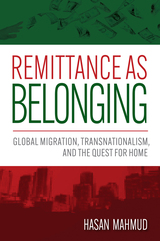 Remittance as Belonging: Global Migration, Transnationalism, and the Quest for Home
Hasan Mahmud
Rutgers University Press, 2025 Remittance as Belonging: Global Migration, Transnationalism, and the Quest for Home argues that migrants' remittances express their sense of belonging and connectedness to their home country of origin, making an integral part of both migrants’ ethnic identity and sense of what they call home. Drawing on three and a half years of ethnographic fieldwork with Bangladeshi migrants in Tokyo and Los Angeles, Hasan Mahmud demonstrates that while migrants go abroad for various reasons, they do not travel alone. Although they leave behind their families in Bangladesh, they move abroad essentially as members of their family and community and maintain their belonging to home through transnational practices, including remittance sending. By conceptualizing remittance as an expression of migrants’ belonging, this book presents detailed accounts of the emergence, growth, decline, and revival of remittances as a function of transformations in migrants’ sense of belonging to home.
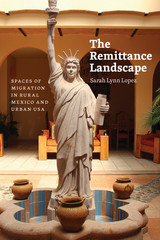 The Remittance Landscape: Spaces of Migration in Rural Mexico and Urban USA
Sarah Lynn Lopez
University of Chicago Press, 2014 Immigrants in the United States send more than $20 billion every year back to Mexico—one of the largest flows of such remittances in the world. With The Remittance Landscape, Sarah Lynn Lopez offers the first extended look at what is done with that money, and in particular how the building boom that it has generated has changed Mexican towns and villages.
Lopez not only identifies a clear correspondence between the flow of remittances and the recent building boom in rural Mexico but also proposes that this construction boom itself motivates migration and changes social and cultural life for migrants and their families. At the same time, migrants are changing the landscapes of cities in the United States: for example, Chicago and Los Angeles are home to buildings explicitly created as headquarters for Mexican workers from several Mexican states such as Jalisco, Michoacán, and Zacatecas. Through careful ethnographic and architectural analysis, and fieldwork on both sides of the border, Lopez brings migrant hometowns to life and positions them within the larger debates about immigration.
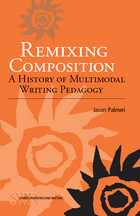 Remixing Composition: A History of Multimodal Writing Pedagogy
Jason Palmeri
Southern Illinois University Press, 2012 Jason Palmeri’s Remixing Composition: A History of Multimodal Writing Pedagogy challenges the longheld notion that the study and practice of composition has historically focused on words alone. Palmeri revisits many of the classic texts of composition theory from the 1960s, 1970s, and 1980s, closely examining how past compositionists responded to “new media.” He reveals that long before the rise of personal computers and the graphic web, compositionists employed analog multimedia technologies in the teaching of composition. Palmeri discovers these early scholars anticipated many of our current interests in composing with visual, audio, and video texts. Using the concept of the remix, Palmeri outlines practical pedagogical suggestions for how writing teachers can build upon this heritage with digital activities, assignments, and curricula that meet the needs of contemporary students. He details a pluralist vision of composition pedagogy that explains the ways that writing teachers can synthesize expressivist, cognitive, and social-epistemic approaches. Palmeri reveals an expansive history of now forgotten multimodal approaches to composing moving images and sounds and demonstrates how current compositionists can productively remix these past pedagogies to address the challenges and possibilities of the contemporary digital era. A strikingly original take on the recent history of composition, Remixing Composition is an important work for the future of writing instruction in a digital age.
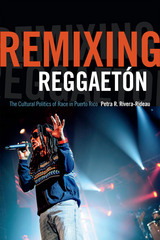 Remixing Reggaetón: The Cultural Politics of Race in Puerto Rico
Petra R. Rivera-Rideau
Duke University Press, 2015 Puerto Rico is often depicted as a "racial democracy" in which a history of race mixture has produced a racially harmonious society. In Remixing Reggaetón, Petra R. Rivera-Rideau shows how reggaetón musicians critique racial democracy's privileging of whiteness and concealment of racism by expressing identities that center blackness and African diasporic belonging. Stars such as Tego Calderón criticize the Puerto Rican mainstream's tendency to praise black culture but neglecting and marginalizing the island's black population, while Ivy Queen, the genre's most visible woman, disrupts the associations between whiteness and respectability that support official discourses of racial democracy. From censorship campaigns on the island that sought to devalue reggaetón, to its subsequent mass marketing to U.S. Latino listeners, Rivera-Rideau traces reggaetón's origins and its transformation from the music of San Juan's slums into a global pop phenomenon. Reggaetón, she demonstrates, provides a language to speak about the black presence in Puerto Rico and a way to build links between the island and the African diaspora.
 Remixing Wong Kar-wai: Music, Bricolage, and the Aesthetics of Oblivion
Giorgio Biancorosso
Duke University Press, 2025 Like his fellow filmmakers Stanley Kubrick, Quentin Tarantino, and Sofia Coppola, Wong Kar-wai crafts the soundtracks of his films by jettisoning original scores in favor of commercial recordings. In Remixing Wong Kar-wai, Giorgio Biancorosso examines the combinatorial practice at the heart of Wong’s cinema to retheorize musical borrowing, appropriation, and repurposing. Wong’s irrepressible penchant for poaching music from other films—whether old Chinese melodramas, Hollywood blockbusters, or European art films—subsumes familiar music under his own brand of cinema. As Wong combs through musical and cinematic archives and splices disparate music together, exceedingly well-known music loses its previous associations and acquires an infinite new constellation of meanings in his films. Drawing on Claude Lévi-Strauss’s concept of bricolage, Biancorosso contends that Wong’s borrowing is akin to a practice of creative destruction in which Wong becomes a bricoleur who remixes music at hand to create new and complete, self-sustaining statements. By outlining Wong’s modus operandi of indiscriminate borrowing and remixing, Biancorosso prompts readers to reconsider the significance of transforming preexisting music into new compositions for film and beyond.
Remnants: A Memoir of Spirit, Activism, and Mothering
Rosemarie Freeney Harding with Rachel Elizabeth Harding
Duke University Press, 2015 An activist influential in the civil rights movement, Rosemarie Freeney Harding’s spirituality blended many traditions, including southern African American mysticism, Anabaptist Christianity, Tibetan Buddhism, and Afro-Brazilian Candomblé. Remnants, a multigenre memoir, demonstrates how Freeney Harding's spiritual life and social justice activism were integral to the instincts of mothering, healing, and community-building. Following Freeney Harding’s death in 2004, her daughter Rachel finished this decade-long collaboration, using recorded interviews, memories of her mother, and her mother's journal entries, fiction, and previously published essays.
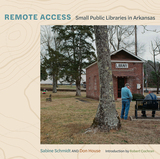 Remote Access: Small Public Libraries in Arkansas
Sabine Schmidt
University of Arkansas Press, 2021 Winner, 2024 Arkansiana Book Award, Arkansas Library Association
With their cameras and notebooks in hand, photographers Sabine Schmidt and Don House embarked on an ambitious project to document the libraries committed to serving Arkansas’s smallest communities. Remote Access is the culmination of this fascinating three-year effort, which took the artists to every region of their home state.
Schmidt’s carefully constructed color images of libraries and the communities they serve and House’s rich black-and-white portraits of library patrons and staff shine alongside the authors’ personal essays about their experiences. The pages here come alive with a deep connection to Arkansas’s history and culture as we accompany the authors on visits to a section of the Trail of Tears near Parkin, to the site of the tragic 1959 fire at the Arkansas Negro Boys Industrial School in Wrightsville, and to Maya Angelou’s childhood home in Stamps, among many other significant destinations. Through this testament to the essential role of libraries in the twenty-first century, Schmidt and House have created a clear-eyed portrait of contemporary rural life, delving into issues of race, politics, gender, and isolation as they document the remarkable hard work and generosity put forth in community efforts to sustain local libraries.
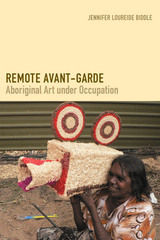 Remote Avant-Garde: Aboriginal Art under Occupation
Jennifer Loureide Biddle
Duke University Press, 2016 In Remote Avant-Garde Jennifer Loureide Biddle models new and emergent desert Aboriginal aesthetics as an art of survival. Since 2007, Australian government policy has targeted "remote" Australian Aboriginal communities as at crisis level of delinquency and dysfunction. Biddle asks how emergent art responds to national emergency, from the creation of locally hunted grass sculptures to biliterary acrylic witness paintings to stop-motion animation. Following directly from the unprecedented success of the Western Desert art movement, contemporary Aboriginal artists harness traditions of experimentation to revivify at-risk vernacular languages, maintain cultural heritage, and ensure place-based practice of community initiative. Biddle shows how these new art forms demand serious and sustained attention to the dense complexities of sentient perception and the radical inseparability of art from life. Taking shape on frontier boundaries and in zones of intercultural imperative, Remote Avant-Garde presents Aboriginal art "under occupation" in Australia today.
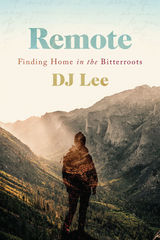 Remote: Finding Home in the Bitterroots
DJ Lee
Oregon State University Press, 2020 When DJ Lee’s dear friend vanishes in the vast Selway-Bitterroot Wilderness of Idaho and Montana, she travels there to seek answers. The journey unexpectedly brings to an end her fifteen-year quest to uncover the buried history of her family in this remote place. Although Lee doesn’t find all the answers, she comes away with a penetrating memoir that weaves her present-day story with past excursions into the region, wilderness history, and family secrets. As she grapples with wild animal stand-offs, bush plane flights in dense fog, raging forest fires, and strange characters who have come to the wilderness to seek or hide, Lee learns how she can survive emotionally and how the wilderness survives as an ecosystem. Her growing knowledge of the life cycles of salmon and wolverine, the regenerative role of fire, and Nimíipuu land practices helps her find intimacy in this remote landscape. Skillfully intertwining history, outdoor adventure, and mystery, Lee’s memoir is an engaging contribution to the growing body of literature on women and wilderness and a lyrical tribute to the spiritual connection between people and the natural world.
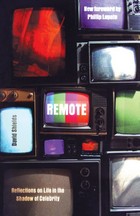 Remote: Reflections on Life in the Shadow of Celebrity
David Shields
University of Wisconsin Press, 2003 In this truly one-of-a-kind book, the author/narrator—a representative, in extremis, of contemporary American obsession with beauty, celebrity, transmitted image—finds himself suspended, fascinated, in the remoteness of our wall-to-wall mediascape. It is a remoteness that both perplexes and enthralls him.
Through dazzling sleight of hand in which the public becomes private and the private becomes public, the entire book—clicking from confession to family-album photograph to family chronicle to sexual fantasy to pseudo-scholarly footnote to reportage to personal essay to stand-up comedy to cultural criticism to literary criticism to film criticism to prose-poem to litany to outtake —becomes both an anatomy of American culture and a searing self-portrait.
David Shields reads his own life—reads our life—as if it were an allegory about remoteness and finds persuasive, hilarious, heartbreaking evidence wherever he goes. Winner of the PEN / Revson Award?
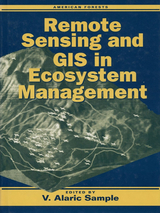 Remote Sensing and GIS in Ecosystem Management
Edited by V. Alaric Sample
Island Press, 1994 Recent advances in remote-sensing technology and the processing of remote-sensing data through geographic information systems (GIS) present ecologists and resource managers with a tremendously valuable tool -- but only if they are able to understand its capabilities and capture its potential. Remote Sensing and GIS in Ecosystem Management identifies and articulates current and emerging information needs of those involved with the management of forest ecosystems. It explores the potential of remote-sensing/GIS technologies to address those needs, examining: - the need for landscape-scale analysis to support forest ecosystem research and management
- current challenges in the development of remote-sensing/GIS applications
- case studies of different forest regions in the United States
- the potential for further development or declassification of military and aerospace remote-sensing/GIS technologies
As well as providing important information for ecologists and resource managers, the book will serve as a valuable resource for legislative and judicial policymakers who do not have a technical background in either remote sensing or resource management but who are nonetheless called upon to make decisions regarding the protection and management of forest ecosystems.
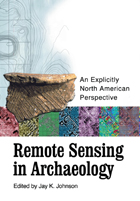 Remote Sensing in Archaeology: An Explicitly North American Perspective
Edited by Jay K. Johnson
University of Alabama Press, 2006 The coming of age of a technology first developed in the 1950s. All the money spent by the United States space program is not spent looking at the stars. NASA is composed of a vast and varied network of scientists across the academic spectrum involved in research and development programs that have wide application on planet Earth. Several of the leaders in the field of remote sensing and archaeology were recently brought together for a NASA-funded workshop in Biloxi, Mississippi. The workshop was organized specifically to show these archaeologists and cultural resource managers how close we are to being able to “see” under the dirt in order to know where to excavate before ever putting a shovel in the ground. As the book that resulted from this workshop demonstrates, this fantasy is quickly becoming a reality.
In this volume, eleven archaeologists reveal how the broad application of remote sensing, and especially geophysical techniques, is altering the usual conduct of dirt archaeology. Using case studies that both succeeded and failed, they offer a comprehensive guide to remote sensing techniques on archaeological sites throughout North America. Because this new technology is advancing on a daily basis, the book is accompanied by a CD intended for periodic update that provides additional data and illustrations.
with contributions by: R. Berle Clay, Lawrence B. Conyers, Rinita A. Dalan, Marco Giardino, Thomas J. Green, Michael L. Hargrave, Bryan S. Haley, Jay K. Johnson, Kenneth L. Kvamme, J. J. Lockhart, Lewis Somers
 Remote Warfare: New Cultures of Violence
Rebecca A. Adelman
University of Minnesota Press, 2020 Considers how people have confronted, challenged, and resisted remote warfare
Drone warfare is now a routine, if not predominant, aspect of military engagement. Although this method of delivering violence at a distance has been a part of military arsenals for two decades, scholarly debate on remote warfare writ large has remained stuck in tired debates about practicality, efficacy, and ethics. Remote Warfare broadens the conversation, interrogating the cultural and political dimensions of distant warfare and examining how various stakeholders have responded to the reality of state-sponsored remote violence. The essays here represent a panoply of viewpoints, revealing overlooked histories of remoteness, novel methodologies, and new intellectual challenges. From the story arc of Homeland to redefining the idea of a “warrior,” these thirteen pieces consider the new nature of surveillance, similarities between killing with drones and gaming, literature written by veterans, and much more. Timely and provocative, Remote Warfare makes significant and lasting contributions to our understanding of drones and the cultural forces that shape and sustain them. Contributors: Syed Irfan Ashraf, U of Peshawar, Pakistan; Jens Borrebye Bjering, U of Southern Denmark; Annika Brunck, U of Tübingen; David A. Buchanan, U.S. Air Force Academy; Owen Coggins, Open U; Andreas Immanuel Graae, U of Southern Denmark; Brittany Hirth, Dickinson State U; Tim Jelfs, U of Groningen; Ann-Katrine S. Nielsen, Aarhus U; Nike Nivar Ortiz, U of Southern California; Michael Richardson, U of New South Wales; Kristin Shamas, U of Oklahoma; Sajdeep Soomal; Michael Zeitlin, U of British Columbia.
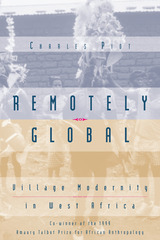 Remotely Global: Village Modernity in West Africa
Charles Piot
University of Chicago Press, 1999 At first glance, the remote villages of the Kabre people of northern Togo appear to have all the trappings of a classic "out of the way" African culture—subsistence farming, straw-roofed houses, and rituals to the spirits and ancestors. Arguing that village life is in fact an effect of the modern and the global, Charles Piot suggests that Kabre culture is shaped as much by colonial and postcolonial history as by anything "indigenous" or local. Through analyses of everyday and ceremonial social practices, Piot illustrates the intertwining of modernity with tradition and of the local with the national and global. In a striking example of the appropriation of tradition by the state, Togo's Kabre president regularly flies to the region in his helicopter to witness male initiation ceremonies.
Confounding both anthropological theorizations and the State Department's stereotyped images of African village life, Remotely Global aims to rethink Euroamerican theories that fail to come to terms with the fluidity of everyday relations in a society where persons and things are forever in motion.
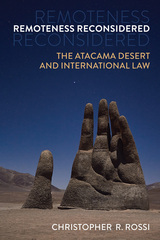 Remoteness Reconsidered: The Atacama Desert and International Law
Christopher R. Rossi
University of Michigan Press, 2021 Much of our understanding of the world is framed from the perspective of a dominant power center, or from standard readings of historical events. The architecture of international information distribution, academic centers, and the lingua franca of international scholarly discourse also shape these stories. Remoteness Reconsidered employs the idea of remoteness as an analytical tool for viewing international law's encounter with the Americas from the unusual, peripheral perspective of the Atacama Desert. The Atacama is one of the most remote places on Earth, although that less-than-accurate perspective comes from standard historical accounts of the region, accounts that originate from the “center.” Changing the usual frame of reference leads to a reconsideration of the idea of remoteness and of the subsequent marginalization of historical narratives that influence hemispheric international relations in important ways today. Lessons about international law's encounters with neoliberalism, indigenous and human rights, and the management and extraction of mineral resources take on new significance by following a spatial turn toward the idea of remoteness as applied to the Atacama Desert.
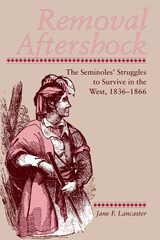 Removal Aftershock: The Seminoles Struggles to Survive in the West, 1836–1866
Jane F. Lancaster
University of Tennessee Press, 1994 A chronicle of hardship and persistence, Removal Aftershock centers on the Seminoles and their experiences in the West after the federal government forced them out of their Florida homelands during the early 1800s. Gaining control of Florida in 1819, the United States initiated a series of treaties that compelled the Native-American tribes to accept reduced territory, relocations, and finally removal to west of the Mississippi. Some Seminoles fought to stay in Florida; others, along with their black slaves, were sent west between 1834 and 1859. After enduring the trials of removal, the Western Seminoles faced a new struggle. As a small tribe, they had to fight to maintain their identity and land rather than be absorbed into the much larger Creek Nation, as the treaties seemingly required.
The struggle for independence from the Creeks was aggravated by other problems, including on the one hand, government neglect, delayed annuities, and corrupt officials; on the other, they were confronted by threatening Plains Indians, measles and smallpox epidemics, alcohol abuse, droughts, and crop failures. Following an 1856 treaty that brought them independence from the Creeks, the Seminoles were next drawn into the Civil War, which riddled the tribe with division and dispersal, property destruction, and death. In 1866, the Seminoles' cooperation with the Confederates was used to justify reduction of their land from more than 2 million acres to 200,000 acres. In telling the story of the Seminoles after removal, Jane Lancaster highlights a neglected area of Native-American studies and places the tribe in proper historical perspective. Despite their countless hardships and the inhumane policies of the government, the Seminoles have survived to the present day an enduring testament to the stubbornness and determination of the early tribal leaders.
The Removal of the Choctaw Indians
Arthur H. Derosier, Jr.
University of Tennessee Press, 1981 This is the most comprehensive examination of the treaties and policies that resulted in removal of the Choctaw Indians. It includes significant interpretations of Jefferson, Jackson, and other national leaders, as well as showing Choctaw leaders and people as agents in their ongoing tragedy.
 Removing Mountains: Extracting Nature and Identity in the Appalachian Coalfields
Rebecca R. Scott
University of Minnesota Press, 2010 A coal mining technique practiced in southern West Virginia known as mountaintop removal is drastically altering the terrain of the Appalachian Mountains. Peaks are flattened and valleys are filled as the coal industry levels thousands of acres of forest to access the coal, in the process turning the forest into scrubby shrublands and poisoning the water. This is dangerous and environmentally devastating work, but as Rebecca R. Scott shows in Removing Mountains, the issues at play are vastly complicated.
In this rich ethnography of life in Appalachia, Scott examines mountaintop removal in light of controversy and protests from environmental groups calling for its abolishment. But Removing Mountains takes the conversation in a new direction, telling the stories of the businesspeople, miners, and families who believe they depend on the industry to survive. Scott reveals these southern Appalachian coalfields as a meaningful landscape where everyday practices and representations help shape a community's relationship to the environment.
Removing Mountains demonstrates that the paradox that faces this community-forced to destroy their land to make a wage-raises important questions related not only to the environment but also to American national identity, place, and white working-class masculinity.
 Removing the Educational Silos: Models of Interdisciplinary and Multi-disciplinary Education
Edited by Wiline Pangle, et al.
Intellect Books, 2025 A self-guided instructional journey for educators in multi- and interdisciplinary learning.
This book is designed as a source of inspiration, replication, and adaptation. Each chapter, in varying modalities, addresses interdisciplinary course development and implementation in institutions of higher education. The essays focus on common issues like navigating administrative systems and solving the challenges encountered when crossing departments or colleges, whether regarding course listings or the intricacies of course loads on each professor. Chapters also provide detailed information on the nuts and bolts of the specific course or courses taught, including syllabi, lesson examples, and both formal and informal assessments implemented.
Contributors candidly offer discussions of the failures and successes of their interdisciplinary collaborations, including course design, lesson planning, or complications brought in by unforeseen pandemics. Most chapters end with a summary of lessons learned, where experiences from the field provide opportunities for growth and continued exploration. An excellent resource for educators, this volume offers readers guidance and encouragement to implement the approaches described and inspiration to forge their own paths in the world of multi- and interdisciplinary teaching and research.
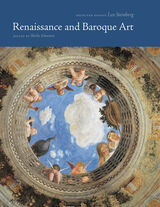 Renaissance and Baroque Art: Selected Essays
Leo Steinberg
University of Chicago Press, 2020 Leo Steinberg was one of the most original art historians of the twentieth century, known for taking interpretive risks that challenged the profession by overturning reigning orthodoxies. In essays and lectures ranging from old masters to contemporary art, he combined scholarly erudition with an eloquent prose that illuminated his subject and a credo that privileged the visual evidence of the image over the literature written about it. His writings, sometimes provocative and controversial, remain vital and influential reading. Steinberg’s perceptions evolved from long, hard looking at his objects of study. Almost everything he wrote included passages of formal analysis, but always put into the service of interpretation.
This volume begins and ends with thematic essays on two fundamental precepts of Steinberg’s art history: how dependence on textual authority mutes the visual truths of images and why artists routinely copy or adapt earlier artworks. In between are fourteen chapters on masterpieces of renaissance and baroque art, with bold and enlightening interpretations of works by Mantegna, Filippo Lippi, Pontormo, El Greco, Caravaggio, Steen and, finally, Velázquez. Four chapters are devoted to some of Velázquez’s best-known paintings, ending with the famously enigmatic Las Meninas.
Renaissance and Baroque Art is the third volume in a series that presents Steinberg’s writings, selected and edited by his longtime associate Sheila Schwartz.
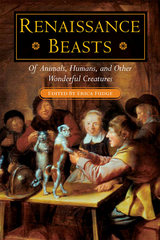 Renaissance Beasts: Of Animals, Humans, and Other Wonderful Creatures
Edited by Erica Fudge
University of Illinois Press, 2004 Animals, as Lévi-Strauss wrote, are good to think with. This collection addresses and reassesses the variety of ways in which animals were used and thought about in Renaissance culture, challenging contemporary as well as historic views of the boundaries and hierarchies humans presume the natural world to contain.
Taking as its starting point the popularity of speaking animals in sixteenth-century literature and ending with the decline of the imperial Ménagerie during the French Revolution, Renaissance Beasts uses the lens of human-animal relationships to view issues as diverse as human status and power, diet, civilization and the political life, religion and anthropocentrism, spectacle and entertainment, language, science and skepticism, and domestic and courtly cultures.
Within these pages scholars from a variety of disciplines discuss numerous kinds of texts--literary, dramatic, philosophical, religious, political--by writers including Calvin, Montaigne, Sidney, Shakespeare, Descartes, Boyle, and Locke. Through analysis of these and other writers, Renaissance Beasts uncovers new and arresting interpretations of Renaissance culture and the broader social assumptions glimpsed through views on matters such as pet ownership and meat consumption.
Renaissance Beasts is certainly about animals, but of the many species discussed, it is ultimately humankind that comes under the greatest scrutiny.
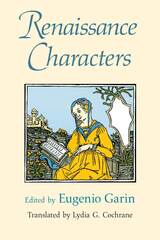 Renaissance Characters
Edited by Eugenio Garin
University of Chicago Press, 1991 Compared to the Middle Ages, the Renaissance is brief—little more than two centuries, extending roughly from the mid-fourteenth century to the end of the sixteenth century—and largely confined to a few Italian city states. Nevertheless, the epoch marked a great cultural shift in sensibilities, the dawn of a new age in which classical Greek and Roman values were "reborn" and human values in all fields, from the arts to civic life, were reaffirmed.
With this volume, Eugenio Garin, a leading Renaissance scholar, has gathered the work of an international team of scholars into an accessible account of the people who animated this decisive moment in the genesis of the modern mind. We are offered a broad spectrum of figures, major and minor, as they lived their lives: the prince and the military commander, the cardinal and the courtier, the artist and the philosopher, the merchant and the banker, the voyager, and women of all classes. With its concentration on the concrete, the specific, even the anecdotal, the volume offers a wealth of new perspectives and ideas for study.
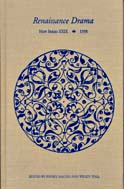 Renaissance Drama 29: New Series XIX 1998 Dramas of Hybridity: Performance and the Body
Jeffrey Masten and Wendy Wall
Northwestern University Press, 2000 Renaissance Drama, an annual and interdisciplinary publication, is devoted to drama and performance as a central feature of Renaissance culture. The essays in each volume explore traditional canons of drama, the significance of performance (broadly construed) to early modern culture, and the impact of new forms of interpretation on the study of Renaissance plays, theater, and performance.
Volume 29, "Dramas of Hybridity: Performance and the Body," includes essays that focus on historically specific early modern bodies, analyzing staged representations of bodies as they spectacularly unfold, determine, negotiate, and erode various social categories. Topics include pathologies of value and transnationality in Troilus and Cressida, masculinity on the early modern stage, citizen comedy, Italian actresses and female performance, and race and romance in The Merchant of Venice.
Renaissance Drama 30: New Series XXX: Institutions of the Text
Jeffrey Masten and Wendy Wall
Northwestern University Press, 2001 Renaissance Drama, an annual and interdisciplinary publication, is devoted to drama and performance as a central feature of Renaissance culture. The essays in each volume explore traditional canons of drama, the significance of performance (broadly construed) to early modern culture, and the impact of new forms of interpretation on the study of Renaissance plays, theater, and performance.
Volume 30, Institutions of the Text, includes essays that examine playtexts in their relationship to a structure or structures shaping early modern culture: the printing industry, the marketplace of texts and of fashions, theatrical companies, manuscript culture and circulation, authorship, the family and paternity. Topics include Henry V and testicular masculinity, two essays on The Winter's Tale, Shakespeare's Sir John Oldcastle, and Shakespeare's commerciality.</p>
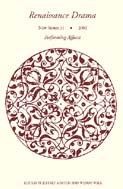 Renaissance Drama 31: New Series XXXI 2002 Performing Affect
Jeffrey Masten and Wendy Wall
Northwestern University Press, 2002 "Performing Affect," Volume 31 of Renaissance Drama, examine the rehearsal of emotion on the Renaissance stage. These new essays consider the ways in which Renaissance plays represent emotional states, while also presenting new scholarship specifically on the performance of the "affect" on the early modern stage. Topics include: emotion and the humoral body; domestic abuse and trauma; the politics of onstage gesture; the relation of idolatry, desire, and necrophilia; the performance of such affective states as religious fervor, memory, jealousy, melancholy, and heroic masculinity.
Renaissance Drama, an annual and interdisciplinary publication, is devoted to drama and performance as a central feature of Renaissance culture. The essays in each volume explore traditional canons of drama, the significance of performance (broadly construed) to early modern culture, and the impact of new forms of interpretation on the study of Renaissance plays, theater, and performance.
Renaissance Drama 32: New Series 32
Wall/Masten
Northwestern University Press, 2003 Renaissance Drama, an annual and interdisciplinary publication, is devoted to drama and performance as a central feature of Renaissance culture. The essays in each volume explore traditional canons of drama, the significance of performance (broadly construed) to early modern culture, and the impact of new forms of interpretation on the study of Renaissance plays, theatre, and performance.
Renaissance Drama 33
Jeffrey Masten and Wendy Wall
Northwestern University Press, 2005 Renaissance Drama, an annual and interdisciplinary publication, is devoted to drama and performance as a central feature of Renaissance culture. The essays in each volume explore traditional canons of drama, the significance of performance (broadly construed) to early modern culture, and the impact of new forms of interpretation on the study of Renaissance plays, theatre, and performance.
 Renaissance Drama 34: Media, Technology, and Performance
W. B. Worthen
Northwestern University Press, 2006 Renaissance Drama, an annual and interdisciplinary publication, is devoted to drama and performance as a central feature of Renaissance culture. The essays in each volume explore traditional canons of drama, the significance of performance (broadly construed) to early modern culture, and the impact of new forms of interpretation on the study of Renaissance plays, theatre, and performance.
This issue of Renaissance Drama, devoted to the topic of "Media, Technology, and Performance" is co-edited by W.B. Worthen, Wendy Wall, and Jeffrey Masten. The various articles displayed here address the interface between drama and its various modes of production over the past four centuries. This volume explores the relationship of drama to other forms of early modern spectacle (pageantry, masques), to the specificities of typography and the economics of the book industry, to the intersection of drama with film and DVD production, and to the way that stage technologies and theatrical economies of the 16th, 17th and 20th centuries define plays and playing. Rather than thinking of the early modern text as something simply reconstituted in its different incarnations, these essays make clear that different media force a rethinking of the terms that we use to envision, conceptualize, and even to see the work of drama.
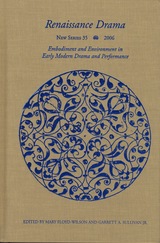 Renaissance Drama 35
Mary Floyd-Wilson
Northwestern University Press, 2006 Renaissance Drama, an annual and interdisciplinary publication, is devoted to drama and performance as a central feature of Renaissance culture. The essays in each volume explore traditional canons of drama, the significance of performance (broadly construed) to early modern culture, and the impact of new forms of interpretation on the study of Renaissance plays, theatre, and performance.
This special issue of Renaissance Drama "Embodiment and Environment in Early Modern Drama and Performance" is guest-edited by Mary Floyd-Wilson and Garrett A. Sullivan, Jr. Anatomized, fragmented, and embarrassed, the body has long been fruitful ground for scholars of early modern literature and culture. The contributors suggest, however, that period conceptions of embodiment cannot be understood without attending to transactional relations between body and environment. The volume explores the environmentally situated nature of early modern psychology and physiology, both as depicted in dramatic texts and as a condition of theatrical performance. Individual essays shed new light on the ways that travel and climatic conditions were understood to shape and reshape class status, gender, ethnicity, national identity, and subjectivity; they focus on theatrical ecologies, identifying the playhouse as a "special environment" or its own "ecosystem," where performances have material, formative effects on the bodies of actors and audience members; and they consider transactions between theatrical, political, and cosmological environments. For the contributors to this volume, the early modern body is examined primarily through its engagements with and operations in specific environments that it both shapes and is shaped by. Embodiment, these essays show, is without borders.
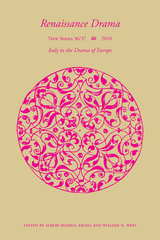 Renaissance Drama 36/37: Italy in the Drama of Europe
William N. West
Northwestern University Press, 2010 Renaissance Drama, an annual interdisciplinary publication, is devoted to drama and performance as a central feature of Renaissance culture. The essays in each volume explore traditional canons of drama, the significance of performance (broadly construed) to early modern culture, and the impact of new forms of interpretation on the study of Renaissance plays, theater, and performance. This special issue of Renaissance Drama on "Italy in the Drama of Europe" primarily builds on the groundwork laid by Louise George Clubb, who showed that Italian drama was made in such a way as to facilitate its absorption and transformation into other traditions, even when it was not explicitly cited or referenced. "Italy in the Drama of Europe" takes up the reverberations of early modern Italian drama in the theaters of Spain, England, and France and in writings in Italian, English, Spanish, French, Hebrew, Latin, and German. Its scope is an example of the continuing force of and interest in one of the most rewarding, wide-ranging, and productive early modern aesthetic modes, and a tribute to the scholarship of Louise George Clubb, who, among others, recalled our attention to it.
Renaissance Drama 38
William N. West
Northwestern University Press, 2010 Renaissance Drama, an annual interdisciplinary publication, is devoted to drama and performance as a central feature of Renaissance culture. The essays in each volume explore the traditional canon of drama, the significance of performance, broadly construed, to early modern culture, and the impact of new forms of interpretation on the study of Renaissance plays, theater, and performance. Volume 38 includes essays that explore topics in early modern drama ranging from Shakespeare’s Jewish questions in The Merchant of Venice and the gender of rhetoric in Shakespeare’s sonnets and Jonson’s plays to improvisation in the commedia dell’arte and the rebirth of tragedy in 1940 Germany.
Renaissance Drama 39
Jeffrey Masten
Northwestern University Press, 2011 Renaissance Drama, an annual and interdisciplinary publication, is devoted to drama and performance as a central feature of Renaissance culture. The essays in each volume explore traditional canons of drama, the significance of performance (broadly construed) to early modern culture, and the impact of new forms of interpretation on the study of Renaissance plays, theater, and performance.
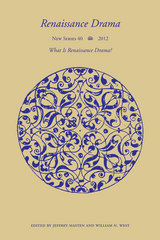 Renaissance Drama 40: What is Renaissance Drama?
William N. West
Northwestern University Press, 2012 In this fortieth volume of Renaissance Drama, we pause again, not with the idea that we could define, or even describe, what might be, ought to be, or is included in the study of Renaissance drama (or if it is even always or ever the Renaissance, or the drama, that we study). But this does not even seem to have been what moved the first conversations that became "Research Opportunities" and Renaissance Drama. Rather, as they seem to have felt, we want to look at where we are and where our studies might lead us, and we too think we might as well make a beginning. For this issue, the editors invited a number of scholars working on different kinds of Renaissance drama, in a variety of ways and in several languages, to contribute brief essays addressing the state of the field of Renaissance drama, "the field" being convenient shorthand for the practical but productive indefinition under which we carry out our research and publish Renaissance Drama. In particular we asked them to consider these questions:
- How and with what effects has the study of Renaissance drama (or early modern performance) changed over the past half-century?
- What now is Renaissance drama? What could Renaissance drama become?
- What do you see as the most exciting (or least productive) development in the field?
- How have other developments in literary studies, performance studies, or other historical periods affected work in the field?
- What is missing from work in the field that it would be desirable to include or revive?
- Are there strategies you would propose for working through the divisions in the field based on national boundaries, between languages and traditions, or between canonical figures like Shakespeare, Molière, and other kinds of work? What kinds of distinctions do you see in the field? How are they useful or misleading?
- What new avenues in the field should open up further? Where should we look now?
- What is the most important work being done, or remaining to be done?
Renaissance Drama, volume 49 number 2 (Fall 2021)
The University of Chicago Press
University of Chicago Press Journals, 2021 This is volume 49 issue 2 of Renaissance Drama. Renaissance Drama explores the rich variety of theatrical and performance traditions and practices in early modern Europe and intersecting cultures. The sole scholarly journal devoted to the full expanse of Renaissance theatre and performance, the journal publishes articles that extend the scope of our understanding of early modern playing, theatre history, and dramatic texts and interpretation, encouraging innovative theoretical and methodological approaches to these traditions, examining familiar works, and revisiting well-known texts from fresh perspectives.
Renaissance Drama, volume 50 number 1 (Spring 2022)
The University of Chicago Press
University of Chicago Press Journals, 2022 This is volume 50 issue 1 of Renaissance Drama. Renaissance Drama explores the rich variety of theatrical and performance traditions and practices in early modern Europe and intersecting cultures. The sole scholarly journal devoted to the full expanse of Renaissance theatre and performance, the journal publishes articles that extend the scope of our understanding of early modern playing, theatre history, and dramatic texts and interpretation, encouraging innovative theoretical and methodological approaches to these traditions, examining familiar works, and revisiting well-known texts from fresh perspectives.
Renaissance Drama, volume 50 number 2 (Fall 2022)
The University of Chicago Press
University of Chicago Press Journals, 2022 This is volume 50 issue 2 of Renaissance Drama. Renaissance Drama explores the rich variety of theatrical and performance traditions and practices in early modern Europe and intersecting cultures. The sole scholarly journal devoted to the full expanse of Renaissance theatre and performance, the journal publishes articles that extend the scope of our understanding of early modern playing, theatre history, and dramatic texts and interpretation, encouraging innovative theoretical and methodological approaches to these traditions, examining familiar works, and revisiting well-known texts from fresh perspectives.
Renaissance Drama, volume 51 number 1 (Spring 2023)
The University of Chicago Press
University of Chicago Press Journals, 2023 This is volume 51 issue 1 of Renaissance Drama. Renaissance Drama explores the rich variety of theatrical and performance traditions and practices in early modern Europe and intersecting cultures. The sole scholarly journal devoted to the full expanse of Renaissance theatre and performance, the journal publishes articles that extend the scope of our understanding of early modern playing, theatre history, and dramatic texts and interpretation, encouraging innovative theoretical and methodological approaches to these traditions, examining familiar works, and revisiting well-known texts from fresh perspectives.
Renaissance Drama, volume 51 number 2 (Fall 2023)
The University of Chicago Press
University of Chicago Press Journals, 2023 This is volume 51 issue 2 of Renaissance Drama. Renaissance Drama explores the rich variety of theatrical and performance traditions and practices in early modern Europe and intersecting cultures. The sole scholarly journal devoted to the full expanse of Renaissance theatre and performance, the journal publishes articles that extend the scope of our understanding of early modern playing, theatre history, and dramatic texts and interpretation, encouraging innovative theoretical and methodological approaches to these traditions, examining familiar works, and revisiting well-known texts from fresh perspectives.
Renaissance Drama, volume 52 number 1 (Spring 2024)
The University of Chicago Press
University of Chicago Press Journals, 2024 This is volume 52 issue 1 of Renaissance Drama. Renaissance Drama explores the rich variety of theatrical and performance traditions and practices in early modern Europe and intersecting cultures. The sole scholarly journal devoted to the full expanse of Renaissance theatre and performance, the journal publishes articles that extend the scope of our understanding of early modern playing, theatre history, and dramatic texts and interpretation, encouraging innovative theoretical and methodological approaches to these traditions, examining familiar works, and revisiting well-known texts from fresh perspectives.
Renaissance Drama, volume 52 number 2 (Fall 2024)
The University of Chicago Press
University of Chicago Press Journals, 2024 This is volume 52 issue 2 of Renaissance Drama. Renaissance Drama explores the rich variety of theatrical and performance traditions and practices in early modern Europe and intersecting cultures. The sole scholarly journal devoted to the full expanse of Renaissance theatre and performance, the journal publishes articles that extend the scope of our understanding of early modern playing, theatre history, and dramatic texts and interpretation, encouraging innovative theoretical and methodological approaches to these traditions, examining familiar works, and revisiting well-known texts from fresh perspectives.
Renaissance Drama, volume 53 number 1 (Spring 2025)
The University of Chicago Press
University of Chicago Press Journals, 2025 This is volume 53 issue 1 of Renaissance Drama. Renaissance Drama explores the rich variety of theatrical and performance traditions and practices in early modern Europe and intersecting cultures. The sole scholarly journal devoted to the full expanse of Renaissance theatre and performance, the journal publishes articles that extend the scope of our understanding of early modern playing, theatre history, and dramatic texts and interpretation, encouraging innovative theoretical and methodological approaches to these traditions, examining familiar works, and revisiting well-known texts from fresh perspectives.
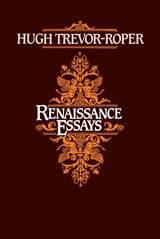 Renaissance Essays
Hugh Trevor-Roper
University of Chicago Press, 1985 Hugh Trevor-Roper's historical essays, published over many years in many different forms, are now difficult to find. This volume gathers together pieces on British and European history from the fifteenth to the early seventeenth centuries, ending with the Thirty Years War, which Trevor-Roper views as the great historical and intellectual watershed that marked the end of the Renaissance.
Covering a wide range of topics, these writings reflect the many facets of Trevor-Roper's interest in intellectual and cultural history. Included are discussions of Renaissance Venice; the arts as patronized by that "universal man," the Emperor Maximilian I; the court of Henry VIII and the ideas of Sir Thomas More; the Lisle Letters and the formidable Cromwellian revolution; the historiography and the historical philosophy of the Elizabethans John Stow and William Camden; religion and the "judicious Hooker," the great doctor of the Anglican Church; medicine and medical philosophy, shaken out of its orthodoxy by Paracelsus and his disciples; literature and Burton's Anatomy of Melancholy; and the ideology of the Renaissance courts.
Trevor-Roper sets his intellectual and cultural history in a context of society and politics: in realization of ideas, the patronage of the arts, the interpretation of history, the social challenge of science, the social application of religion. This volume of essays confirms his reputation as a spectacular writer of history and master essayist.
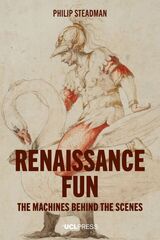 Renaissance Fun: The Machines behind the Scenes
Philip Steadman
University College London, 2021 An amusing account of the technology of Renaissance entertainment and the ancient influences that inspired it.
Renaissance Fun is about the technology of entertainment in the forms of stage machinery, theatrical special effects, gardens, fountains, automata, and self-playing musical instruments from the Renaissance. How did the machines behind these shows work? How exactly were chariots filled with singers let down onto the stage? How were flaming dragons made to fly across the sky? How were seas created on stage? How did mechanical birds imitate real birdsong? What was “artificial music,” three centuries before Edison and the phonograph? How could pipe organs be driven and made to play themselves by waterpower alone? And who were the architects, engineers, and craftsmen who created these wonders? While this book is offered as entertainment in itself, it also offers a more serious scholarly argument centered on the enormous influence of Vitruvius and Hero, two ancient writers who composed on the subject.
 Renaissance Genres: Essays on Theory, History, and Interpretation
Barbara Kiefer Lewalski
Harvard University Press, 1986 Today genre studies are flourishing, and nowhere more vigorously perhaps than in the field of Renaissance literature, given the importance to Renaissance writers of questions of genre. These studies have been nourished, as Barbara Lewalski points out, by the varied insights of contemporary literary theory. More sophisticated conceptions of genre have led to a fuller appreciation of the complex and flexible Renaissance uses of literary forms.
The eighteen essays in this volume are striking in their diversity of stance and approach. Three are addressed to genre theory explicitly, and all reveal a concern with theoretical issues. The contributors are James S. Baumlin, Francis C. Blessington, Morton W. Bloomfield, Barbara J. Bono, Mary Thomas Crane, Heather Dubrow, Alastair Fowler, Marjorie Garber, Claudio Guillén, Ann E. Imbrie, John N. King, John Klause, Harry Levin, Earl Miner, Janel M. Mueller, Annabel Patterson, Robert N. Watson, and Steven N. Zwicker.
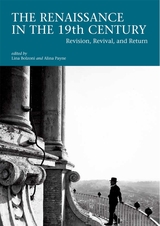 The Renaissance in the 19th Century: Revision, Revival, and Return
Lina Bolzoni
Harvard University Press The Renaissance in the 19th Century examines the Italian Renaissance revival as a Pan-European critique: a commentary on and reshaping of a nineteenth-century present that is perceived as deeply problematic. The revival, located between historical nostalgia and critique of the contemporary world, swept the humanistic disciplines—history, literature, music, art, architecture, collecting.
The Italian Renaissance revival marked the oeuvre of a group of figures as diverse as J.-D. Ingres and E. M. Forster, Heinrich Geymüller and Adolf von Hildebrand, Jules Michelet and Jacob Burckhardt, H. H. Richardson and R. M. Rilke, Giosuè Carducci and De Sanctis. Though some perceived the Italian Renaissance as a Golden Age, a model for the present, others cast it as a negative example, contrasting the resurgence of the arts with the decadence of society and the loss of an ethical and political conscience. The triumphalist model had its detractors, and the reaction to the Renaissance was more complex than it may at first have appeared.
Through a series of essays by a group of international scholars, volume editors Lina Bolzoni and Alina Payne recover the multidimensionality of the reaction to, transformation of, and commentary on the connections between the Italian Renaissance and nineteenth-century modernity. The essays look from within (by Italians) and from without (by foreigners, expatriates, travelers, and scholars), comparing different visions and interpretations.
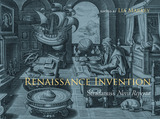 Renaissance Invention: Stradanus's Nova Reperta
Edited by Lia Markey
Northwestern University Press, 2020 This book is the first full-length study of the Nova Reperta (New Discoveries), a renowned series of prints designed by Johannes Stradanus during the late 1580s in Florence. Reproductions of the prints, essays, conversations from a scholarly symposium, and catalogue entries complement a Newberry Library exhibition that tells the story of the design, conception, and reception of Stradanus’s engravings.
Renaissance Invention: Stradanus’s “Nova Reperta” seeks to understand why certain inventions or novelties were represented in the series and how that presentation reflected and fostered their adoption in the sixteenth century. What can Stradanus’s prints tell us about invention and cross-cultural encounter in the Renaissance? What was considered “new” in the era? Who created change and technological innovation?
Through images of group activities and interactions in workshops, Stradanus’s prints emphasize the importance of collaboration in the creation of new things, dispelling traditional notions of individual genius. The series also dismisses the assumption that the revival of the wonders of the ancient world in Italy was the catalyst for transformation. In fact, the Latin captions on the prints explain how contemporary inventions surpass those of the ancients. Together, word and image foreground the global nature of invention and change in the early modern period even as they promote specifically Florentine interests and activities.
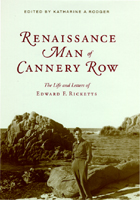 Renaissance Man of Cannery Row: The Life and Letters of Edward F. Ricketts
Edward F. Ricketts, edited by Katharine A. Rodger
University of Alabama Press, 2002 This portrait of one of John Steinbeck's closest friends illuminates the life and work of a figure central to the development of scientific and literary thought in the 20th century. Marine biologist Edward F. Ricketts is perhaps best known as the inspiration for John Steinbeck's most empathic literary characters Doc in Cannery Row, Slim in Of Mice and Men, Jim Casy in The Grapes of Wrath, and Lee in East of Eden. The correspondence of this accomplished scientist, writer, and philosopher reveals the influential exchange of ideas he shared with such prominent thinkers and artists as Henry Miller, Joseph Campbell, Ellwood Graham, and James Fitzgerald, in addition to Steinbeck, all of whom were drawn to Ricketts's Monterey Bay laboratory, a haven of intellectual discourse and Bohemian culture in the 1930s and 1940s. The 125 previously unpublished letters of this collection, housed at the Stanford University Library, document the broad range of Ricketts's interests and accomplishments during the last 12 and most productive years of his life. His handbook on Pacific marine life, Between Pacific Tides, is still in print, now in its fifth edition. The biologist's devotion to ecological conservation and his evolving philosophy of science as a cross-disciplinary, holistic pursuit led to the publication of The Sea of Cortez. Many of Ricketts's letters discuss his studies of the Pacific littoral and his theories of “phalanx” and transcendence. Epistles to family members, often tender and humorous, add dimension and depth to Steinbeck's mythologized depictions of Ricketts. Katharine A. Rodger has enriched the correspondence with an introductory biographical essay and a list of works cited.
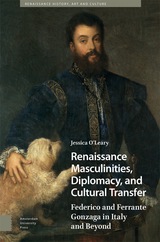 Renaissance Masculinities, Diplomacy, and Cultural Transfer: Federico and Ferrante Gonzaga in Italy and Beyond
Jessica O'Leary
Amsterdam University Press, 2024 Federico and Ferrante Gonzaga came of age during a time of intense change in sixteenth-century Italy: The Italian Wars (1494–1559). The first and third-born sons of Isabella d’Este and Francesco Gonzaga spent their formative years at the courts of Francis I of France and Charles V of Spain, where, as effectively diplomatic hostages, they learned valuable lessons about the transnational social codes and rituals central to sixteenth-century political life. As adults, they applied these lessons in their political and martial collaborations with Charles V: supporting his dominions in Italy, facilitating his attempted colonisation of northern Africa, and praising his attacks on Muslim pirates in the Italian Mediterranean. This book uses epistolary, literary, and material sources to argue that the boyhood and adult experiences of Federico and Ferrante Gonzaga are illustrative of wider strategies adopted by elite Italians to respond to conflict and crisis in a global age.
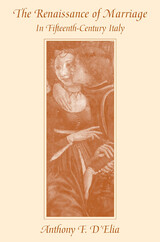 The Renaissance of Marriage in Fifteenth-Century Italy
Anthony F. D'Elia
Harvard University Press, 2005 Weddings in fifteenth-century Italian courts were grand, sumptuous affairs that often required guests to listen attentively to lengthy orations given in Latin. In this book, Anthony D'Elia shows how Italian humanists used these orations to support claims of legitimacy and assertions of superiority among families jockeying for power, as well as to advocate for marriage and sexual pleasure.
Humanists stressed the value of marriage in practical terms as a means for consolidating wealth, forming political alliances, and maintaining power by providing heirs. They also presented women in a positive light, as helpmates and even examples of wisdom and learning. While D'Elia focuses on Italian courts, he also examines ideas about marriage and celibacy from Antiquity to Republican Florence and Reformation Germany, revealing the continuities and distinctions between Italian humanist and Protestant thought on marriage.
In bringing to life this fascinating elite culture, D'Elia makes a valuable contribution to the history of the Renaissance, women, and the family, and to studies of rhetoric and the classical tradition.
The Renaissance of the Twelfth Century
Charles Homer Haskins
Harvard University Press, 1971 The Italian Renaissance was preceded, structured, and, to a significant extent, determined by the Renaissance of the twelfth century which saw the culmination of Romanesque art and the beginnings of the Gothic; the emergence of vernacular languages; the revival of Latin classics, poetry, and Roman law; the recovery of Greek Science and much Greek philosophy; the origins of universities, towns, and the sovereign state.
The Renaissance Philosophy of Man: Petrarca, Valla, Ficino, Pico, Pomponazzi, Vives
Edited by Ernst Cassirer, Paul Oskar Kristeller, and John Herman Randall Jr.
University of Chicago Press, 1956 Despite our admiration for Renaissance achievement in the arts and sciences, in literature and classical learning, the rich and diversified philosophical thought of the period remains largely unknown. This volume illuminates three major currents of thought dominant in the earlier Italian Renaissance: classical humanism (Petrarch and Valla), Platonism (Ficino and Pico), and Aristotelianism (Pomponazzi). A short and elegant work of the Spaniard Vives is included to exhibit the diffusion of the ideas of humanism and Platonism outside Italy. Now made easily accessible, these texts recover for the English reader a significant facet of Renaissance learning.
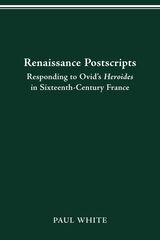 Renaissance Postscripts: Responding to Ovid's Heroides in Sixteenth-Century France
Paul White
Ohio State University Press, 2009 Ovid’s Heroides, a collection consisting mainly of poetic love letters sent by mythological heroines to their absent lovers, held a particular fascination for Renaissance readers. To understand their responses to these letters, we must ask exactly how and in what contexts those readers first encountered them: were they read in Latin or in the vernacular; as source texts for the learning of grammar and history or as love poetry; as epistolary and rhetorical models or as moral examples? Renaissance Postscripts: Responding to Ovid’s Heroides in Sixteenth-Century France by Paul White offers an account of the wide variety of responses to the Heroides within the realm of humanist education, in the works of both Latin commentators and French translators, and as an example of a particular mode of imitation. The author examines how humanists shaped the discourse of Ovid’s heroines and heroes to pedagogical ends and analyses even the woodcuts that illustrated various editions. This study traces comparative readings of French translations through a period noted for important shifts in attitudes to the text and to poetic translation in general and offers an important history of the “reply epistle”—a mode of imitation attempted both in Latin and the vernacular. Renaissance Postscripts shows that while the Heroides was a versatile text that could serve a wide range of pedagogical and literary purposes, it was also a text that resisted the attempts of its interpreters to have the final word.
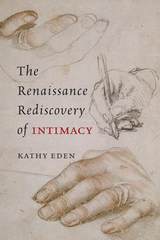 The Renaissance Rediscovery of Intimacy
Kathy Eden
University of Chicago Press, 2012 In 1345, when Petrarch recovered a lost collection of letters from Cicero to his best friend Atticus, he discovered an intimate Cicero, a man very different from either the well-known orator of the Roman forum or the measured spokesman for the ancient schools of philosophy. It was Petrarch’s encounter with this previously unknown Cicero and his letters that Kathy Eden argues fundamentally changed the way Europeans from the fourteenth through the sixteenth centuries were expected to read and write.
The Renaissance Rediscovery of Intimacy explores the way ancient epistolary theory and practice were understood and imitated in the European Renaissance.Eden draws chiefly upon Aristotle, Cicero, and Seneca—but also upon Plato, Demetrius, Quintilian, and many others—to show how the classical genre of the “familiar” letter emerged centuries later in the intimate styles of Petrarch, Erasmus, and Montaigne. Along the way, she reveals how the complex concept of intimacy in the Renaissance—leveraging the legal, affective, and stylistic dimensions of its prehistory in antiquity—pervades the literary production and reception of the period and sets the course for much that is modern in the literature of subsequent centuries. Eden’s important study will interest students and scholars in a number of areas, including classical, Renaissance, and early modern studies; comparative literature; and the history of reading, rhetoric, and writing.
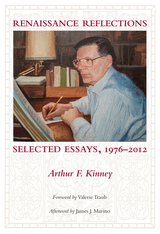 Renaissance Reflections: Selected Essays
Arthur F. Kinney
University of Massachusetts Press, 2014
"Arthur Kinney has made so many contributions to the study of English literature, in so many different roles, that it can be difficult to reckon with the true sum of his achievement. . . . His curiosity encompasses an entire world and all the things in it, the very world that English Renaissance thinkers inhabited and approached with the same comprehensive spirit of inquiry. . . . Every topic to which he turns in these pages is pursued with impeccable scholarly rigor. . . . To pursue new approaches as Kinney has done year after year and decade after decade requires the nerve to risk failure, even repeated failure. It demands that the scholar constantly explore unfamiliar ground where the feet are still unsure and use analytical tools before they have grown familiar in the hand. It asks the thinker to move outside the security of expertise, the writer to advance arguments that may not succeed. . . . [Kinney] has provided us a wholly different model of a distinguished scholarly career, spending decades in pursuit of intellectual risk and adventure."—James J. Marino, author of Owning William Shakespeare: The King's Men and Their Intellectual Property
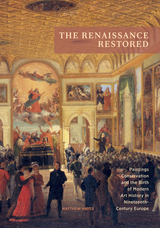 The Renaissance Restored: Paintings Conservation and the Birth of Modern Art History in Nineteenth-Century Europe
Matthew Hayes
J. Paul Getty Trust, The, 2021 This handsomely illustrated volume traces the intersections of art history and paintings restoration in nineteenth-century Europe.
Repairing works of art and writing about them—the practices that became art conservation and art history—share a common ancestry. By the nineteenth century the two fields had become inseparably linked. While the art historical scholarship of this period has been widely studied, its restoration practices have received less scrutiny—until now.
This book charts the intersections between art history and conservation in the treatment of Italian Renaissance paintings in nineteenth-century Europe. Initial chapters discuss the restoration of works by Giotto and Titian, framed by the contemporary scholarship of art historians such as Jacob Burckhardt, G. B. Cavalcaselle, and Joseph Crowe that was redefining the earlier age. Subsequent chapters recount how paintings conservation was integrated into museum settings. The narrative uses period texts, unpublished archival materials, and historical photographs in probing how paintings looked at a time when scholars were writing the foundational texts of art history, and how contemporary restorers were negotiating the appearances of these works. The book proposes a model for a new conservation history, object focused yet enriched by consideration of a wider cultural horizon.
Renaissance Revivals: City Comedy and Revenge Tragedy in the London Theater, 1576-1980
Wendy Griswold
University of Chicago Press, 1986 Renaissance Revivals examines patterns in the London revivals of two English Renaissance theatre genres over the past four centuries. Griswold's focus on revenge tragedies and city comedies illuminates the ongoing interaction between society and its cultural products. No cultural object is ever created anew, she argues, but is instead constructed from existing cultural genres and conventions, the visions and professional needs of the artist, and the interests of an audience. Thus, every "new play" is in part a renaissance and every "revival" is in part an entirely new cultural object.
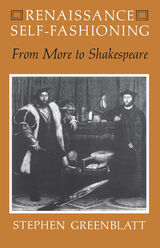 Renaissance Self-Fashioning: From More to Shakespeare
Stephen Greenblatt
University of Chicago Press, 1983 Renaissance Self-Fashioning is a study of sixteenth-century life and literature that spawned a new era of scholarly inquiry. Stephen Greenblatt examines the structure of selfhood as evidenced in major literary figures of the English Renaissance—More, Tyndale, Wyatt, Spenser, Marlowe, and Shakespeare—and finds that in the early modern period new questions surrounding the nature of identity heavily influenced the literature of the era. Now a classic text in literary studies, Renaissance Self-Fashioning continues to be of interest to students of the Renaissance, English literature, and the new historicist tradition, and this new edition includes a preface by the author on the book's creation and influence.
"No one who has read [Greenblatt's] accounts of More, Tyndale, Wyatt, and others can fail to be moved, as well as enlightened, by an interpretive mode which is as humane and sympathetic as it is analytical. These portraits are poignantly, subtly, and minutely rendered in a beautifully lucid prose alive in every sentence to the ambivalences and complexities of its subjects."—Harry Berger Jr., University of California, Santa Cruz
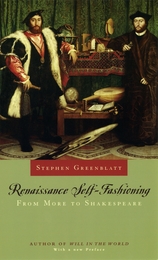 Renaissance Self-Fashioning: From More to Shakespeare
Stephen Greenblatt
University of Chicago Press, 2005 Renaissance Self-Fashioning is a study of sixteenth-century life and literature that spawned a new era of scholarly inquiry. Stephen Greenblatt examines the structure of selfhood as evidenced in major literary figures of the English Renaissance—More, Tyndale, Wyatt, Spenser, Marlowe, and Shakespeare—and finds that in the early modern period new questions surrounding the nature of identity heavily influenced the literature of the era. Now a classic text in literary studies, Renaissance Self-Fashioning continues to be of interest to students of the Renaissance, English literature, and the new historicist tradition, and this new edition includes a preface by the author on the book's creation and influence.
"No one who has read [Greenblatt's] accounts of More, Tyndale, Wyatt, and others can fail to be moved, as well as enlightened, by an interpretive mode which is as humane and sympathetic as it is analytical. These portraits are poignantly, subtly, and minutely rendered in a beautifully lucid prose alive in every sentence to the ambivalences and complexities of its subjects."—Harry Berger Jr., University of California, Santa Cruz
Renaissance Shakespeare/Shakespeare Renaissances: Proceedings of the Ninth World Shakespeare Congress
Martin Procházka
University of Delaware Press, 2014 Selected contributions to the Ninth World Shakespeare Congress, which took place in July 2011 in Prague, represent the contemporary state of Shakespeare studies in thirty-eight countries worldwide. Apart from readings of Shakespeare’s plays and poems, more than forty chapters map Renaissance contexts of his art in politics, theater, law, or material culture and discuss numerous cases of the impact of his works in global culture from the Americas to the Far East, including stage productions, book culture, translations, film and television adaptations, festivals, and national heritage. The last section of the book focuses on the afterlife of Shakespeare in the work of the leading British dramatist Tom Stoppard.
Published by University of Delaware Press. Distributed worldwide by Rutgers University Press.
Renaissance Studies in Honor of Joseph Connors, Volumes 1 and 2
Machtelt Israëls
Harvard University Press The 177 essays in these two richly illustrated volumes represent the cutting edge of Italian Renaissance scholarship in nearly every one of its fields and were gathered to honor Joseph Connors, Director of Villa I Tatti from 2002 to 2010. Demonstrating I Tatti’s pivotal role as the world’s leading center for Italian Renaissance studies, the essays cover all the branches of art history, as well as many aspects of political, economic, and social history, literature, and music, from the early Renaissance to the eighteenth century. Appropriately, the volumes also include a selection of contributions devoted to Bernard Berenson and his legacy as both a collector and a scholar. Each of the authors—a group representing dozens of countries—was a Fellow or associate of the Harvard University Center for Italian Renaissance Studies during the eight years in which Connors served as Director.
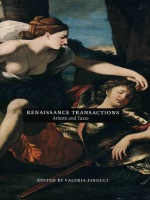 Renaissance Transactions: Ariosto and Tasso
Valeria Finucci, ed.
Duke University Press, 1999 The controversy generated in Italy by the writings of Ludovico Ariosto and Torquato Tasso during the sixteenth century was the first historically important debate on what constitutes modern literature. Applying current critical theories and tools, the essays in Renaissance Transactions reexamine these two provocative poet-thinkers, the debate they inspired, and the reasons why that debate remains relevant today. Resituating these writers’ works in the context of the Renaissance while also offering appraisals of their uncanny “postmodernity,” the contributors to this volume focus primarily on Ariosto’s Orlando furioso and Tasso’s Gerusalemme liberata. Essays center on questions of national and religious identity, performative representation, and the theatricality of literature. They also address subjects regarding genre and gender, social and legal anthropology, and reactionary versus revolutionary writing. Finally, they advance the historically significant debate about what constitutes modern literature by revisiting with new perspective questions first asked centuries ago: Did Ariosto invent a truly national, and uniquely Italian, literary genre—the chivalric romance? Or did Tasso alone, by equaling the epic standards of Homer and Virgil, make it possible for a literature written in Italian to attain the status of its classical Greek and Latin antecedents? Arguing that Ariosto and Tasso are still central to the debate on what constitutes modern narrative, this collection will be invaluable to scholars of Italian literature, literary history, critical theory, and the Renaissance. Contributors. Jo Ann Cavallo, Valeria Finucci, Katherine Hoffman, Daniel Javitch, Constance Jordan, Ronald L. Martinez, Eric Nicholson, Walter Stephens, Naomi Yavneh, Sergio Zatti
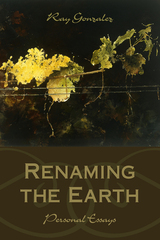 Renaming the Earth: Personal Essays
Ray Gonzalez
University of Arizona Press, 2008 In his distinctive and spirited way, Ray Gonzalez, the well-known essayist, poet, fiction writer, and anthologist, reflects on the American Southwest—where he was raised and to which he still feels attached (even though he has lived much of his life elsewhere). It is a place that tugs at him, from its arid desert landscapes to its polyglot cities—part Mexican, part Anglo, part something in-between—always in the process of redefining themselves.
Nowhere does the process of redefinition hit Gonzalez quite as hard as in his native city of El Paso, Texas. There he finds the “segregated little town of my childhood” transformed into “a metropolis of fast Latino zip codes . . . a world where the cell phone, the quick beer, the rented apartment, and the low-paying job say you can be young and happy on the border.” Readers will wonder, along with the author, whether life along the “new border” is worth “the extermination of the old boundaries.”
But there is another side of the Southwest for this “son of the desert”—the world of dusty canyons, ponderosa pines, ocotillo, and mesquite. Here, he writes, “there is a shadow, and it is called ancient home—structures erased from their seed to grow elsewhere, vultured strings searching for a frame that stands atop history and renames the ground.”
Rooted in the desert sand and in the banks of the Rio Grande, the muddy river that forms the border between nations, these essays are by turns lyrical, mournful, warm to the ways of the land, and lukewarm to the ways of man.
Rencontre
Carolin Meister and Jean-Luc Nancy
Diaphanes, 2021 D’une rencontre est né un dialogue au sujet de la rencontre : un étonnement partagé de la possibilité qu’ait lieu l’incalculable, l’imprévisible et l’irréductible. Une curiosité pour la justesse de ce qui n’a été ni concerté ni décidé.
Hasard, providence, intrication quantique, rituel, animisme, étreinte ou porosité, pensée ou art sont autant de tentatives de tourner autour de ce qui nous échappe quand nous nous rencontrons. Et autant de façons de se rencontrer là où la philosophie reconnait que l’art lui échappe.
 The Rendering
Anthony Cody
Omnidawn, 2023 A poetry collection that considers climate change and the possibility of wholeness within the Anthropocene.
Through a series of experimental poems centered on ecology, Anthony Cody’s The Rendering confronts the history of the Dust Bowl and its residual impacts on our current climate crisis, while acknowledging the complicities of capitalism. These poems grapple with questions of wholeness and annihilation in an Anthropocenic world where the fallout of settler colonialism continues to inflict environmental and cultural devastation. Cody encourages readers to participate in radical acts of refreshing and reimagining the page, poem, collection, and the self, and he invites us to reflect on what lies ahead should our climate continue on its current trajectory toward destruction.
These poems consider if wholeness, or a journey toward wholeness, can exist in the Anthropocene. And, if wholeness cannot exist in these times, we are invited to look at our lives and the world through and beyond annihilation.
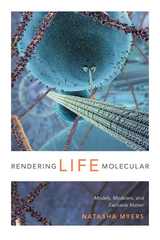 Rendering Life Molecular: Models, Modelers, and Excitable Matter
Natasha Myers
Duke University Press, 2015 What are living bodies made of? Protein modelers tell us that our cells are composed of millions of proteins, intricately folded molecular structures on the scale of nanoparticles. Proteins twist and wriggle as they carry out the activities that keep cells alive. Figuring out how to make these unruly substances visible, tangible, and workable is a challenging task, one that is not readily automated, even by the fastest computers. Natasha Myers explores what protein modelers must do to render three-dimensional, atomic-resolution models of these lively materials. Rendering Life Molecular shows that protein models are not just informed by scientific data: model building entangles a modeler’s entire sensorium, and modelers must learn to feel their way through the data in order to interpret molecular forms. Myers takes us into protein modeling laboratories and classrooms, tracking how gesture, affect, imagination, and intuition shape practices of objectivity. Asking, ‘What is life becoming in modelers' hands?’ she tunes into the ways they animate molecules through their moving bodies and other media. In the process she amplifies an otherwise muted liveliness inflecting mechanistic accounts of the stuff of life.
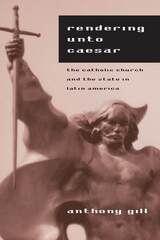 Rendering unto Caesar: The Catholic Church and the State in Latin America
Anthony Gill
University of Chicago Press, 1997 Nowhere has the relationship between state and church been more volatile in recent decades than in Latin America. Anthony Gill's controversial book not only explains why Catholic leaders in some countries came to oppose dictatorial rule but, equally important, why many did not. Using historical and statistical evidence from twelve countries, Gill for the first time uncovers the causal connection between religious competition and the rise of progressive Catholicism. In places where evangelical Protestantism and "spiritist" sects made inroads among poor Catholics, Church leaders championed the rights of the poor and turned against authoritarian regimes to retain parishioners. Where competition was minimal, bishops maintained good relations with military rulers. Applying economic reasoning to an entirely new setting, Rendering unto Caesar offers a new theory of religious competition that dramatically revises our understanding of church-state relations.
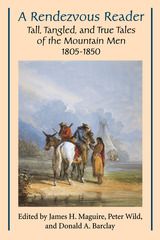 Rendezvous Reader
James H. Maguire
University of Utah Press, 1997 The early plans for Mount Rushmore called for blasting heroic likenesses of mountain men--Kit Carson, Jim Bridger, and John Colter-—into the solid mountain granite of South Dakota. Readers of this colorful volume will see the heroics and the brutally rugged individualism that made these fur trappers candidates for legend and infamy.
The accounts of the mountain men are spun from the experiences of a nation moving westward: a trapper returns from the dead; hunters feast on buffalo intestines served on a dirty blanket; a missionary woman is astounded by the violence and vulgarity of the trappers’ rendezvous. These are just a few of the narratives, tall tales, and just plain lies that make up A Rendezvous Reader.
The writers represented in this book include a dyed-in-the wool trappers, adventuring European nobles, upward-gazing eastern missionaries, and just plain hacks who never unsheathed a Green River knife or traveled farther west that the Ohio River. What these writers have in common is that all of them, whether they dealt mostly in fact of entirely in fantasy, helped to create a uniquely American icon: the mountain man.
Though A Rendezvous Reader will certainly be of interest to the historian and the historically curious, the true purpose of this anthology is to bring together in one volume the liveliest most readable accounts by and about the mountain men. Whether you sample or devour this anthology of mountain horrors and delights, it is a book guaranteed to entertain as well as inform.
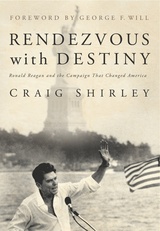 Rendezvous with Destiny: Ronald Reagan and the Campaign That Changed America
Craig Shirley
Intercollegiate Studies Institute, 2009 Normal 0 false false false MicrosoftInternetExplorer4 st1\:*{behavior:url(#ieooui) } /* Style Definitions */ table.MsoNormalTable {mso-style-name:"Table Normal"; mso-tstyle-rowband-size:0; mso-tstyle-colband-size:0; mso-style-noshow:yes; mso-style-parent:""; mso-padding-alt:0in 5.4pt 0in 5.4pt; mso-para-margin:0in; mso-para-margin-bottom:.0001pt; mso-pagination:widow-orphan; font-size:10.0pt; font-family:"Times New Roman"; mso-ansi-language:#0400; mso-fareast-language:#0400; mso-bidi-language:#0400;}
Normal 0 false false false MicrosoftInternetExplorer4 st1\:*{behavior:url(#ieooui) } /* Style Definitions */ table.MsoNormalTable {mso-style-name:"Table Normal"; mso-tstyle-rowband-size:0; mso-tstyle-colband-size:0; mso-style-noshow:yes; mso-style-parent:""; mso-padding-alt:0in 5.4pt 0in 5.4pt; mso-para-margin:0in; mso-para-margin-bottom:.0001pt; mso-pagination:widow-orphan; font-size:10.0pt; font-family:"Times New Roman"; mso-ansi-language:#0400; mso-fareast-language:#0400; mso-bidi-language:#0400;}
As late as Election Day, headlines across the country blared that the race was “too close to call.”
Even on the verge of his historic triumph in the 1980 presidential election, political observers continued to underestimate Ronald Wilson Reagan.
In Rendezvous with Destiny, the long-awaited follow-up to his widely praised account of Reagan’s insurgent 1976 presidential campaign, Craig Shirley tells the incredible behind-the-scenes story of Reagan’s improbable run to the White House in 1980—of how the “too close to call” election became a landslide victory over incumbent Jimmy Carter and independent candidate John Anderson.
And this, Shirley shows, was no ordinary election. It dramatically altered the course of American—and world—history. Reagan’s victory gave rise to a new generation of conservatism, ended liberalism’s half-century reign of dominance, reversed the second-worst economic crisis in American history, and led to the demise of the mighty Soviet Union.
To write Rendezvous with Destiny, Shirley gained unprecedented access to 1980 campaign files and interviewed more than 150 insiders—from Reagan’s closest advisers and family members to Jimmy Carter himself. The result is the first comprehensive history of the hard-fought 1980 campaign, a gripping account that follows Reagan’s unlikely path from his bitter defeat on the floor of the 1976 Republican convention, through his underreported “wilderness years,” through grueling primary fights in which he knocked out several Republican heavyweights, through an often-nasty general election campaign complicated by the presence of a third-party candidate (not to mention the looming shadow of Ted Kennedy), to Reagan’s astounding victory on Election Night in 1980. Shirley’s years of intensive research have enabled him to relate countless untold stories—including, at long last, the solution to one of the most enduring mysteries in politics: just how Reagan’s campaign got hold of Carter’s debate briefing books.
Rendezvous with Destiny reveals how Reagan successfully battled the headwinds of the national media, the Republican Party establishment, and even his own campaign team to become one of America’s greatest chief executives.
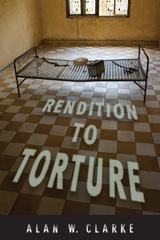 Rendition to Torture
Clarke, Alan W
Rutgers University Press, 2012 Universally condemned and everywhere illegal, torture goes on in democracies as well as in dictatorships. Nonetheless, many Americans were surprised following the attacks of 9/11 at how easily the United States embraced torture as well as the supposedly lesser evil of cruel, inhuman, and degrading treatment. Nothing seemed extreme when it came to questioning real and imagined terrorists. Extraordinary rendition—sending people captured in the “war on terror” to nations long counted among the world’s worst human rights violators—hid from the public eye cruel and bloody interrogations. “Torture lite” or “torture without marks” became the norm for those in American custody. In Rendition to Torture, Alan W. Clarke explains how the United States adopted torture as a matter of official policy; how and why it turned to extraordinary rendition as a way to outsource more extreme, mutilating forms of torture; and outlines the steps the United States took to hide its abuses. Many adverse consequences attended American use of torture. False information gleaned from torture was used to justify the Iraq war, adding potency to the charge that the war was illegal under international law. Moreover, European nations and Canada aided, abetted, and became thoroughly enmeshed in U.S.-led torture and renditions, thereby spreading both the problem and the blame for this practice. Clarke offers an extended critique of these activities, placing them in historical and legal context as well as in transnational and comparative perspective.
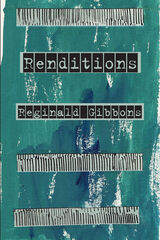 Renditions
Reginald Gibbons
Four Way Books, 2021 An energetic exploration of the expanse of language translated and otherwise transformed
In Renditions Reginald Gibbons conducts an ensemble of poetic voices, using the works of a varied, international selection of writers as departure points for his translations and transformations. The collection poses the idea that all writing is, at least abstractly, an act of translation, whether said act “translates” observation into word or moves ideas from one language to another. Through these acts of transformation, Gibbons infuses the English language with stylistic aspects of other languages and poetic traditions. The resulting poems are imbued with a sense of homage that allows us to respectfully reimagine the borders of language and revel in the fellowship of idea sharing. In this tragicomedy of the human experience and investigation of humanity’s effects, Gibbons identifies the “shared underthoughts that we can (all) sense:” desire, love, pain, and fervor.
 René Girard and Secular Modernity: Christ, Culture, and Crisis
Scott Cowdell
University of Notre Dame Press, 2013 In René Girard and Secular Modernity: Christ, Culture, and Crisis, Scott Cowdell provides the first systematic interpretation of René Girard’s controversial approach to secular modernity. Cowdell identifies the scope, development, and implications of Girard’s thought, the centrality of Christ in Girard's thinking, and, in particular, Girard's distinctive take on the uniqueness and finality of Christ in terms of his impact on Western culture. In Girard’s singular vision, according to Cowdell, secular modernity has emerged thanks to the Bible’s exposure of the cathartic violence that is at the root of religious prohibitions, myths, and rituals. In the literature, the psychology, and most recently the military history of modernity, Girard discerns a consistent slide into an apocalypse that challenges modern ideas of romanticism, individualism, and progressivism.
In the first three chapters, Cowdell examines the three elements of Girard’s basic intellectual vision (mimesis, sacrifice, biblical hermeneutics) and brings this vision to a constructive interpretation of “secularization” and “modernity,” as these terms are understood in the broadest sense today. Chapter 4 focuses on modern institutions, chiefly the nation state and the market, that function to restrain the outbreak of violence. And finally, Cowdell discusses the apocalyptic dimension of Girard's theory in relation to modern warfare and terrorism. Here, Cowdell engages with the most recent writings of Girard (particularly his Battling to the End) and applies them to further conversations in cultural theology, political science, and philosophy. Cowdell takes up and extends Girard’s own warning concerning an alternative to a future apocalypse: “What sort of conversion must humans undergo, before it is too late?”
"Scott Cowdell's book is the first comprehensive study of modernity and secularity in René Girard's thought. Cowdell brings Girard's theory into a fruitful dialogue with leading approaches on secularization like those of Max Weber, Hans Blumenberg, Peter Berger, and Charles Taylor. Scholars and students of theology, philosophy, and sociology will benefit from this wide-ranging overview of the relationship between religion, modernity, and secularization." —Wolfgang Palaver, Institute of Systematic Theology, University of Innsbruck
"In a stunning analysis, Cowdell shows that Girard’s sustained intellectual pursuit, which began in the 1960s with his mimetic analysis of modern realist fiction, has always been about the (Durkheimian) religiosity of the modern and postmodern social condition, even when it has dealt explicitly with the religious origins of antique culture. Cowdell demonstrates the 'highly explanatory and predictive' quality of Girard’s cultural anthropology, within which the 'secular' does not (and indeed cannot) escape the 'religious.' This is a powerful book." —Ann W. Astell, University of Notre Dame
"Scott Cowdell is one of the most interesting theological voices of his generation. The themes in Cowdell's work are always cosmic and vast in scope. This is a remarkable reading of our contemporary situation through the lens of René Girard. Accurate, informed, and illuminating, Cowdell has written a fabulous book. For the person needing a way into Girard and for the person who is already using Girard's work, Cowdell brings out the implications of Girard for the moment in which we live. An absolutely essential addition to your personal library." —The Very Rev Dr. Ian Markham, Virginia Theological Seminary
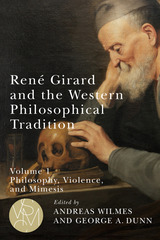 René Girard and the Western Philosophical Tradition, volume 1: Philosophy, Violence, and Mimesis
Andreas Wilmes
Michigan State University Press, 2024 This edited volume situates René Girard in relation to the Western philosophical tradition. Each chapter engages the French anthropologist in dialogue with a key figure from the history of Western philosophy, from Plato to Kierkegaard. The pivotal question of René Girard and the Western Philosophical Tradition revolves around Girard’s assertion, “Since the attempt to understand religion on the basis of philosophy has failed, we ought to try the reverse method and read philosophy in the light of religion.” Major philosophers influenced Girard and contributed valuable insights into questions of desire, religion, violence, and the sacred. At the same time, he felt that Western philosophy often, if not always, neglected the founding violence that lies at the origin of culture.
This is the first collective scholarly effort at situating René Girard in relation to the Western philosophical tradition. Volume 1 features chapters on Plato, Augustine of Hippo, Niccolò Machiavelli, Thomas Hobbes, Blaise Pascal, Baruch Spinoza, Jean-Jacques Rousseau, Adam Smith, Immanuel Kant, Georg Wilhelm Friedrich Hegel, Friedrich Wilhelm Joseph Schelling, Alexis de Tocqueville, Søren Kierkegaard, and René Girard.
 René Girard, Unlikely Apologist: Mimetic Theory and Fundamental Theology
Grant Kaplan
University of Notre Dame Press, 2016 Since the late 1970s, theologians have been attempting to integrate mimetic theory into different fields of theology, yet a distrust of mimetic theory persists in some theological camps. In René Girard, Unlikely Apologist: Mimetic Theory and Fundamental Theology, Grant Kaplan brings mimetic theory into conversation with theology both to elucidate the relevance of mimetic theory for the discipline of fundamental theology and to understand the work of René Girard within a theological framework. Rather than focus on Christology or atonement theory as the locus of interaction between Girard and theology, Kaplan centers his discussion on the apologetic quality of mimetic theory and the impact of mimetic theory on fundamental theology, the subdiscipline that grew to replace apologetics. His book explores the relation between Girard and fundamental theology in several keys. In one, it understands mimetic theory as a heuristic device that allows theological narratives and positions to become more intelligible and, by so doing, makes theology more persuasive. In another key, Kaplan shows how mimetic theory, when placed in dialogue with particular theologians, can advance theological discussion in areas where mimetic theory has seldom been invoked. On this level the book performs a dialogue with theology that both revisits earlier theological efforts and also demonstrates how mimetic theory brings valuable dimensions to questions of fundamental theology.
"Grant Kaplan's René Girard, Unlikely Apologist: Mimetic Theory and Fundamental Theology is an accessible and original work advancing the discussion of Girard and theology. Kaplan claims mimetic theory for Catholic theology and shows how it can strengthen Catholic theology by providing a powerful apologetic. Immensely helpful, too, is his situating of Girard's work alongside formative theologians and other thinkers." —Scott Cowdell, author of René Girard and Secular Modernity: Christ, Culture, and Crisis
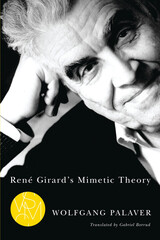 René Girard's Mimetic Theory
Wolfgang Palaver
Michigan State University Press, 2013 A systematic introduction into the mimetic theory of the French-American literary theorist and philosophical anthropologist René Girard, this essential text explains its three main pillars (mimetic desire, the scapegoat mechanism, and the Biblical “difference”) with the help of examples from literature and philosophy. This book also offers an overview of René Girard’s life and work, showing how much mimetic theory results from existential and spiritual insights into one’s own mimetic entanglements. Furthermore it examines the broader implications of Girard’s theories, from the mimetic aspect of sovereignty and wars to the relationship between the scapegoat mechanism and the question of capital punishment. Mimetic theory is placed within the context of current cultural and political debates like the relationship between religion and modernity, terrorism, the death penalty, and gender issues. Drawing textual examples from European literature (Cervantes, Shakespeare, Goethe, Kleist, Stendhal, Storm, Flaubert, Dostoevsky, Proust) and philosophy (Plato, Camus, Sartre, Lévi-Strauss, Derrida, Vattimo), Palaver uses mimetic theory to explore the themes they present. A highly accessible book, this text is complemented by bibliographical references to Girard’s widespread work and secondary literature on mimetic theory and its applications, comprising a valuable bibliographical archive that provides the reader with an overview of the development and discussion of mimetic theory until the present day.
René Magritte: Selected Writings
René Magritte
University of Minnesota Press, 2016 Available for the first time in an English translation, this selection of René Magritte’s writings gives non-Francophone readers the chance to encounter the many incarnations of the renowned Belgian painter—the artist, the man, the aspiring noirist, the fire-breathing theorist—in his own words. Through whimsical personal letters, biting apologia, appreciations of fellow artists, pugnacious interviews, farcical film scripts, prose poems, manifestos, and much more, a new Magritte emerges: part Surrealist, part literalist, part celebrity, part rascal.While this book is sure to appeal to admirers of Magritte’s art and those who are curious about his personal life, there is also much to delight readers interested in the history and theory of art, philosophy and politics, as well as lovers of creativity and the inner workings of a probing, inquisitive mind unrestricted by genre, medium, or fashion.
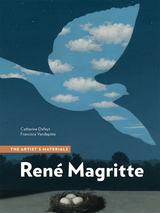 René Magritte: The Artist’s Materials
Catherine Defeyt
J. Paul Getty Trust, The The first book-length material study of the works of Belgian Surrealist René Magritte.
René Magritte (1898–1967) is the most famous Belgian artist of the twentieth century and a celebrated representative of the Surrealist movement. Much has been written about his practices, artistic community, and significance within the history of modernism, but little has been documented regarding his process.
This volume examines fifty oil paintings made by Magritte between 1921 and 1967, now held at the Royal Museums of Fine Arts of Belgium. This technical study of his works using noninvasive scientific imaging and chemical analysis reveals the artist’s painting materials, his habit of overpainting previous compositions, and the origins and mechanisms of surface and pigment degradation. Of interest to conservators, scientists, curators, and enthusiasts of twentieth-century art, this book expands our understanding of Magritte the artist and provides new and useful findings that will inform strategies for the future care of his works.
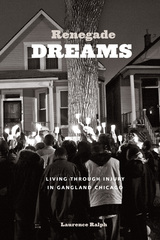 Renegade Dreams: Living through Injury in Gangland Chicago
Laurence Ralph
University of Chicago Press, 2014 Every morning Chicagoans wake up to the same stark headlines that read like some macabre score: “13 shot, 4 dead overnight across the city,” and nearly every morning the same elision occurs: what of the nine other victims? As with war, much of our focus on inner-city violence is on the death toll, but the reality is that far more victims live to see another day and must cope with their injuries—both physical and psychological—for the rest of their lives. Renegade Dreams is their story. Walking the streets of one of Chicago’s most violent neighborhoods—where the local gang has been active for more than fifty years—Laurence Ralph talks with people whose lives are irrecoverably damaged, seeking to understand how they cope and how they can be better helped.
Going deep into a West Side neighborhood most Chicagoans only know from news reports—a place where children have been shot just for crossing the wrong street—Ralph unearths the fragile humanity that fights to stay alive there, to thrive, against all odds. He talks to mothers, grandmothers, and pastors, to activists and gang leaders, to the maimed and the hopeful, to aspiring rappers, athletes, or those who simply want safe passage to school or a steady job. Gangland Chicago, he shows, is as complicated as ever. It’s not just a warzone but a community, a place where people’s dreams are projected against the backdrop of unemployment, dilapidated housing, incarceration, addiction, and disease, the many hallmarks of urban poverty that harden like so many scars in their lives. Recounting their stories, he wrestles with what it means to be an outsider in a place like this, whether or not his attempt to understand, to help, might not in fact inflict its own damage. Ultimately he shows that the many injuries these people carry—like dreams—are a crucial form of resilience, and that we should all think about the ghetto differently, not as an abandoned island of unmitigated violence and its helpless victims but as a neighborhood, full of homes, as a part of the larger society in which we all live, together, among one another.
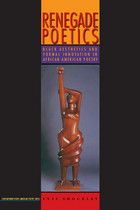 Renegade Poetics: Black Aesthetics and Formal Innovation in African American Poetry
Evie Shockley
University of Iowa Press, 2011 Beginning with a deceptively simple question—What do we mean when we designate behaviors, values, or forms of expression as “black”?—Evie Shockley’s Renegade Poetics separates what we think we know about black aesthetics from the more complex and nuanced possibilities the concept has long encompassed. The study reminds us, first, that even among the radicalized young poets and theorists who associated themselves with the Black Arts Movement that began in the mid-1960s, the contours of black aesthetics were deeply contested and, second, that debates about the relationship between aesthetics and politics for African American artists continue into the twenty-first century. Shockley argues that a rigid notion of black aesthetics commonly circulates that is little more than a caricature of the concept. She sees the Black Aesthetic as influencing not only African American poets and their poetic production, but also, through its shaping of criteria and values, the reception of their work. Taking as its starting point the young BAM artists’ and activists’ insistence upon the interconnectedness of culture and politics, this study delineates how African American poets—in particular, Gwendolyn Brooks, Sonia Sanchez, Harryette Mullen, Anne Spencer, Ed Roberson, and Will Alexander—generate formally innovative responses to their various historical and cultural contexts. Out of her readings, Shockley eloquently builds a case for redefining black aesthetics descriptively, to account for nearly a century of efforts by African American poets and critics to name and tackle issues of racial identity and self-determination. In the process, she resituates innovative poetry that has been dismissed, marginalized, or misread because its experiments were not “recognizably black”—or, in relation to the avant-garde tradition, because they were.
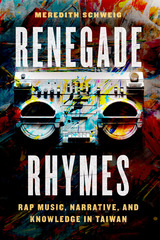 Renegade Rhymes: Rap Music, Narrative, and Knowledge in Taiwan
Meredith Schweig
University of Chicago Press, 2022 A close look at how Taiwanese musicians are using rap music as a creative way to explore and reconcile Taiwanese identity and history.
Like many states emerging from oppressive political rule, Taiwan saw a cultural explosion in the late 1980s, when nearly four decades of martial law under the Chinese Nationalist Party ended. As members of a multicultural, multilingual society with a complex history of migration and colonization, Taiwanese people entered this moment of political transformation eager to tell their stories and grapple with their identities. In Renegade Rhymes, ethnomusicologist Meredith Schweig shows how rap music has become a powerful tool in the post-authoritarian period for both exploring and producing new knowledge about the ethnic, cultural, and political history of Taiwan.
Schweig draws on extensive ethnographic fieldwork, taking readers to concert venues, music video sets, scenes of protest, and more to show how early MCs from marginalized ethnic groups infused rap with important aspects of their own local languages, music, and narrative traditions. Aiming their critiques at the educational system and a neoliberal economy, new generations of rappers have used the art form to nurture associational bonds and rehearse rituals of democratic citizenship, making a new kind of sense out of their complicated present.
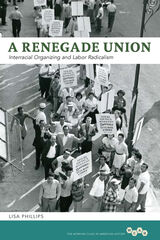 A Renegade Union: Interracial Organizing and Labor Radicalism
Lisa Phillips
University of Illinois Press, 2013 Dedicated to organizing workers from diverse racial, ethnic, and religious backgrounds, many of whom were considered "unorganizable" by other unions, the progressive New York City-based labor union District 65 counted among its 30,000 members retail clerks, office workers, warehouse workers, and wholesale workers. In this book, Lisa Phillips presents a distinctive study of District 65 and its efforts to secure economic equality for minority workers in sales and processing jobs in small, low-end shops and warehouses throughout the city. Phillips shows how organizers fought tirelessly to achieve better hours and higher wages for "unskilled," unrepresented workers and to destigmatize the kind of work they performed. Closely examining the strategies employed by District 65 from the 1930s through the early Cold War years, Phillips assesses the impact of the McCarthy era on the union's quest for economic equality across divisions of race, ethnicity, and skill. Though their stories have been overshadowed by those of auto, steel, and electrical workers who forced American manufacturing giants to unionize, the District 65 workers believed their union provided them with an opportunity to re-value their work, the result of an economy inclining toward fewer manufacturing jobs and more low-wage service and processing jobs. Phillips recounts how District 65 first broke with the CIO over the latter's hostility to left-oriented politics and organizing agendas, then rejoined to facilitate alliances with the NAACP. In telling the story of District 65 and detailing community organizing efforts during the first part of the Cold War and under the AFL-CIO umbrella, A Renegade Union continues to revise the history of the left-led unions of the Congress of Industrial Organizations.
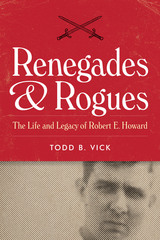 Renegades and Rogues: The Life and Legacy of Robert E. Howard
By Todd B. Vick
University of Texas Press, 2021 2022 Atlantean Award, Robert E. Howard Foundation You may not know the name Robert E. Howard, but you probably know his work. His most famous creation, Conan the Barbarian, is an icon of popular culture. In hundreds of tales detailing the exploits of Conan, King Kull, and others, Howard helped to invent the sword and sorcery genre. Todd B. Vick delves into newly available archives and probes Howard’s relationships, particularly with schoolteacher Novalyne Price, to bring a fresh, objective perspective to Howard's life. Like his many characters, Howard was an enigma and an outsider. He spent his formative years visiting the four corners of Texas, experiences that left a mark on his stories. He was intensely devoted to his mother, whom he nursed in her final days, and whose impending death contributed to his suicide in 1936 when he was just thirty years old. Renegades and Rogues is an unequivocal journalistic account that situates Howard within the broader context of pulp literature. More than a realistic fantasist, he wrote westerns and horror stories as well, and engaged in avid correspondence with H. P. Lovecraft and other pulp writers of his day. Vick investigates Howard’s twelve-year writing career, analyzes the influences that underlay his celebrated characters, and assesses the afterlife of Conan, the figure in whom Howard's fervent imagination achieved its most durable expression.
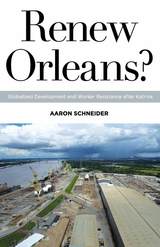 Renew Orleans?: Globalized Development and Worker Resistance after Katrina
Aaron Schneider
University of Minnesota Press, 2018 Urban development after disaster, the fading of black political clout, and the onset of gentrification
Like no other American city, New Orleans since Hurricane Katrina offers powerful insight into issues of political economy in urban development and, in particular, how a city’s character changes after a disaster that spurs economic and political transition. In New Orleans, the hurricane upset an existing stalemate among rival factions of economic and political elites, and its aftermath facilitated the rise of a globally oriented faction of local capital. In Renew Orleans? Aaron Schneider shows how some city leaders were able to access fragmented local institutions and capture areas of public policy vital to their development agenda. Through interviews and surveys with workers and advocates in construction, restaurants, shipyards, and hotel and casino cleaning, Schneider contrasts sectors prioritized during post-Katrina recovery with neglected sectors. The result is a fine-grained view of the way labor markets are structured to the advantage of elites, emphasizing how dual development produces wealth for the few while distributing poverty and exclusion to the many on the basis of race, gender, and ethnicity. Schneider shows the way exploitation operates both in the workplace and the community, tracing working-class resistance that joins struggles for dignity at home and work. In the process, working classes and popular sectors put forth their own alternative forms of development.
Renewable Energy from the Oceans: From wave, tidal and gradient systems to offshore wind and solar
Domenico P. Coiro
The Institution of Engineering and Technology, 2019 There are many ways to harness the renewable and emissions-free energy available from the Earth's oceans. The technologies include wave energy, tidal and current energy, and energy from thermal and salinity gradients. In addition, offshore wind energy and marine (floating) solar arrays offer a possibility to exploit vast resources that are far larger than those available onshore. The potential capacities range from many hundreds of gigawatts to terawatts of generation. These technologies could contribute a significant part of the global electricity demand; they are particularly suitable for providing sustainable power to marine regions and island communities and nations.
Renewable Resource Policy: The Legal-Institutional Foundations
David A. Adams
Island Press, 1993 Renewable Resource Policy is a comprehensive volume covering the history, laws, and important national policies that affect renewable resource management. The author traces the history of renewable natural resource policy and management in the United States, describes the major federal agencies and their functions, and examines the evolution of the primary resource policy areas. The book provides valuable insight into the often neglected legal, administrative, and bureaucratic aspect of natural resource management. It is a definitive and essential source of information covering all facets of renewable resource policy that brings together a remarkable range of information in a coherent, integrated form.
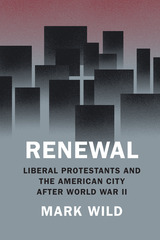 Renewal: Liberal Protestants and the American City after World War II
Mark Wild
University of Chicago Press, 2019 In the decades following World War II, a movement of clergy and laity sought to restore liberal Protestantism to the center of American urban life. Chastened by their failure to avert war and the Holocaust, and troubled by missionaries’ complicity with colonial regimes, they redirected their energies back home.
Renewal explores the rise and fall of this movement, which began as an effort to restore the church’s standing but wound up as nothing less than an openhearted crusade to remake our nation’s cities. These campaigns reached beyond church walls to build or lend a hand to scores of organizations fighting for welfare, social justice, and community empowerment among the increasingly nonwhite urban working class. Church leaders extended their efforts far beyond traditional evangelicalism, often dovetailing with many of the contemporaneous social currents coursing through the nation, including black freedom movements and the War on Poverty.
Renewal illuminates the overlooked story of how religious institutions both shaped and were shaped by postwar urban America.
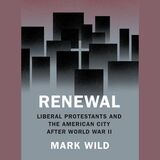 Renewal: Liberal Protestants and the American City after World War II
Mark Wild
University of Chicago Press, 2019 This is an auto-narrated audiobook edition of this book.
In the decades following World War II, a movement of clergy and laity sought to restore liberal Protestantism to the center of American urban life. Chastened by their failure to avert war and the Holocaust, and troubled by missionaries’ complicity with colonial regimes, they redirected their energies back home.
Renewal explores the rise and fall of this movement, which began as an effort to restore the church’s standing but wound up as nothing less than an openhearted crusade to remake our nation’s cities. These campaigns reached beyond church walls to build or lend a hand to scores of organizations fighting for welfare, social justice, and community empowerment among the increasingly nonwhite urban working class. Church leaders extended their efforts far beyond traditional evangelicalism, often dovetailing with many of the contemporaneous social currents coursing through the nation, including black freedom movements and the War on Poverty.
Renewal illuminates the overlooked story of how religious institutions both shaped and were shaped by postwar urban America.
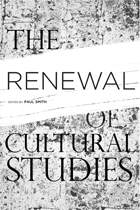 The Renewal of Cultural Studies
Edited by Paul Smith
Temple University Press, 2011 Cultural Studies, once a burgeoning academic field, developed into a discipline in which just about any cultural text, object or event could be studied. The Renewal of Cultural Studies offers a panoramic view of the field, its assumptions, and its methodologies. Editor Paul Smith and thirty contributors map out new directions that will redefine and sustain the field of cultural studies. In twenty-seven original essays, cultural studies is examined in relation to other disciplines—history, anthropology, literature, media, and American studies. The discipline is reviewed in the context of globalization, in relation to topics such as war, public policy, and labor, its pedagogy and politics, and in Marxist, feminist, and environmentalist contexts. Smith wants to establish theoretical and methodological common ground among cultural studies scholars. Providing a “state of the discipline,” The Renewal of Cultural Studies asks, “What can and should the field of Cultural Studies be doing now?”
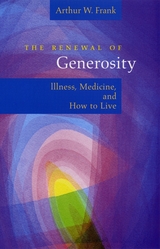 The Renewal of Generosity: Illness, Medicine, and How to Live
Arthur W. Frank
University of Chicago Press, 2004 Contemporary health care often lacks generosity of spirit, even when treatment is most efficient. Too many patients are left unhappy with how they are treated, and too many medical professionals feel estranged from the calling that drew them to medicine. Arthur W. Frank tells the stories of ill people, doctors, and nurses who are restoring generosity to medicine—generosity toward others and to themselves.
The Renewal of Generosity evokes medicine as the face-to-face encounter that comes before and after diagnostics, pharmaceuticals, and surgeries. Frank calls upon the Roman emperor Marcus Aurelius, philosopher Emmanuel Levinas, and literary critic Mikhail Bakhtin to reflect on stories of ill people, doctors, and nurses who transform demoralized medicine into caring relationships. He presents their stories as a source of consolation for both ill and professional alike and as an impetus to changing medical systems. Frank shows how generosity is being renewed through dialogue that is more than the exchange of information. Dialogue is an ethic and an ideal for people on both sides of the medical encounter who want to offer more to those they meet and who want their own lives enriched in the process.
The Renewal of Generosity views illness and medical work with grace and compassion, making an invaluable contribution to expanding our vision of suffering and healing.
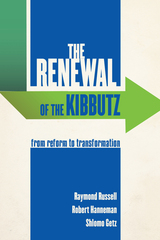 The Renewal of the Kibbutz: From Reform to Transformation
Russell, Raymond
Rutgers University Press, 2015 We think of the kibbutz as a place for communal living and working. Members work, reside, and eat together, and share income “from each according to ability, to each according to need.” But in the late 1980s the kibbutzim decided that they needed to change. Reforms—moderate at first—were put in place. Members could work outside of the organization, but wages went to the collective. Apartments could be expanded, but housing remained kibbutz-owned. In 1995, change accelerated. Kibbutzim began to pay salaries based on the market value of a member’s work. As a result of such changes, the “renewed” kibbutz emerged. By 2010, 75 percent of Israel’s 248 non-religious kibbutzim fit into this new category.
This book explores the waves of reforms since 1990. Looking through the lens of organizational theories that predict how open or closed a group will be to change, the authors find that less successful kibbutzim were most receptive to reform, and reforms then spread through imitation from the economically weaker kibbutzim to the strong.
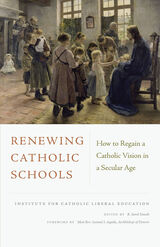 Renewing Catholic Schools: How to Regain a Catholic Vision for a Secular Age
R. Jared Staudt
Catholic University of America Press, 2020 Catholic education remains one of the most compelling expressions of the Church’s mission to form disciples. Despite decades of decline in the number of schools and students, many Catholic schools have been experiencing renewal by returning to the great legacy of the Catholic tradition. Renewing Catholic Schools offers an overview of the reasons behind this renewal and practical suggestions for administrators, clergy, teachers, and parents on how to begin the process of reinvigoration.
The book begins by situating Catholic education within the Church’s mission. Fidelity to Catholic mission and identity, including a commitment to the fulness of truth, provides the fundamental mark for the true success of Catholic education. The Catholic intellectual tradition, in particular, established by figures such as Augustine, Boethius, and Aquinas, can continue to direct Catholic schools, providing a depth of vision to overcome today’s educational crisis.
To transcend the now dominate secular model of education, Catholic schools can align their curriculum more closely to the Catholic tradition. One touchpoint comes from Archbishop Michael Miller’s The Holy See’s Teaching on Catholic Schools, which the book explores as a source for practical guidance. It also offers a Catholic vision for curriculum, examining the full range of subjects from gymnasium, the fine arts, the liberal arts, literature, history, and catechesis, all of which lead to a well-formed graduate, inspired by beauty, attune to truth, and ordered toward the good.
Finally, the book provides a practical vision for renewing the school through the formation of teachers, creation of a school community, and by offering suggestions for implementation of a stronger Catholic mission and philosophy of education. The teacher, ultimately, should strive to teach like Jesus, while the community should joyfully embody the school’s mission, making it a lived reality. The book concludes with examples of Catholic schools that have successfully undergone renewal.
Renewing Islam by Service
Pim Valkenberg
Catholic University of America Press, 2015 Renewing Islam by Service offers a theological account of the contemporary Turkish faith-based service movement started by Fethullah Gülen, and placed against the backdrop of changes in modern Turkish society. The life and works of Gülen are analyzed against the background of developments in Turkish society, and of spiritual Islamic tendencies in the transition from the Ottoman empire to the secular republic. Pim Valkenberg includes stories of his personal experiences with supporters of this movement, in a number of dierent countries, and analyzes the spiritual practices and the faith-based service of this movement that is also compared to some important Christian religious movements.
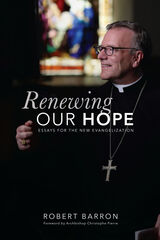 Renewing Our Hope: Essays for the New Evangelization
Robert Barron
Catholic University of America Press, 2020 In a time of discouragement, how can the Church renew itself and its outreach to all people? Bishop Robert Barron, Auxiliary Bishop of the Archdiocese of Los Angeles, insists that a "dumbed down" Catholicism cannot succeed in today's highly educated society--instead, the Church needs to draw upon its great theological heritage in order to renew its hope in Christ.
With Renewing Our Hope: Essays for the New Evangelization, Bishop Barron traces this renewal through four stages. "Renewing Our Mission" lays out the challenges that call for Catholics to become more aware of their own intellectual resources in encountering the "Nones." "Renewing Our Minds" showcases the importance of theological reflection as a font of wisdom and sanity in the Church, touching on Thomas Aquinas, Hans Urs von Balthasar, the recently canonized John Henry Newman, and Pope Francis. In "Renewing the Church," he proceeds to look at how Scripture, the family, the seminary, and Catholic college graduates can each contribute to this renewal. Finally, in "Renewing Our Culture," he returns to the judgments Catholics must make in assessing contemporary culture, specifically, family life, liberalism, relativism, and (surprisingly) the beauty of cinema.
Bishop Barron, known as the host of the Catholicism PBS video series, was previously rector and professor of systematic theology at Mundelein Seminary outside Chicago, Illinois. He demonstrates again in Renewing Our Hope his ability to make the fruits of his wide reading accessible to a broad audience, while still giving his academic colleagues much to consider.
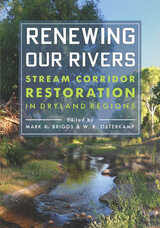 Renewing Our Rivers: Stream Corridor Restoration in Dryland Regions
Edited by Mark K. Briggs and W. R. Osterkamp
University of Arizona Press, 2020 Our rivers are in crisis and the need for river restoration has never been more urgent. Water security and biodiversity indices for all of the world’s major rivers have declined due to pollution, diversions, impoundments, fragmented flows, introduced and invasive species, and many other abuses.
Developing successful restoration responses are essential. Renewing Our Rivers addresses this need head on with examples of how to design and implement stream-corridor restoration projects. Based on the experiences of seasoned professionals, Renewing Our Rivers provides stream restoration practitioners the main steps to develop successful and viable stream restoration projects that last. Ecologists, geomorphologists, and hydrologists from dryland regions of Australia, Mexico, and the United States share case studies and key lessons learned for successful restoration and renewal of our most vital resource.
The aim of this guidebook is to offer essential restoration guidance that allows a start-to-finish overview of what it takes to bring back a damaged stream corridor. Chapters cover planning, such emerging themes as climate change and environmental flow, the nuances of implementing restoration tactics, and monitoring restoration results. Renewing Our Rivers provides community members, educators, students, natural resource practitioners, experts, and scientists broader perspectives on how to move the science of restoration to practical success.
Renewing Philosophy
Hilary Putnam
Harvard University Press, 1992 Hilary Putnam, one of America’s most distinguished philosophers, surveys an astonishingly wide range of issues and proposes a new, clear-cut approach to philosophical questions—a renewal of philosophy. He contests the view that only science offers an appropriate model for philosophical inquiry. His discussion of topics from artificial intelligence to natural selection, and of reductive philosophical views derived from these models, identifies the insuperable problems encountered when philosophy ignores the normative or attempts to reduce it to something else.
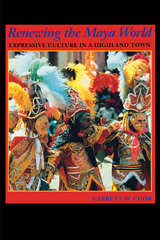 Renewing the Maya World: Expressive Culture in a Highland Town
By Garrett W. Cook
University of Texas Press, 2000 Each year in the Highland Guatemala town of Santiago Momostenango, Maya religious societies, dance teams, and cofradías perform the annual cycle of rituals and festivals prescribed by Costumbre (syncretized Maya Christian religion), which serves to renew the cosmic order. In this richly detailed ethnography, Garrett Cook explores how these festivals of Jesucristo and the saints derive from and reenact three major ancient Maya creation myths, thus revealing patterns of continuity between contemporary expressive culture and the myths, rituals, and iconography of the Classic and Postclassic Maya. Drawing on fieldwork conducted in the 1970s and renewed in the 1990s, Cook describes the expressive culture tradition performed in and by the cofradías and their dance teams. He listens as dancers and cofrades explain the meaning of service and of the major ritual symbols in the cults of the saints and Jesucristo. Comparing these symbols to iconographic evidence from Palenque and myths from the Popol Vuh, Cook persuasively argues that the expressive culture of Momostenango enacts major Maya creation myths—the transformative sunrise, the representation of the year as the life cycle of anthropomorphized nature, and the erection of an axis mundi. This research documents specific patterns of continuity and discontinuity in the communal expression of Maya religious and cosmogonic themes. Along with other recent research, it demonstrates the survival of a basic Maya pattern—the world-creating vegetative renewal cycle—in the highland Maya cults of the saints and Jesucristo.
Renewing the Mind
Ryan N.S. Topping
Catholic University of America Press, 2015 Renewing the Mind includes an introductory essay on the history and renewal of Catholic education, followed by 38 selections each with an introduction, biography, and study questions; adorning the text throughout are illustrations from the National Gallery of Art. Educators of children and college students will find this an essential guide to the best of what has been said about what it means to be conformed to the mind of Christ.
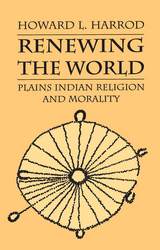 Renewing the World: Plains Indian Religion and Morality
Howard L. Harrod
University of Arizona Press, 1987 A valuable resource for anthropologists, ethnohistorians, and western historians who wish to better understand ritual life in the Plains region. —Western Historical Quarterly
"Harrod's discussion of kinship and reciprocity in Northwest Plains cosmology contains valuable insight into Native American worldview, and his emphasis on the moral dimension of ritual process is a major addition to the too-often ignored subject of Native American moral life." —Journal of Religion
"Includes the major works on Blackfoot, Crow, Cheyennes, and Arapaho religion, the works to which anyone who wishes to understand the religious life of these tribes must continue to turn." —Choice
"Plains people, Harrod suggests, refracted nature and conceived an environmental ethic through a metaphor of kinship. He is particularly skillful in characterizing the ambiguity Plains people expressed at the necessity of killing and eating their animal kin. Renewing the World also contributes to another new and uncultivated science we might call 'ecology of mind'." —Great Plains Quarterly
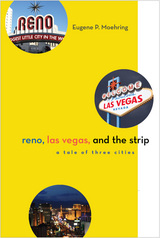 Reno, Las Vegas, and the Strip: A Tale of Three Cities
Eugene P. Moehring
University of Nevada Press, 2024 Eugene P. Moehring analyzes the development of Reno and Las Vegas since 1945 with special emphasis on the years after 1970. Major factors that shaped the development of both cities were the growth of corporate gaming and megaresorts and increased personal leisure and affluence. Moehring provides an engaging, informative, and readable history of the divergent paths that Reno and Las Vegas took over the past forty years. Reno, the nation’s gambling mecca in the 1950s, led the way, developing the successful tourist economy that Las Vegas later embraced. Through the 1970s the two cities resembled each other greatly, but Las Vegas grew to achieve global significance, while Reno slowly declined, searching for new industries to power its future. Moehring shows that the development of the Las Vegas Strip was crucial to southern Nevada’s success. The casinos, hotels, and entertainments of the Strip, and the workers they supported, formed a new urban center ringed by offices, residences, shopping, and a major university. In effect, it became a third metropolis, governed by county commissioners, larger than Reno and Las Vegas combined.
Moehring brings the story of the three cities to the present day, examining lessons learned from the Great Recession and the efforts under way in all three metropolises to diversify their economies. Moehring makes an important contribution with the only current study of Nevada’s cities, focusing on urban development issues rather than social history or the gaming industry. As the service economy continues to grow, not only in Nevada but throughout the United States, Moehring’s work has many implications for urban studies and particularly the study of urban development in other metropolitan areas.
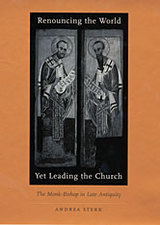 Renouncing the World yet Leading the Church: The Monk-Bishop in Late Antiquity
Andrea Sterk
Harvard University Press, 2004 Although an ascetic ideal of leadership had both classical and biblical roots, it found particularly fertile soil in the monastic fervor of the fourth through sixth centuries. Church officials were increasingly recruited from monastic communities, and the monk-bishop became the dominant model of ecclesiastical leadership in the Eastern Roman Empire and Byzantium. In an interesting paradox, Andrea Sterk explains that "from the world-rejecting monasteries and desert hermitages of the east came many of the most powerful leaders in the church and civil society as a whole."
Sterk explores the social, political, intellectual, and theological grounding for this development. Focusing on four foundational figures--Basil of Caesarea, Gregory of Nyssa, Gregory of Nazianzus, and John Chrysostom--she traces the emergence of a new ideal of ecclesiastical leadership: the merging of ascetic and episcopal authority embodied in the monk-bishop. She also studies church histories, legislation, and popular ascetic and hagiographical literature to show how the ideal spread and why it eventually triumphed. The image of a monastic bishop became the convention in the Christian east.
Renouncing the World Yet Leading the Church brings new understanding of asceticism, leadership, and the church in late antiquity.
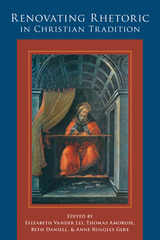 Renovating Rhetoric in Christian Tradition
Elizabeth Vander Lei
University of Pittsburgh Press, 2014 Throughout history, determined individuals have appropriated and reconstructed rhetorical and religious resources to create effective arguments. In the process, they have remade both themselves and their communities. This edited volume offers notable examples of these reconstructions, ranging from the formation of Christianity to questions about the relationship of religious and academic ways of knowing.
The initial chapters explore historic challenges to Christian doctrines and gender roles. Contributors examine Mormon women’s campaigns for the recognition of their sect, women’s suffrage, and the statehood of Utah; the Seventh-day Adventist challenge to the mainstream designation of Sunday as the Sabbath; a female minister who confronted the gendered tenets of early Methodism and created her own sacred spaces; women who, across three centuries, fashioned an apostolic voice of humble authority rooted in spiritual conversion; and members of the Woman’s Foreign Missionary Society of the Methodist Episcopal Church, who redefined notions of women’s intellectual capacity and appropriate fields for work from the Civil War through World War II.
Considering contemporary learning environments, other contributors explore resources that can help faculty and students of composition and rhetoric consider more fully the relations of religion and academic work. These contributors call upon the work of theologians, philosophers, and biblical scholars to propose strategies for building trust through communication.
The final chapters examine the writings of Apostle Paul and his use of Jewish forms of argumentation and provide an overarching discussion of how the Christian tradition has resisted rhetorical renovation, and in the process, missed opportunities to renovate spiritual belief.
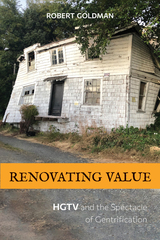 Renovating Value: HGTV and the Spectacle of Gentrification
Robert Goldman
Temple University Press, 2021 HGTV has perfected stories about creating and capturing value in the housing market. But according to Robert Goldman, this lifestyle network’s beloved flagship programs, Flip or Flop, Property Brothers, and Fixer Upper—where people revitalize modern spaces and reinvent property values—offer “fairy tales” in the wake of the 2008 economic crisis. The cable channel’s seductive, bingeable programs may show how to find and extract value from properties, but, in fact, they insidiously ignore the realities of the real estate and mortgage markets, housing inequality, gentrification, economic insecurity, and even homelessness. In effect, HGTV has turned house flipping into a master narrative about getting ahead in America during an era of otherwise uneasy economic prospects. HGTV pictures its insular moral economy as an alternative to a crisis-ridden neoliberal finance system that shaped landscapes of foreclosure and financial uncertainty for millions of households. Renovating Value explores the circuitry of consumer credit and debt, and a rent-gap model of gentrification that charts a path to the rehabilitation of Value. Goldman shrewdly critiques the aspirational myth of adding value to a home simply by using imagination, elbow grease, and aesthetic know-how.
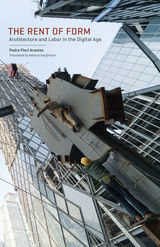 The Rent of Form: Architecture and Labor in the Digital Age
Pedro Fiori Arantes
University of Minnesota Press, 2019 A critique of prominent architects’ approach to digitally driven design and labor practices over the past two decades
With the advent of revolutionary digital design and production technologies, contemporary architects and their clients developed a taste for dramatic, unconventional forms. Seeking to amaze their audiences and promote their global brands, “starchitects” like Herzog & de Meuron and Frank Gehry have reaped substantial rewards through the pursuit of spectacle enabled by these new technologies. This process reached a climax in projects like Gehry’s Guggenheim Bilbao and the “Bilbao effect,” in which spectacular architectural designs became increasingly sought by municipal and institutional clients for their perceived capacity to enhance property values, which author Pedro Fiori Arantes calls the “rent of form.”
Analyzing many major international architectural projects of the past twenty years, Arantes provides an in-depth account of how this “architecture of exception” has come to dominate today’s industry. Articulating an original, compelling critique of the capital and labor practices that enable many contemporary projects, Arantes explains how circulation (via image culture), consumption (particularly through tourism), the division of labor, and the distribution of wealth came to fix a certain notion of starchitecture at the center of the industry. Significantly, Arantes’s viewpoint is not that of Euro-American capitalism. Writing from the Global South, this Brazilian theorist offers a fresh perspective that advances ideas less commonly circulated in dominant, English-language academic and popular discourse. Asking key questions about the prevailing logics of finance capital, and revealing inconvenient truths about the changing labor of design and the treatment of construction workers around the world, The Rent of Form delivers a much-needed reevaluation of the astonishing buildings that have increasingly come to define world cities.
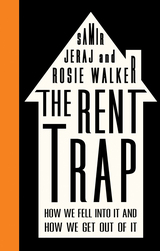 The Rent Trap: How We Fell into It and How We Get Out of It
Samir Jeraj and Rosie Walker
Pluto Press, 2016 Deregulation, revenge evictions, corruption, and day-to-day instability: these are realities becoming ever more familiar for those of us who rent our homes or apartments. At the same time, house prices are skyrocketing and the promise of homeownership is now an impossible dream for many. This is the rent-trap, an inescapable consequence of market-induced inequality.
Samir Jeraj and Rosie Walker offer the first in-depth case study of the private rental sector in the United Kingdom, exploring the rent-trap injustices in a first-world economy and exposing the powers that conspire to oppose regulation. A quarter of British MPs are landlords; rent strike is almost impossible; and sudden evictions are growing. Nevertheless, drawing on inspiration from movements in the United Kingdom, continental Europe, and elsewhere, The Rent Trap shows how people are starting to fight back against the financial burdens, health risks, and vicious behavior of landlords, working to create a world of fairer, safer housing for all—lessons that extend well beyond the borders of the UK.
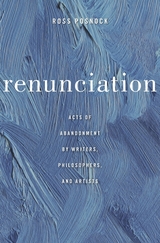 Renunciation: Acts of Abandonment by Writers, Philosophers, and Artists
Ross Posnock
Harvard University Press, 2016 Renunciation as a creative force in the careers of writers, philosophers, and artists is the animating idea behind Ross Posnock’s new book. Taking up acts of abandonment, rejection, and refusal that have long baffled critics, he shows how renunciation has reframed the relationship of artists and intellectuals to society in productive and unpredictable ways.
In a work of remarkable synthesis that includes traditions and genres from antiquity to postmodernity, Posnock discovers connections among disparate figures ranging from Lao Tzu to Dave Chappelle and Bob Dylan. The thread running through these acts of renunciation, he argues, is an aesthetic and ethical resistance to the demand that one’s words and actions be straightforward and immediately comprehensible. Modern art in particular valorizes the nonconceptual and the intuitive, seeking to make silence articulate and incompletion fertile.
Renouncers reject not only artistic and scholarly conventions but also the public roles that attend them. Wittgenstein, Rimbaud, and Glenn Gould brazenly flouted professional and popular expectations, demanding that philosophy, poetry, music play by new rules. Emerson and Nietzsche severed all institutional ties, while William James waged a guerrilla campaign from his post at Harvard against what all three considered to be the enemy: the pernicious philosophical insistence on rationality. Posnock also examines renunciations in light of World War II—the veterans J. D. Salinger and George Oppen, and the Holocaust survivor Paul Celan—while a fourth cluster includes the mystic Thomas Merton and the abstract painters Ad Reinhardt and Agnes Martin.
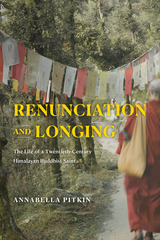 Renunciation and Longing: The Life of a Twentieth-Century Himalayan Buddhist Saint
Annabella Pitkin
University of Chicago Press, 2022 Through the eventful life of a Himalayan Buddhist teacher, Khunu Lama, this study reimagines cultural continuity beyond the binary of traditional and modern.
In the early twentieth century, Khunu Lama journeyed across Tibet and India, meeting Buddhist masters while sometimes living, so his students say, on cold porridge and water. Yet this elusive wandering renunciant became a revered teacher of the Fourteenth Dalai Lama. At Khunu Lama’s death in 1977, he was mourned by Himalayan nuns, Tibetan lamas, and American meditators alike. The many surviving stories about him reveal significant dimensions of Tibetan Buddhism, shedding new light on questions of religious affect and memory that reimagines cultural continuity beyond the binary of traditional and modern.
In Renunciation and Longing, Annabella Pitkin explores devotion, renunciation, and the teacher-student lineage relationship as resources for understanding Tibetan Buddhist approaches to modernity. By examining narrative accounts of the life of a remarkable twentieth-century Himalayan Buddhist and focusing on his remembered identity as a renunciant bodhisattva, Pitkin illuminates Tibetan and Himalayan practices of memory, affective connection, and mourning. Refuting long-standing caricatures of Tibetan Buddhist communities as unable to be modern because of their religious commitments, Pitkin shows instead how twentieth- and twenty-first-century Tibetan and Himalayan Buddhist narrators have used themes of renunciation, devotion, and lineage as touchstones for negotiating loss and vitalizing continuity.
 Renunciation as a Tragic Focus: A Study of Five Plays
Eugene H. Falk
University of Minnesota Press, 1954
Renunciation as a Tragic Focus was first published in 1954. Minnesota Archive Editions uses digital technology to make long-unavailable books once again accessible, and are published unaltered from the original University of Minnesota Press editions.
Norman J. DeWitt explains, in an introduction to this volume, that these essays are written in terms of a personal humanism.
"Personal humanism," Mr. DeWitt says, "comes from an awareness of a world in which pain is real, and it leads to the traditional virtues of wisdom and justice, terms that are seldom heard in academic circles today."
Traditionalist though he may be in the basic virtues, Professor Falk, in these studies, challenges a traditional concept. By analyzing the conflicting values in five plays, he demonstrates why the traditional definition of tragedy should be broadened. He shows that martyrdom and self-sacrifice, when they involve an act of renunciation, should be included in the realm of tragedy. The older concept ruled out these elements by its insistence that the death of a martyr is not the defeat but the victory of an individual.
The five plays studied here are Sophocles' Oedipus the King and Antigone,Corneille's Polyeucte,Maeterlinck's Aglavaine and Selysette,and Samain's Polypheme.In all of them, the tragic experience of man's defeat in an unequal struggle against destiny is examined in the light of the conflict between his worldly and his spiritual aspirations. The plays illustrate the tenet that renunciation becomes a tragic experience only if the character's devotion to both worldly and spiritual values is genuine. In succession, the five plays represent a progression from authentic to seeming renunciation.
The studies are pertinent to many interests in the broad academic field of the humanities as well as to such specific disciplines as comparative literature, drama, French literature, and the classics.
Renunciation: POEMS
Corey Marks
University of Illinois Press, 2000 Renunciation introduces a powerful new poet whose work, though it treads the ground of silence and loss, bears a redemptive grace. Disquieting and healing, Corey Marks's poems hold to "a moment when possibility / bristles so close it holds a shape in the air."
The sculptor Gislebertus, Doubting Thomas, Theseus, and John Keats share space in the pages of Renunciation with a survivor of the bomb in Hiroshima, a blind girl in the South American jungle, and DeSoto's thirteen swine in the hold of a ship bound for America. Rich with almost palpable nuances of light and sound, Marks's lyric meditations unravel a constant play of loss and continuation, "mending sense from spare threads" and hovering over connections undone even as they are made.
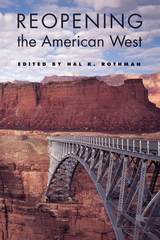 Reopening the American West
Edited by Hal K. Rothman
University of Arizona Press, 1998 Take a good look at the American West and you'll see that the frontier is undergoing constant changes—not only changes made to the land but also changes in attitudes about the land held by the people who live there.
In this book Mike Davis, Stephen Pyne, William deBuys, Donald Worster, Dan Flores, and others re-examine the relationship between people and the environment in the American West over five hundred years, from the legacy of Coronado's search for the Cities of Gold to the social costs of tourism and gaming inflicted by modern adventurers. By exploring places in the West, aspects of the region's past, and ways of understanding some of its pressing issues, the authors foster a better understanding of how people interact and perceive land.
Reopening the American West takes a fresh approach to the history of the region, examining the premises of earlier scholars as well as those who have redefined the study of the West over the past two decades. It combines provocative essays with insightful analyses to address issues that are representative of the West in the twentieth century—multiculturalism, water issues, resource exploitation—and to reopen the West for all readers interested in new ways of looking at its wide-open spaces.
Contents:
Places
Dreams of Earth, William deBuys
Environmentalism and Multiculturalism, Dan L. Flores
Pyre on the Mountain, Stephen J. Pyne
Las Vegas Versus Nature, Mike Davis
Pasts
The Legacy of John Wesley Powell, Donald Worster
Pokey’s Paradox: Tourism and Transformation on the Western Navajo Reservation, Hal K. Rothman
Negotiating National Identity: Western Tourism and "See American First," Marguerite Schaffer
Understanding
Place Humanists at the Headgates, Helen Ingram
Tapping the Rockies: Resource Exploitation and Conservation in the Intermountain West, Char Miller
The Meaning of Place: Reimagining Community in a Changing West, Robert Gottlieb
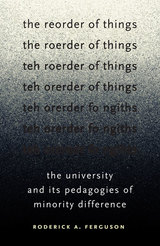 The Reorder of Things: The University and Its Pedagogies of Minority Difference
Roderick A. Ferguson
University of Minnesota Press, 2012 In the 1960s and 1970s, minority and women students at colleges and universities across the United States organized protest movements to end racial and gender inequality on campus. African American, Chicano, Asia American, American Indian, women, and queer activists demanded the creation of departments that reflected their histories and experiences, resulting in the formation of interdisciplinary studies programs that hoped to transform both the university and the wider society beyond the campus. In The Reorder of Things, however, Roderick A. Ferguson traces and assesses the ways in which the rise of interdisciplines—departments of race, gender, and ethnicity; fields such as queer studies—were not simply a challenge to contemporary power as manifest in academia, the state, and global capitalism but were, rather, constitutive of it. Ferguson delineates precisely how minority culture and difference as affirmed by legacies of the student movements were appropriated and institutionalized by established networks of power. Critically examining liberationist social movements and the cultural products that have been informed by them, including works by Adrian Piper, Toni Cade Bambara, Jhumpa Lahiri, and Zadie Smith, The Reorder of Things argues for the need to recognize the vulnerabilities of cultural studies to co-option by state power and to develop modes of debate and analysis that may be in the institution but are, unequivocally, not of it.
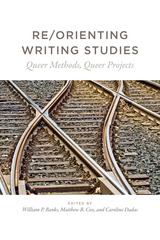 Re/Orienting Writing Studies: Queer Methods, Queer Projects
William P. Banks
Utah State University Press, 2018 Re/Orienting Writing Studies is an exploration of the intersections among queer theory, rhetoric, and research methods in writing studies. Focusing careful theoretical attention on common research practices, this collection demonstrates how queer rhetorics of writing/composing, textual analysis, history, assessment, and embodiment/identity significantly alter both methods and methodologies in writing studies. The chapters represent a diverse set of research locations and experiences from which to articulate a new set of innovative research practices.
While the humanities have engaged queer theory extensively, research methods have often been hermeneutic or interpretive. At the same time, social science approaches in composition research have foregrounded inquiry on human participants but have often struggled to understand where lesbian, gay, bisexual, transgender, and queer people fit into empirical research projects. Re/Orienting Writing Studies works at the intersections of humanities and social science methodologies to offer new insight into using queer methods for data collection and queer practices for framing research.
Contributors: Chanon Adsanatham, Jean Bessette, Nicole I. Caswell, Michael J. Faris, Hillery Glasby, Deborah Kuzawa, Maria Novotny, G Patterson, Stacey Waite, Stephanie West-Puckett
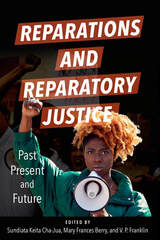 Reparations and Reparatory Justice: Past, Present, and Future
Edited by Sundiata Keita Cha-Jua, Mary Frances Berry, and V. P. Franklin
University of Illinois Press, 2024 Changes at the global, federal, state, and municipal level are pushing forward the reparations movement for people of African descent. The distinguished editors of this volume have gathered works that chronicle the historical movement for reparations both in the United States and around the world. Sharing a focus on reparations as an issue of justice, the contributors provide a historical primer of the movement; introduce the philosophical, political, economic, legal and ethical issues surrounding reparations; explain why government, corporations, universities, and other institutions must take steps to rehabilitate, compensate, and commemorate African Americans; call for the restoration of Black people’s human and civil rights and material and psychological well-being; lay out specific ideas about how reparations can and should be paid; and advance cutting-edge interpretations of the complex long-lasting effects that enslavement, police and vigilante actions, economic discrimination, and other behaviors have had on people of African descent. Groundbreaking and innovative, Reparations and Reparatory Justice offers a multifaceted resource to anyone wishing to explore a defining moral issue of our time. Contributors: Dedrick Asante-Muhammad, Hilary McDonald Beckles, Mary Frances Berry, Sundiata Keita Cha-Jua, Chuck Collins, Ron Daniels, V. P. Franklin, Danny Glover, Adom Gretachew, Charles Henry, Kamm Howard, Earl Ofari Hutchinson, Jesse Jackson, Sr., Brian Jones, Sheila Jackson Lee, James B. Stewart, the Movement 4 Black Lives, the National African American Reparations Commission, the National Coalition of Blacks for Reparations in America, the New Afrikan Peoples Organization/Malcolm X Grassroots Movement
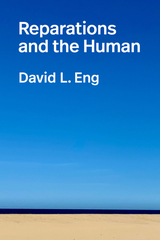 Reparations and the Human
David L. Eng
Duke University Press, 2025 The Holocaust and the atomic bombings of Hiroshima and Nagasaki invoked in graphic terms the specter of total human destruction. In response, a new international order of reparations and human rights arose from the ashes of World War II. This legal regime sought to subrogate the sovereignty of the nation-state in order to defend the sovereignty of the human being. While the Holocaust’s history is settled—Nazis were perpetrators and Jews were victims—there remains little historical consensus as to the victims and perpetrators of the atomic bombings. In Reparations and the Human, David L. Eng investigates a history of reparations across the Transpacific. He analyzes how concepts of reparation established during colonial settlement and the European Enlightenment shape contemporary configurations of the human and human rights, determining who can be recognized as victims, who must be seen as perpetrators, and who deserves repair. As demands for reparations now occupy center stage in debates concerning unresolved legacies of dispossession and Transatlantic slavery, Eng considers how the Cold War Transpacific provides a limit case for the politics of repair and definitions of the human.
 Repatriating Polanyi: Market Society in the Visegrád States
Chris Hann
Central European University Press, 2019 Karl Polanyi’s “substantivist” critique of market society has found new popularity in the era of neoliberal globalization. The author reclaims this polymath for contemporary anthropology, especially economic anthropology, in the context of Central Europe, where Polanyi (1886–1964) grew up. The Polanyian approach illuminates both the communist era, in particular the “market socialist” economy which evolved under János Kádár in Hungary, as well as the post-communist transformations of property relations, civil society and ethno-national identities throughout the region. Hann’s analyses are based primarily on his own ethnographic investigations in Hungary and South-East Poland. They are pertinent to the rise of neo-nationalism in those countries, which is theorized as a malign countermovement to the domination of the market. At another level, Hann’s adaptation of Polanyi’s social philosophy points beyond current political turbulence to an original concept of “social Eurasia”.
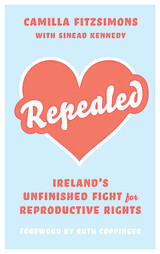 Repealed: Ireland’s Unfinished Fight for Reproductive Rights
Camilla Fitzsimons
Pluto Press, 2021 *Winner of the James S. Donnelly, Sr. Prize 2022* In Ireland, 2018, a constitutional ban that equated the life of a woman to the life of a fertilized embryo was overturned and abortion was finally legalized. This victory for the Irish feminist movement set the country alight with euphoria. But the celebrations were short-lived - the new legislation turned out to be one of the most conservative in Europe. This book tells the story of the ‘Repeal’ campaign through the lens of the activists. The authors trace the shocking history of the origins of the eighth amendment, which was drawn up in fear of a tide of liberal reforms across Europe. They draw out the lessons learned through the decades and from the groundbreaking campaign in 2018, which was an inspiring example of modern grassroots activism. They also recount the tensions between a medicalized approach and reproductive justice approach to abortion, as well as the harsh effect of the campaign on the health of activists. Grounded in a radical feminist politics, this book is an honest and inspirational account of a movement that is only just beginning.
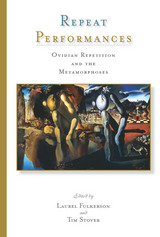 Repeat Performances: Ovidian Repetition and the Metamorphoses
Edited by Laurel Fulkerson and Tim Stover
University of Wisconsin Press, 2016 Although repetition is found in all ancient literary genres, it is especially pervasive in epic poetry. Ovid’s Metamorphoses exploits this dimension of the epic genre to a great extent; past critics have faulted it as too filled with recycled themes and language. This volume seeks a deeper understanding of Ovidian repetitiveness in the context of new scholarship on intertextuality and intratextuality, examining the purposeful reuse of previous material and the effects produced by a text’s repetitive gestures.
A shared vision of the possibilities of Latin epic poetry unites the essays, as does a series of attempts to realize those opportunities. Some of the pieces represent a traditional vein of allusion and intertextuality; others are more innovative in their approaches. Each, in a sense, stands as a placeholder for a methodology of theorizing the repetitive practices of poetry, of epic, and of Ovid in particular.
Contributors: Antony Augoustakis, Neil W. Bernstein, Barbara Weiden Boyd, Andrew Feldherr, Peter Heslin, Stephen Hinds, Sharon L. James, Alison Keith, Peter E. Knox, Darcy Krasne
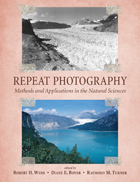 Repeat Photography: Methods and Applications in the Natural Sciences
Edited by Robert H. Webb, Diane E. Boyer, and Raymond M. Turner
Island Press, 2010 First developed in the 1880s as a way to monitor glaciers in Europe, repeat photography —the practice of taking photographs at different points in times from the same physical vantage point—remains an essential and cost-effective technique for scientists and researchers working to track and study landscape change.
This volume explores the technical and geographic scope of this important technique, focusing particularly on the intertwined influences of climatic variation and land-use practices in sculpting landscapes. Contributors offer a broad-perspective review of the state-of-the-art of repeat photography, with twenty-three chapters written by researchers around the globe who have made use of repeat photography in their work. Topics addressed include
the history of repeat photography
techniques for creating and analyzing repeat photographs
applications in the geosciences
applications in population ecology
applications in ecosystem change
cultural applications
Repeat Photography demonstrates the wide range of potential applications, examines new techniques for acquiring data from repeat photography, and clearly shows that repeat photography remains a valuable and efficient means of monitoring change in both developed and developing regions. Over one hundred sets of photographs, including thirty-two pages of color photos, serve as examples.
Recent concerns about climate change and its effects on natural landscapes, combined with ongoing concerns about land-use practices, make this state-of-the-art review a timely contribution to the literature.
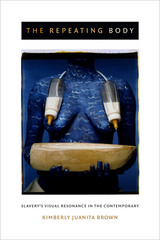 The Repeating Body: Slavery's Visual Resonance in the Contemporary
Kimberly Juanita Brown
Duke University Press, 2015 Haunted by representations of black women that resist the reality of the body's vulnerability, Kimberly Juanita Brown traces slavery's afterlife in black women's literary and visual cultural productions. Brown draws on black feminist theory, visual culture studies, literary criticism, and critical race theory to explore contemporary visual and literary representations of black women's bodies that embrace and foreground the body's vulnerability and slavery's inherent violence. She shows how writers such as Gayl Jones, Toni Morrison, Audre Lorde, and Jamaica Kincaid, along with visual artists Carrie Mae Weems and María Magdalena Campos-Pons, highlight the scarred and broken bodies of black women by repeating, passing down, and making visible the residues of slavery's existence and cruelty. Their work not only provides a corrective to those who refuse to acknowledge that vulnerability, but empowers black women to create their own subjectivities. In The Repeating Body, Brown returns black women to the center of discourses of slavery, thereby providing the means with which to more fully understand slavery's history and its penetrating reach into modern American life.
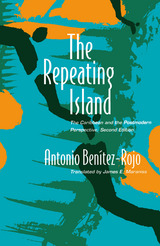 The Repeating Island: The Caribbean and the Postmodern Perspective
Antonio Benitez-Rojo
Duke University Press, 1996 In this second edition of The Repeating Island, Antonio Benítez-Rojo, a master of the historical novel, short story, and critical essay, continues to confront the legacy and myths of colonialism. This co-winner of the 1993 MLA Katherine Singer Kovacs Prize has been expanded to include three entirely new chapters that add a Lacanian perspective and a view of the carnivalesque to an already brilliant interpretive study of Caribbean culture. As he did in the first edition, Benítez-Rojo redefines the Caribbean by drawing on history, economics, sociology, cultural anthropology, psychoanalysis, literary theory, and nonlinear mathematics. His point of departure is chaos theory, which holds that order and disorder are not the antithesis of each other in nature but function as mutually generative phenomena. Benítez-Rojo argues that within the apparent disorder of the Caribbean—the area’s discontinuous landmasses, its different colonial histories, ethnic groups, languages, traditions, and politics—there emerges an “island” of paradoxes that repeats itself and gives shape to an unexpected and complex sociocultural archipelago. Benítez-Rojo illustrates this unique form of identity with powerful readings of texts by Las Casas, Guillén, Carpentier, García Márquez, Walcott, Harris, Buitrago, and Rodríguez Juliá.
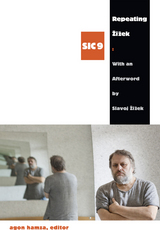 Repeating Žižek
Agon Hamza, ed.
Duke University Press, 2015 Repeating Žižek offers a serious engagement with the ideas and propositions of philosopher Slavoj Žižek. Often subjecting Žižek's work to a Žižekian analysis, this volume's contributors consider the possibility (or impossibility) of formalizing Žižek's ideas into an identifiable philosophical system. They examine his interpretations of Hegel, Plato, and Lacan, outline his debates with Badiou, and evaluate the implications of his analysis of politics and capitalism upon Marxist thought. Other essays focus on Žižek's approach to Christianity and Islam, his "sloppy" method of reading texts, his relation to current developments in neurobiology, and his theorization of animals. The book ends with an afterword by Žižek in which he analyzes Shakespeare's and Beckett's plays in relation to the subject. The contributors do not reach a consensus on defining a Žižekian school of philosophy—perhaps his idiosyncratic and often heterogeneous ideas simply resist synthesis—but even in their repetition of Žižek, they create something new and vital.
Contributors. Henrik Jøker Bjerre, Bruno Bosteels, Agon Hamza, Brian Benjamin Hansen, Adrian Johnston, Katja Kolšek, Adam Kotsko, Catherine Malabou, Benjamin Noys, Geoff Pfeifer, Frank Ruda, Oxana Timofeeva, Samo Tomšic, Gabriel Tupinambá, Fabio Vighi, Gavin Walker, Sead Zimeri, Slavoj Žižek
 Repercussions of the Kalam in Jewish Philosophy
Harry Austryn Wolfson
Harvard University Press, 1979 In his monumental Philosophy of the Kalam the late Harry Wolfson—truly the most accomplished historian of philosophy in our century—examined the early medieval system of Islamic philosophy. He studies its repercussions in Jewish thought in this companion book—an indispensable work for all students of Jewish and Islamic traditions.
Wolfson believed that ideas are contagious, but that for beliefs to catch on from one tradition to another the recipients must be predisposed, susceptible. Thus he is concerned here not so much with the influence of Islamic ideas as with Jewish elaboration, adaptation, qualification, and criticism of them. To this end he examines passages reflecting Kalam views by a wide variety of Jewish thinkers, including Isaac Israeli, Judah Halevi, Abraham ibn Ezra, and Maimonides. As always in Wolfson's work, two aspects are apparent: the special dimensions of Jewish thought as well as its relation to other traditions. And as always his prose is both graceful and precise.
 Repertoires and Cycles of Collective Action
Mark Traugott, editor
Duke University Press, 1994 The modern era has generated a bewildering profusion of popular protest including widespread social movements and sporadic revolutionary upheaval. Despite the seemingly chaotic character of such collective action, social scientists have increasingly noted the remarkable regularities exhibited by even the most tumultuous social change. In this volume, sociologists, political scientists, and historians come together to assess the complementary concepts of repertoires and cycles as tools for illuminating the consistent patterns that emerge from the apparent chaos. The significance of repertoires—recurrent forms or tactics of social protest— is explored in an essay on eighteenth- and nineteenth-century Britain by the originator of the concept, Charles Tilly. Sidney Tarrow, whose work has most directly linked the concept of repertoires with that of cycles—the recurrent peaks and troughs in the historical incidence of collective action—contributes an essay that focuses on twentieth-century Italy. Other essays investigate the rhythms and logic of social change in contexts as diverse as sixteenth- through nineteenth-century Japan, nineteeth-century Europe, and twentieth-century America. Through inquiries into the consequences of violent repression for social mobilization, the struggle to control the linguistic terms of social conflict, the unacknowledged antecedents of contemporary movements, and the importance of "movement families," this volume demonstrates the usefulness of these two concepts and defines the relationship between them. Collected from past issues of Social Science History, with a new introduction and two new essays, Repertoires and Cycles of Collective Action will reward an interdisciplinary audience of readers with the extraordinary vitality that emerges from this rich blend of historical perspectives. Contributors. Charles Brockett, Craig Calhoun, Doug McAdam, Marc Steinberg, Sidney Tarrow, Charles Tilly, Mark Traugott, James White
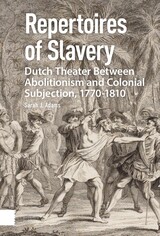 Repertoires of Slavery: Dutch Theater Between Abolitionism and Colonial Subjection, 1770-1810
Sarah Adams
Amsterdam University Press, 2023 Through the lens of a hitherto unstudied repertoire of Dutch abolitionist theatre productions, Repertoires of Slavery prises open the conflicting ideological functions of antislavery discourse within and outside the walls of the theatre and examines the ways in which abolitionist protesters wielded the strife-ridden question of slavery to negotiate the meanings of human rights, subjecthood, and subjection. The book explores how dramatic visions of antislavery provided a site for (re)mediating a white metropolitan—and at times a specifically Dutch—identity. It offers insight into the late-eighteenth- and early-nineteenth-century theatrical modes, tropes, and scenarios of racialised subjection and considers them as materials of the “Dutch cultural archive,” or the Dutch “reservoir” of sentiments, knowledge, fantasies, and beliefs about race and slavery that have shaped the dominant sense of the Dutch self up to the present day.
Repertory of Shakespeare's Company, 1594–1613
Roslyn Lander Knutson
University of Arkansas Press, 1991 Knutson demystifies Shakespeare and his company by providing a clear vision of the dynamics of repertory management and play-going in Shakespeare's England.
Repetition
Rebecca Reilly
Four Way Books, 2015 Repetition is a poetic memoir of a daughter’s grief after her father’s death, as told to a loved one. These meditative prose poems journey through Paris, New York and Berlin on bike rides “to watch the tower sparkle in the distance” and on walks “past the zoo in the dark, the animals calling.” Paul Celan and Gertrude Stein accompany the daughter through her grief until the speaker can finally say, “it’s enough—you can go now.”
 Replace the State: How to Change the World When Elections and Protests Fail
Sasha Davis
University of Minnesota Press, 2025 A practical call to action against oppression
Across the globe, millions of people have participated in protests and marches, donated to political groups, or lobbied their representatives with the aim of creating lasting social change, overturning repressive laws, or limiting environmental destruction. Yet very little seems to improve for those affected by rapacious governments. Replace the State brings new hope for social justice movements by looking to progressive campaigns that have found success by unconventional, and more direct, means. Sasha Davis, an activist and scholar of radical environmental advocacy, focuses on the strategies of movements, many of them Indigenous, that have occupied contested sites and demonstrated their effectiveness at managing or governing them. Including case studies of resistance to development on Indigenous lands in Hawai‘i, nuclear testing in the Nevada desert, and the U.S. military occupation of Okinawa, he offers insight and direction for activists, students, academics, and others dedicated to protecting and improving the well-being of their communities and beyond. It would be easy to succumb to pessimism and political apathy in the face of governing institutions that are increasingly unresponsive to calls for change and repressive in response to protest, even as they violate human rights, ignore existential climate catastrophes, and concentrate power into fewer and fewer hands. Instead, Davis finds inspiration for genuine political change through social movements that are successfully “replacing the state” and taking over the day-to-day governance of threatened places. From contesting environmental abuse to reasserting Indigenous sovereignty, these social movements demonstrate how people can collectively wrest control over their communities from oppressive governments and manage them with a more egalitarian ethics of care. Retail e-book files for this title are screen-reader friendly with images accompanied by short alt text and/or extended descriptions.
Replaceable You: Engineering the Body in Postwar America
David Serlin
University of Chicago Press, 2004 After World War II, the United States underwent a massive cultural transformation that was vividly realized in the development and widespread use of new medical technologies. Plastic surgery, wonder drugs, artificial organs, and prosthetics inspired Americans to believe in a new age of modern medical miracles. The nationalistic pride that flourished in postwar society, meanwhile, encouraged many Americans to put tremendous faith in the power of medicine to rehabilitate and otherwise transform the lives and bodies of the disabled and those considered abnormal. Replaceable You revisits this heady era in American history to consider how these medical technologies and procedures were used to advance the politics of conformity during the 1950s.
 Replacement Parts: The Ethics of Procuring and Replacing Organs in Humans
Arthur L. Caplan, James J. McCartney, and Daniel P. Reid, Editors
Georgetown University Press, 2016 In Replacement Parts, internationally recognized bioethicist Arthur L. Caplan and coeditors James J. McCartney and Daniel P. Reid assemble seminal writings from medicine, philosophy, economics, and religion that address the ethical challenges raised by organ transplantation. Caplan's new lead essay explains the shortfalls of present policies. From there, book sections take an interdisciplinary approach to fundamental issues like the determination of death and the dead donor rule; the divisive case of using anencephalic infants as organ donors; the sale of cadaveric or live organs; possible strategies for increasing the number of available organs, including market solutions and the idea of presumed consent; and questions surrounding transplant tourism and "gaming the system" by using the media to gain access to organs. Timely and balanced, Replacement Parts is a first-of-its-kind collection aimed at surgeons, physicians, nurses, and other professionals involved in this essential lifesaving activity that is often fraught with ethical controversy.
 Replacing Home: From Primordial Hut to Digital Network in Contemporary Art
Jennifer Johung
University of Minnesota Press, 2011 From property deeds to shipping containers to wearable shelters to virtual spaces: what does it mean to draw a spatial boundary? To be at home? In a world in which notions of place are constantly changing, Jennifer Johung looks at new constructions of staying in place—in contemporary site-specific art, digital media, portable architecture, and various other imaginable shelters and sites. Replacing Home suggests that while “place” may no longer be a sustainable category, being in place and belonging at home are nonetheless possible. By emphasizing reusability rather than fixed constructions, art and architecture together propose various systems of replacing home in which sites can be revisited, material structures can be renewed, and dwellers can come back into contact over time. Bringing together a range of objects and events, Johung considers the structural replacements of home as evident in artistic analogies of the prehistoric hut, modular homes, transformable garments, and digitally networked sites. In charting these intersections between contemporary art and architecture, Replacing Home introduces a new framework for reconceptualizing spatial situation; at the same time, it presents a new way to experience being and belonging within our globally expanded environments.
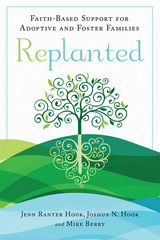 Replanted: Faith-Based Support for Adoptive and Foster Families
Jenn Ranter Hook
Templeton Press, 2019 Many people embark on the journey of adoption and foster care but are unprepared for the challenges that await them along the way. Replanted takes an honest look at the joys and hardships that come with choosing this journey and provides a model of faith-based support made up of three parts to help families thrive: Soil, Sunlight, and Water. - Soil, or emotional support, addresses the need for grace-filled settings where families can connect with other families who understand their experience.
- Sunlight, or informational support, focuses on obtaining helpful training to raise children who may have unique needs or challenges.
- Water, or tangible support, deals with concrete resources such as medical care, child care, and financial support.
Throughout the book, the Replanted model is brought to life by stories and examples based on the clinical work and personal experiences of the authors. Their candid insight will serve families who are actively involved in adoption or foster care, as well as people who are eager to help support those families. Replanted affirms that with the right support system in place, parents can answer this sacred call not only with open hearts but also with their eyes wide open.
 Replaying Communism: Trauma and Nostalgia in European Cultural Production
Lucy Jeffery
Central European University Press, 2026 Repercussions of communism are still felt throughout Central and Eastern Europe. In fact, specters of communism remain vivid enough to inspire a wide range of contemporary cultural production, from video games to museum exhibits. This volume demonstrates how the region remains in a state of transitioning away from communism, not having secured a fully post-communist identity.
The volume adopts an interdisciplinary approach to extend debates on the lasting impact of the communist era across Central and Eastern Europe with chapters thematically threaded through concepts including curation, immersion, interaction, humor and authenticity. A ‘trauma/nostalgia paradigm’ emerges as the tissue connecting the plurality of post-communist efforts employed to address the region’s contested pasts. Twelve original essays by contributors from both ‘inside’ and ‘outside’ the region detail how twenty-first-century cultural productions reengage the communist past. The impact of this past is seen as fundamental to understanding and shaping Central and Eastern European identities.
 Replaying Marc Anthony: Sonic, Political, and Cultural Resonances
Frances R. Aparicio
Ohio State University Press, 2025 Replaying Marc Anthony is the first book-length study of Marc Anthony’s cultural, aesthetic, and political contributions to Latinx popular music and Latinx communities. Despite the trivializing label of “Latino pop,” Anthony’s repertoire has had a tremendous impact on his audience, particularly within the US Latinx community. Considering his music outside of limiting frameworks imposed by the music industry, Frances R. Aparicio situates Anthony’s songs within specific musical genealogies and histories, demonstrating that his songs not only foster healing from colonial violence but also produce, textually and sonically, multiple identities that resonate with his listeners. Relistening to five of Anthony’s most canonical songs—“Preciosa,” “Hasta Que Te Conocí,” “I Need to Know,” “Aguanile,” and “Vivir Mi Vida”—Aparicio traces the circulation of these sonic texts, examining their social, cultural, gender, and political meanings. Among the myriad topics Marc Anthony’s music critically reflects on are Puerto Rican and Diasporican itinerant subjectivities, Blackness, environmental crises, MexiRican sonic exchanges, Latinidad, masculinities, struggles with belonging as an “American,” and Global South solidarities.
Replays, Rivalries, and Rumbles: The Most Iconic Moments in American Sports
Steven Gietschier
University of Illinois Press, 2017 What were the iconic sports moments of the last century? In Replays, Rivalries, and Rumbles , a team of sports aficionados climb onto their bar stools to address that never-solved but essential question. Triumphs and turning points, rivalries and record-setters ”each chapter tracks down the real story behind the epic moments and legendary careers sports fans love to debate. Topics include Abner Doubleday and the origins of baseball; the era-defining 1979 duel between Larry Bird and Magic Johnson; how Denver and Cleveland relive The Drive; the myths surrounding the Ali-Foreman Rumble in the Jungle; Billie Jean King's schooling of Bobby Riggs; the Miracle on Ice; and ESPN's conquest of the sports world. Filled with eye-opening lore and analysis, Replays, Rivalries, and Rumbles is an entertaining look at what we think we know about sports.
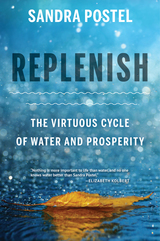 Replenish: The Virtuous Cycle of Water and Prosperity
Sandra Postel
Island Press, 2017 "Nothing is more important to life than water, and no one knows water better than Sandra Postel. Replenish is a wise, sobering, but ultimately hopeful book." —Elizabeth Kolbert
"Remarkable." —New York Times Book Review
"Clear-eyed treatise...Postel makes her case eloquently." —Booklist, starred review
"An informative, purposeful argument." —Kirkus
We have disrupted the natural water cycle for centuries in an effort to control water for our own prosperity. Yet every year, recovery from droughts and floods costs billions of dollars, and we spend billions more on dams, diversions, levees, and other feats of engineering. These massive projects not only are risky financially and environmentally, they often threaten social and political stability. What if the answer was not further control of the water cycle, but repair and replenishment?
Sandra Postel takes readers around the world to explore water projects that work with, rather than against, nature’s rhythms. In New Mexico, forest rehabilitation is safeguarding drinking water; along the Mississippi River, farmers are planting cover crops to reduce polluted runoff; and in China, “sponge cities” are capturing rainwater to curb urban flooding.
Efforts like these will be essential as climate change disrupts both weather patterns and the models on which we base our infrastructure. We will be forced to adapt. The question is whether we will continue to fight the water cycle or recognize our place in it and take advantage of the inherent services nature offers. Water, Postel writes, is a gift, the source of life itself. How will we use this greatest of gifts?
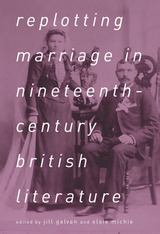 Replotting Marriage in Nineteenth-Century British Literature
Edited by Jill Galvan and Elsie Michie
Ohio State University Press, 2018
In Replotting Marriage in Nineteenth-Century British Literature, Jill Galvan and Elsie Michie bring together top Victorian scholars to scrutinize nineteenth-century marriage in incisive ways. The volume puts marriage in conversation with many aspects of culture, from education and anthropology to Darwinism and crime. It aims to widen the repertoire of critical questions we ask about how fiction represents conjugal coupling, employing, among other approaches, transimperial reading, queer theory, disability studies, and philosophies of the formation of human society. By paying close attention to elements of genre and narrative, moreover, the collection analyzes the story of marriage as formally and structurally diverse, rather than as a familiar plot line.
These essays point to nineteenth-century marriage studies as a new field of inquiry. With contributions by Ian Duncan, Elisha Cohn, Kathy Psomiades, Kelly Hager, Lauren Goodlad, Marlene Tromp, Sukanya Banerjee, Holly Furneaux, Talia Schaffer, and Helena Michie, and an afterword by Mary Jean Corbett, Replotting Marriage in Nineteenth-Century British Literature demonstrates how both established and developing fields can be brought to bear on a long-examined institution—ultimately prompting a rethinking of the nineteenth century itself.
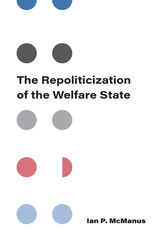 The Repoliticization of the Welfare State
Ian P. McManus
University of Michigan Press, 2022 The Repoliticization of the Welfare State grapples with the evolving nature of political conflict over social spending after the Great Recession. While the severity of the economic crisis encouraged strong social spending responses to protect millions of individuals, governments have faced growing pressure to reduce budgets and make deep cuts to the welfare state. Whereas conservative parties have embraced fiscal discipline and welfare state cuts, left-wing parties have turned away from austerity in favor of higher social spending. These political differences represent a return of traditional left-right beliefs over social spending and economic governance.
This book is one of the first to systematically compare welfare state politics before and after the Great Recession, arguing that a new and lasting post-crisis dynamic has emerged where political parties once again matter for social spending. At the heart of this repoliticization are intense ideological debates over market regulation, social inequality, redistribution, and the role of the state. The book analyzes social spending dynamics for 28 countries before and after the crisis. It also includes in-depth country case studies representing five distinct welfare state types: Germany, the United Kingdom, Sweden, Spain, and the Czech Republic.
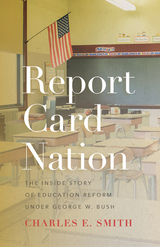 Report Card Nation: The Inside Story of Education Reform Under George W. Bush
Charles E. Smith
University of Tennessee Press, 2025 In Report Card Nation, Charles E. Smith offers an insider’s perspective on a pivotal moment in American education reform. In 2003, under the mandate of President George W. Bush’s No Child Left Behind initiative, Smith and a team of public servants brought the National Assessment of Educational Progress (NAEP)—also known as the Nation’s Report Card—to the forefront of federal education policy. Once a respected but relatively obscure measure, the NAEP quickly became the primary tool for assessing the successes and failures of public education across the country.
Smith's account details the complexities of implementing a national assessment program with far-reaching consequences under intense political scrutiny. As the Nation’s Report Card became a centerpiece of federal accountability measures, its impact reverberated throughout the educational landscape. While the reforms led to budgetary windfalls and documented successes in some areas, they also exposed deep divides, particularly in urban school districts where standardized testing policies contributed to school closures and increased private school enrollments.
Drawing on his thirty-two years in Tennessee state government and six years as executive director of the National Assessment Governing Board, Smith explores both the promises and the pitfalls of the No Child Left Behind era. He provides readers with an honest, behind-the-scenes account of the shifts in American education policy during this transformative decade, including the groundwork for implementation of Common Core standards. Smith’s clear-eyed, well-researched narrative provides an essential look at how national policy shaped local realities, and how one of the most controversial periods in public education still reverberates today.
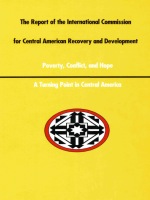 A Report of the International Commission for Central American Recovery and Development
William L. Ascher and Ann Hubbard, eds.
Duke University Press, 1989 The 1980s were one of the most turbulent decades in Central America’s history, a history that has been marked by more than its share of strife and upheaval. The wars, economic hardship, and political unrest and instability that have dominated news of the region have been years in the making, the products of flawed and inequitable economic, social, and political structures.
The International Commission for Central American Recovery and Development (ICCARD) was formed to provide a thorough diagnosis and analysis of Central America’s problems and to draft a comprehensive long-term strategy to move the region from decline to development. In this report ICCARD—through forty-five international experts in economics, public policy, management, and development it assembled for this purpose—attempts to rise above rhetoric and simplistic remedies to focus on well-reasoned, thorough, and realistic approaches to economic and social development.
This volume reviews the unequal access of marginal groups to political and economic participation, the precarious situation of Central American financial institutions, the international debt situation, the prospects for regional political and economic integration, and other aspects of regional development. Each of these challenges is addressed by specific recommendations to the Central American governments, the governments of the industrialized nations, and international organizations.
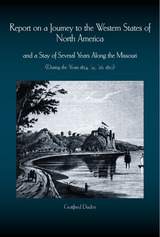 Report on a Journey to the Western States of North America: and a Stay of Several Years Along the Missouri (During the Years 1824-1827)
Gottfried Duden; James W. Goodrich, General Editor; George H. Kellner, Elsa Nagel, Adolf E. Schroeder, and W. M. Senner, Editors and Translators
University of Missouri Press, 1980 The mass migrations to the United States from Europe that began in the 1830s were strongly influenced by what is known today as emigration literature--travelers' writings about their experiences in the New World. Such accounts were particularly popular with German readers; over 150 examples of the genre were published in Germany between 1827 and 1856. Gottfried Duden's Report on a Journey to the Western States of North America, published in 1829, was one of the most influential of these books. The timing, format, coverage, and literary qualities of the Report, and its idyllic descriptions of pioneer farming in Missouri, combined to make it an instant success. It attracted thousands of Germans to the Midwest, and particularly to Missouri, the focus of Duden's account. This edited and annotated translation is the first complete version to be published in English. It provides for the general public and the professional historian a significant contribution to U.S. immigration history and a unique and delightful fragment of Missouri's rich German heritage. Duden presented his account in the form of personal letters, a style that helped make the book believable. The Mississippi- Missouri valley reminded him of his native Rhineland where the rivers facilitated trade and transportation, and fertile river bottomland offers the perfect environment for agriculture. Duden farmed the land he bought during his sojourn in Missouri, and his book includes meticulous descriptions of clearing, fencing, and harvesting. His pro-emigration bias, colored by the fact that he himself had been able to hire help on his Missouri farm, made his view of the farmer's life, it turned out, more idyllic than practical. Many would-be gentlemen farmers, inspired by his book to come to Missouri, found pioneer farming more strenuous than they had expected.
Report On Brunei In 1904: Mis Sea#74
M.S.H. Mcarthur
Ohio University Press, 1987 In 1904 the British Protectorate of Brunei had reached the nadir of its fortunes. Reduced to two small strips of territory, bankrupt, and threatened with takeover by the Rajah of Sarawak (Sir Charles Brooke), Brunei received M. S. H. McArthur who was dispatched to make recommendations for Brunei's future administration. As a result of McArthur’s Report on Brunei in 1904, the British government decided to underwrite the separate existence of the sultanate, thus giving a reprieve to the “dying kingdom.” The report is the most important document in the history of modern Brunei and is here annotated and given historical context by A. V. M. Horton.
Report on the Island and Diocese of Puerto Rico (1647)
Don Diego Torres y Vargas, Translated by Jaime R. Vidal
University of Scranton Press, 2010 Composed at the request of the Royal Spanish Chronicler of the Indies, Don Diego Torres y Vargas’s Report on the Island & Diocese of Puerto Rico was the first history of Puerto Rico written by a native of the Spanish island colony. Torres y Vargas, a fourth generation Puerto Rican and descendant of Ponce de Leon, records here the history of the Catholic Church in Puerto Rico as well as the political, social, military, economic, and natural history of the island. This translation—the first ever into English—includes three historical essays by eminent Puerto Rican and Latino Studies scholar Anthony Stevens-Arroyo and extensive translator notes to guide the reader through the realities of seventeenth-century Puerto Rican culture and society.
 Reportage in the Chinese-Speaking World
Edited by Charles A. Laughlin and Li Guo
University of Michigan Press, 2026 Reportage in the Chinese-Speaking World examines reportage as an important aesthetic form of cultural production in the Sinophone world. Originating as a proletarian fiction in interwar Europe, reportage spread around the world, coming into its own in the Sinophone world from the 1930s to today. Going beyond fact-based journalism, reportage is pursued through a variety of artistic forms and media, from nonfiction writing to photography to documentary film. Reportage’s plurimedial representations facilitate and amplify intersectional struggles against multiple forms of social and political oppression. Engaging its audiences in affective ethico-political exchanges with (human or nonhuman) subjects, reportage promotes audiences’ empathetic responses to the democratic appeals of marginalized groups whose status, identity, or situation manifest emergent ethical challenges in the society of their time.
This work offers new understandings of reportage’s dialectical relationship with its readership by evoking sympathetic identifications with personal contemplations of place, hearth, and senses of belonging. Covering a breadth of media across mainland China, Taiwan, and the Sinophone diaspora in the United States and Japan, this book examines how intermediality cultivates distinctive expressions in reportage, cross-cultural empathy, and ethico-political relationships between the reporter, photographer, filmmaker, and their surroundings.
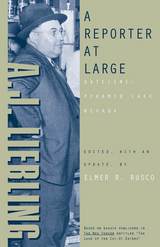 A Reporter At Large: Dateline: Pyramid Lake, Nevada
Aj Liebling
University of Nevada Press, 1999 In 1949, renowned journalist A. J. Liebling came to Reno to obtain a divorce, which required that he establish residency in Nevada for a period of six weeks. Liebling stayed at a guest ranch on the shores of Pyramid Lake. While there, his reporter’s curiosity was engaged by a bitter dispute raging between the Paiutes and non-Indian squatters who were claiming the most agriculturally productive lands of the reservation and the waters feeding the lake that was the economic and spiritual heart of the Paiutes’ ancient culture. Liebling recorded the litigation over the fate of the Pyramid Lake Reservation lands in a series of articles published in The New Yorker in 1955. Reprinted here in their entirety, the essays discuss the affair in detail, following it from the shores of the lake to the halls of Congress, and introducing readers to the colorful world of 1950s Nevada. This is a valuable record of one of Nevada’s most enduring and significant debates over the uses of the land and the precious water that nourishes it. Introduction by Elmer R. Rusco.
|
|
